- Site search

Traveling with your pet FAQ
For additional, more specific information on traveling with animals, including updated regulations, see Animal travel and transport .
What should I think about when deciding to travel with my pet?
There are numerous considerations you should take into account:
- Some pets cannot handle travel because of illness, injury, age or temperament.
- If your pet is not good with travel, you should consider a reliable pet-sitter or talk to your veterinarian about boarding facilities in your area.
- Make sure your pet has identification tags with up-to-date information.
- Having your pet implanted with a microchip can improve your chances of getting your pet back if it becomes lost. The microchip must be registered with your current contact information, including a cell phone number. A tag is included when you have a microchip that has the microchip number and a mobile contact of the owner, so if the pet is found, they can use the tag to determine ownership without having to contact a veterinarian. Contact the microchip company for a replacement tag if you've lost yours, and for information on how to update your personal information when traveling.
- If you are taking your pet across state or international borders, a health certificate as well as other documentation may be required. The health certificate must be signed by an accredited veterinarian after examining your pet and determining that it is free of infectious diseases and satisfies all import requirements of the receiving state, territory, or country. International travel often requires USDA endorsement of the certificate. For more information, see AVMA's resources on Animal Travel and Transport and Basic Timeline for Interstate and International Travel with Animals .
- Staying with Friends or Family : Inform your host that your pet will be coming along and make sure that your pet is a welcomed guest as well.
- Staying in a Hotel or Motel : Stay at a pet friendly place. Some hotels and motels only accept small pets or pets under a certain weight; when making a reservation, make sure you inquire about the terms of their pet policy. Try to minimize the amount of time your pet will be alone in the room. When leaving your pet alone in the room, inform the front desk that your pet is being left alone in the room and place a "Do Not Disturb" sign on the door. Make sure the hotel/motel knows how they can contact you if there are any problems.
- Staying at a Park, Campground or Marina : Make sure these places are pet friendly, clean up after your pet and always keep your pet on a leash.
Whom should I contact as I am considering travel arrangements?
All of the following are important:
- Your veterinarian
- The airline or travel company
- The accommodations: hotel, motel, park, camping ground or marina
- The U.S. Department of Agriculture, Animal & Plant Inspection Service, Veterinary Services: www.aphis.usda.gov/vs/sregs or 800-545-USDA (8732) and press #2 for State Regulations
- If you are traveling to another country (or even Hawaii), there may be quarantine or other health requirements
- If traveling out of the continental United States, you should contact these agencies at least 4 weeks in advance
What should I bring with me on my trip?
You should bring the following items with you:
- Your veterinarian's contact information
- American Animal Hospital Association Search
- American College of Veterinary Emergency & Critical Care
- National Animal Poison Control (ASPCA Web site) 888-426-4435
- Current color photo of your pet
- Owner's name, current home address and home phone number
- Owner's local contact phone number and address
- Contact information for your accommodations (hotel, campground etc)
- The microchip registration should be updated with your current contact information including a cell phone number.
- Current copies of your pet's medical records including pre-existing conditions and medications (especially when re-locating or traveling out of the country). For travel within the United States, a brief summary of medical conditions would be sufficient.
- Proof of vaccinations (Proof of rabies vaccination required) and other illnesses
- Requires an examination by a licensed and accredited veterinarian to make sure the animal is not showing signs of disease.
- This is only required by some airlines, so check to see if your airline requires this.
- Prescribed medications (adequate supply for entire duration of trip and several days' surplus supply, just in case)
- Collar, leash, harness
- Bed/blankets
- Food and cool, fresh water
- Food and water dishes
- First Aid Kit for your pet *For more information on Pet First Aid and First Aid Kits, please go to the AVMA Pet First Aid Site
Where do I get a Certificate of Veterinary Inspection (health certificate) and acclimation certificate, if needed?
Many states require an up-to-date Certificate of Veterinary Inspection from a licensed, accredited veterinarian when traveling. Your pet must be examined by a veterinarian in order for a health certificate to be issued. This certificate basically indicates your pet is healthy to travel and is not showing signs of a disease that could be passed to other animals or to people. Certain vaccinations must be up to date for a health certificate to be issued. As part of the exam, your veterinarian may check for heartworm disease and prescribe heartworm preventative medication. When you return home, your veterinarian may recommend a follow-up examination to make sure that your pet did not pick up any diseases or parasites while traveling.
You will need a Certificate of Veterinary Inspection to travel and some airlines require an acclimation certificate. Both of these certificates can only be completed and signed by a federally accredited veterinarian. If your veterinarian is not federally accredited, you will need to find an accredited veterinarian in your area, by contacting your USDA Area Office.
View our video about travel certificates for pets and livestock .
Can I bring my pet out of the country with me?
Yes, but keep in mind that you have to follow both the United States regulations as well as the regulations in the other country to which you are traveling.
You should contact the Consulate or Embassy in that country to find out their regulations. Talk to your veterinarian about the risks of disease to your pet and have your pet vaccinated appropriately based on the risks. Some countries (and Hawaii) require quarantine of your pet upon arrival, Knowing the requirements before you travel helps you decide if you are going to take your pet or leave it at home, and prepares you for what to expect if you do take your pet with you.
Can I bring my pet camping?
Yes. The same rules apply when taking your pet camping. Talk to your veterinarian about flea, tick and heartworm prevention as well as specific risks associated with camping outdoors. (such as leptospirosis and other diseases).
Keep your pet on a leash and in your sight; and be considerate of other campers. Clean up after your pet.
Being outside, your pet can be exposed to many different wild animals like skunks, raccoons, snakes and other animals that can injure your pet or expose them to disease. Do not let your pet chase or come into contact with wildlife—it can be dangerous for both your pet and the wild animal.
View our information for outdoor enthusiasts .
Forms of travel
Traveling by Plane | Traveling by Boat | Traveling by Car | Traveling by Train or Bus
Traveling by Plane
What can i do to prepare my pet for air travel.
The following preparations will help both you and your pet:
- Check with airlines because they may have restrictions on breed and size.
- Most airlines also require a Certificate of Veterinary Inspection (health certificate) issued within 10 days of travel.
- Federal regulations require pets to be at least 8 weeks old and they should be weaned at least 5 days before flying.
- Talk to your veterinarian about feeding schedules. It is usually recommended that pets fly on an empty or nearly empty stomach. The pet's age, dietary needs and size, and the time and distance of the flight should all be taken into consideration.
What is the best way to choose flights appropriate for my pet?
The following will help you choose flights that are appropriate:
- Reservations should be made for you and your pet at the same time because airlines often limit how many pets are allowed on each flight.
- Try to book a non-stop flight and avoid plane changes when possible.
- When possible, avoid flying during busy holidays.
- In warm weather, choose early morning or late evening flights.
- In colder weather, choose mid-day flights.
- Reconfirm flight arrangements the day before you leave to minimize the chance of unexpected changes.
What should I do on the day of the flight?
On the day of your flight:
- Arrive to the airport early so you have time to exercise your pet.
- If your pet will be in the cabin, check in as late as possible to reduce the time your pet will have to wait in the terminal.
- Place your pet in its crate and pick it up as soon as you arrive at your destination.
- Notify the flight attendant that your pet is in cargo hold.
What is an acclimation certificate?
This is a form your veterinarian may consider signing that will waive the low-temperature federal regulation for animals traveling in the cargo hold, as stated in the Animal Welfare Act.
- If the airline cannot guarantee that the animal will not be in temperatures lower than 45°F (7.2°C) for more than 45 minutes when the animal is moved between the terminal and the plane, or for more than 4 hours when the pet is in a holding facility, and you don't have an acclimation certificate, the airline will not let your pet fly.
- Airlines cannot ship animals if they will be exposed to temperatures higher than 85° F (29.5° C) for more than four consecutive hours while in animal holding areas of airport terminals, or for more than 45 minutes while being transferred between the aircraft and the animal holding area.
Do I need to get an acclimation certificate?
Always check with the airline and your veterinarian well in advance. If your pet is traveling in the cargo hold and temperatures at the departure or destination airport are expected to be below 45°F, your pet definitely will need an acclimation certificate in order to travel. Some airlines may require acclimation certificates even when temperatures are not expected to be below 45°F. Note that not all animals are appropriate to have an acclimation certificate issued, so your veterinarian may not issue an acclimation certificate even if an airline requires it for your pet to travel.
- Acclimation certificates are written at the discretion of the veterinarian, and are based on the veterinarian's assessment of the pet's health and the temperatures your pet is accustomed to.
- There are no acclimation certificates that allow pets to be shipped when they will be exposed to temperatures above 85°F (29.5°C) for more than four consecutive hours while in animal holding areas of terminals, or for more than 45 minutes while being transferred between the aircraft and the animal holding area.
Should I tranquilize or sedate my pet for long flights?
Tranquilization reduces anxiety and induces a sense of tranquility without drowsiness, while sedation has a more profound effect and produces drowsiness and hypnosis. In most cases, it’s not recommended that pets be sedated for air travel. However, it may benefit some animals to be tranquilized for air travel. Discuss this with your veterinarian well in advance of your expected travel date. If your veterinarian recommends tranquilization for your pet, be sure to follow the veterinarian’s exact dosing recommendation. In many cases, the same drug used for tranquilizing can result in sedation at higher doses.
Airlines may require a signed statement that your pet has not been sedated prior to flying.
If you are considering traveling with a short-nosed dog, visit our FAQs about short-nosed dogs and air travel for more information.
What are crates approved for air travel?
It is best to purchase an approved crate prior to travel (at the airline or local pet store) so you have time to let your pet get used to the crate and be comfortable. If your pet is small and can fit comfortably in an airline approved carrier, your pet may be able to travel with you in the cabin.
Approved crates should:
- Be large enough for your pet to stand (without touching the top of the cage), turn around and lie down
- Be strong and free of interior protrusions, with handles or grips
- Have a leak-proof bottom with plenty of absorbent material
- Be ventilated on opposite sides, with exterior knobs and rims that will not block airflow
- Be clearly labeled with owners name, home address and phone number, destination contact information and a sign stating "Live Animals" with arrows showing which way is upright
Traveling by Boat
How do i prepare my pet for traveling in my boat.
For personal boats, take time to allow your pet to become familiar with your boat.
- Provide a ramp for your pet to easily get on and off the boat, or carry your pet on and off the boat.
- Call ahead to make sure the marina or park is pet friendly.
What items should I bring with me to keep my pet safe?
Bring the following items:
- Your pet should wear a proper-fitting personal flotation device (a life jacket) at all times to keep your pet safe in and around water, even if they know how to swim.
- Applying sunscreen prevents sunburn to your pet, especially pets with light skin and short or thin haircoats. Ask your veterinarian to recommend a non-toxic, non-skin irritating sunscreen for your pets.
- Provide non-slip bathroom rugs to assist your pet from sliding on the wet boat and from burning their paws.
- You should have your pet in a carrier, or on a harness or leash to prevent them from jumping or falling overboard.
How will my pet go to the bathroom when on a boat?
You can train your dog to use a piece of astroturf, a box of sod or newspaper. For cats and other small animals that use litter boxes, make sure there is a covered litterbox secured to the floor inside the boat.
What should I do to prepare when traveling on a cruise with my pet?
To prepare for traveling with your pet on a cruise:
- For public boats, check with the boating company to find out their requirements and restrictions.
- Most boating companies will require you to provide a regulation carrier and a leash for dogs.
- You will also need a Certificate of Veterinary Inspection (health certificate) and possibly a travel form, depending on the areas that you will be visiting.
What are some other things to think about when traveling by boat?
Here are some other things you should think about:
- When traveling by boat, your pet should have exercise before boarding and when you make stops.
- When traveling to foreign countries, you will need an International Certificate of Veterinary Inspection (health certificate).
- You may also need a permit and have to fill out a form. Information about pet passports to foreign countries can be found at Pet Travel
- Some pets get motion sicknesses on boats. If your pet becomes motion sick in the car, it will likely be sick on a boat. Talk to your veterinarian about alternate traveling suggestions or medications.
Traveling by Car
What can i do to prepare my pet for traveling in a car.
If your pet does not ride well in a car, consider leaving your pet at home, with friends or family, or in a boarding facility.
- If you don't often take your pet in the car, start with short trips to "fun" destinations (such as a dog-friendly park or play area) to help your pet get used to riding in a car.
- If your pet gets car sick, talk to your veterinarian about alternate traveling suggestions or medications to keep them comfortable.
What should I do to keep my pet safe and healthy?
To keep your pet safe and healthy:
- Make frequent stops (about every 2-3 hours) to allow your pet to go to the bathroom and get some exercise.
- Properly restrain your pet in the car to prevent injury to your pets, you and to other drivers.
- Do not let your pet ride in the back of a truck. If your pet must ride in the truck bed, they should be confined in a protective kennel that is secured to the truck to prevent injury. » AVMA Policy: Transport of Dogs in Motor Vehicles
- Pets should not be allowed to ride with their heads outside the window. Dirt and other debris can enter their eyes, ears and nose and cause injury or infection.
- Pets should not be allowed to ride on the driver's lap or near the driver's feet. Small pets should be confined in crates or in travel-safe dog beds, and larger pets should be appropriately restrained with harnesses attached to the car's seat belts.
- Cats should be transported in carriers.
- Providing a familiar blanket and/or safe toy can help make your pet more comfortable during the trip.
- Properly restrain your pet when traveling in cars or other vehicles, and never leave your pet in your vehicle without you.
- Learn more: Hot Cars and Loose Pets
Traveling by Train or Bus
Can my pet travel with me on a train or bus.
Most states restrict the travel of pets on trains or buses. Exceptions are made for guide or service dogs. Check with your carrier to find out if your pet can come with you and what rules and regulations apply.
Other resources
For pet owners:.
- Animal Travel & Transport
- 11 Things You Can Do to Make Travel Safer for You and Your Pet
- FAQs about Bringing Animals into the United States (U.S. Centers for Disease Control and Prevention)
- Pets Welcome
- AAA PetBook for a list of more than 13,000 pet friendly properties in the US and Canada
- Pet Friendly Hotels
- Hotels Allowing Pets
- Pet Travel
- Trips with Pets
- Pet Friendly
- Dog Friendly
- Pet Airways
- Dog Wonderful
For veterinarians:
- Client Brochure: Traveling with Your Pet
- CVI Quick Reference
- USDA National Veterinary Accreditation Program Information *
- Literature Review: Dogs Traveling in Truck Beds
- AVMA Policy: Transport of Dogs in Motor Vehicles
*In order for veterinarians to sign a health certificate and/or acclimation certificate for pet travel, they must be accredited by the USDA.

Traveling with Your Pet Doesn't Have to be Complicated!
Planning an international adventure with your furry friend? Venturing to another state, or preparing for a cross-country move? You’ve come to the right place! We are your trusted companion in pet travel.
Our mission is to make your pet’s journey as seamless, safe and enjoyable as possible. We’ll help you locate a nearby veterinarian who can assist you with the required exams, treatments, documents and health certificates for pet travel – in just 3 easy steps!
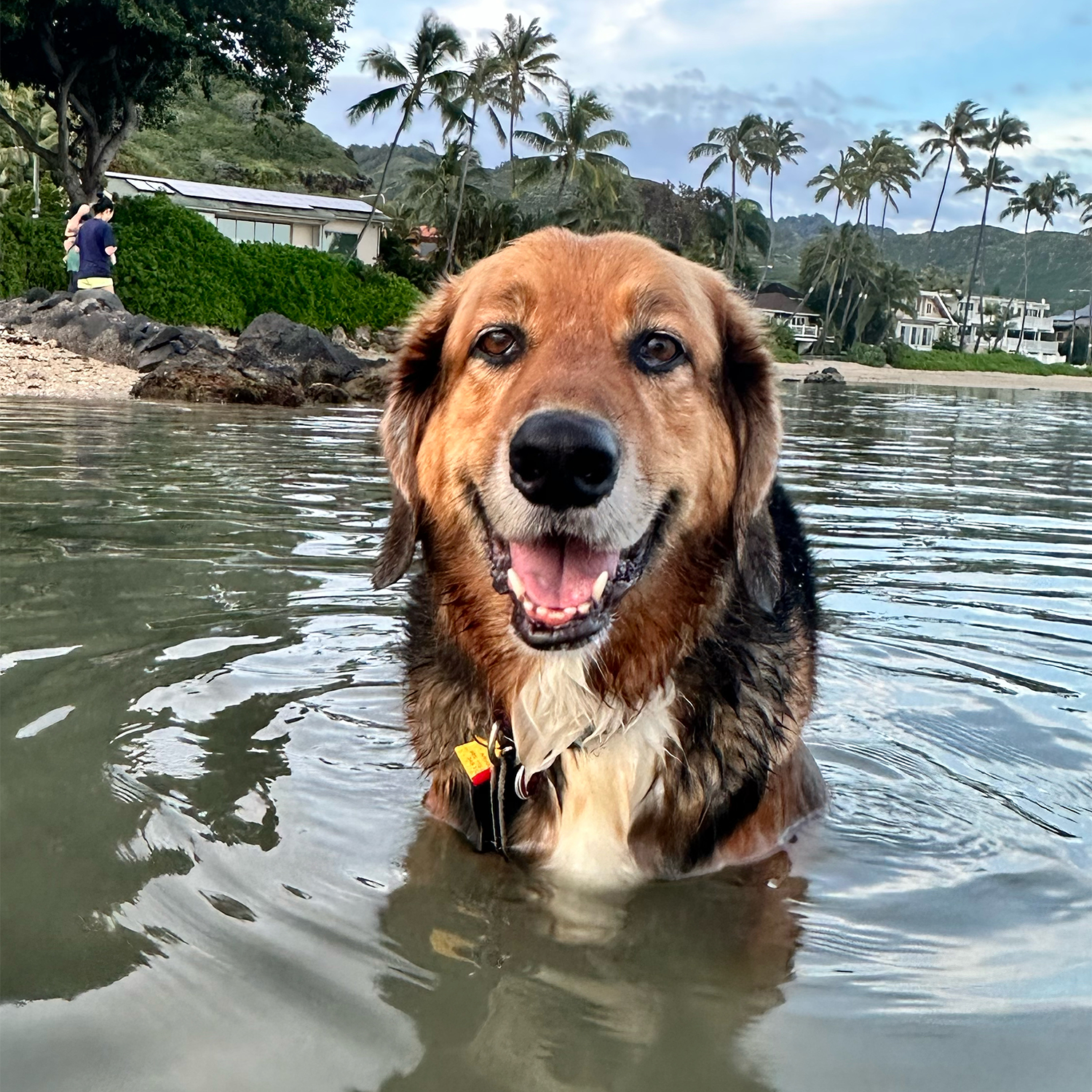
Get your pet travel-ready with our help!
Every travel destination has its own set of pet travel requirements. It can be difficult to organize your journey without the right resources!
We’re here to provide you with valuable resources, help you connect with an accredited veterinarian near you, and support you in discovering the exciting world of pet-friendly travel.
Our Pet Travel Assistant is an intelligent, user-friendly platform that will provide you with:
Step 1: Tell us your needs.
Tell our Pet Travel Assistant your needs to receive your required pet travel documents in a snap!
Pet Travel Assistant
Simply fill out the Pet Travel Assistant form below, and we’ll send you a handy list of all the documents and steps you’ll need to ensure your pet’s safe and happy travels.
Once you submit the form, keep an eye on your email inbox. We’ll send you all the essential travel information for your upcoming trip. And if you need a hand with exams, treatments, or paperwork, our Find-A Vet tool is here to connect you with a friendly local veterinary clinic ready to assist you and your pet!
What kind of pet are you traveling with?
Where do you plan to travel, which airport are you traveling to, when are you traveling, step 2: find a vet.
Use our Find-A-Vet tool to locate a local veterinary clinic!
Find-a-Vet Tool
Get a list of USDA accredited veterinarians in your area! Our easy-to-use Find-a-Vet tool is designed to simplify the process of finding a local veterinarian who can issue the necessary documentation to meet travel regulations.
Rest assured that you won’t face unforeseen circumstances resulting in travel disruptions, legal complications, quarantine, or risks to your pet’s health.
Step 3: Travel, worry-free.
Travel worry-free with your furry friend!

- Pawrent Adventures
In just three simple steps, you’re ready to embark on an unforgettable adventure with your beloved pup or kitty! Join our pet-loving community to share photos and highlights from your travels with other pawrents.
“ Being able to take my best friend with me on my lengthy Mexico vacation meant everything to me. I couldn't stand leaving her behind knowing she loves the beach just as much as I do! ” Erika Pena
“ Rana is a rescue. We recently relocated for a few months from Utah to Hawaii and she is loving it! We are glad we are able to have her with us and explore this beautiful place. ” Mariela
“ Chico took his first 36 hours road trip from Graham, NC to Michoacán, Mexico! He’s always loved being on the road❤️ ” Chico Mendoza
“ We're moving onto a 44ft. catamaran that we're picking up in Buenos Aires, Argentina, and sailing back to the States, so of course we had to bring the three cats with us. They got a much needed reprieve from their carriers in the airport during the 27 hours of travel. Two of them use use the suitcase as a bed here in the apartment, clearly ready to continue the travels! the one item we're still trying to determine, is what the water bowl will be for them on the boat... ” Sara Hale
“ Thunder is like my son. I couldn’t imagine going on a trip without him. That being said, It’s meant the world to be able to have him alongside me for every adventure! Many more memories to come thanks to GlobalVetLink Health certificates! ” Karina
“ It was so surreal to bring Kaya back to my home on Kauai. It was amazing to see how happy she was running free and chasing chickens. I’ve never seen her smile so big. My heart exploded with joy! ” Cory Hom-Weaver
“ Xolo-Chi living his best life and making memories with us. His Dad and I are lucky his size allows us to travel with him. Moe has lived in Shanghai for 6months, been to Mexico twice and goes on any boating and hiking adventures that are safe enough for him. Moe is 14yrs old this May and we are hoping for more adventures to come! ” Stephanie & Moe
Stay in-the-know with expert tips, advice and news related to compliant and safe pet travel.
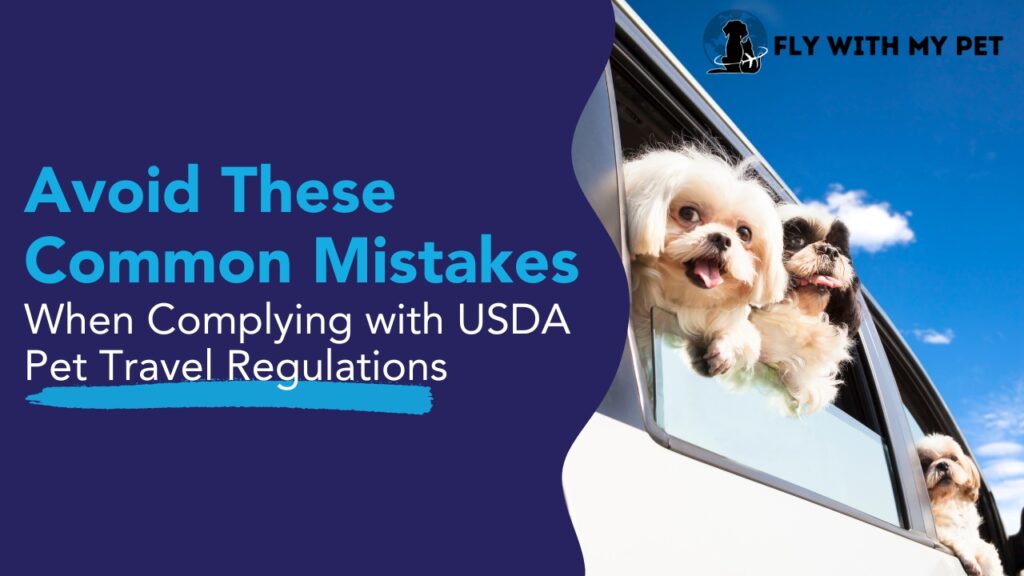
Avoid These Common Mistakes When Complying with USDA Pet Travel Regulations
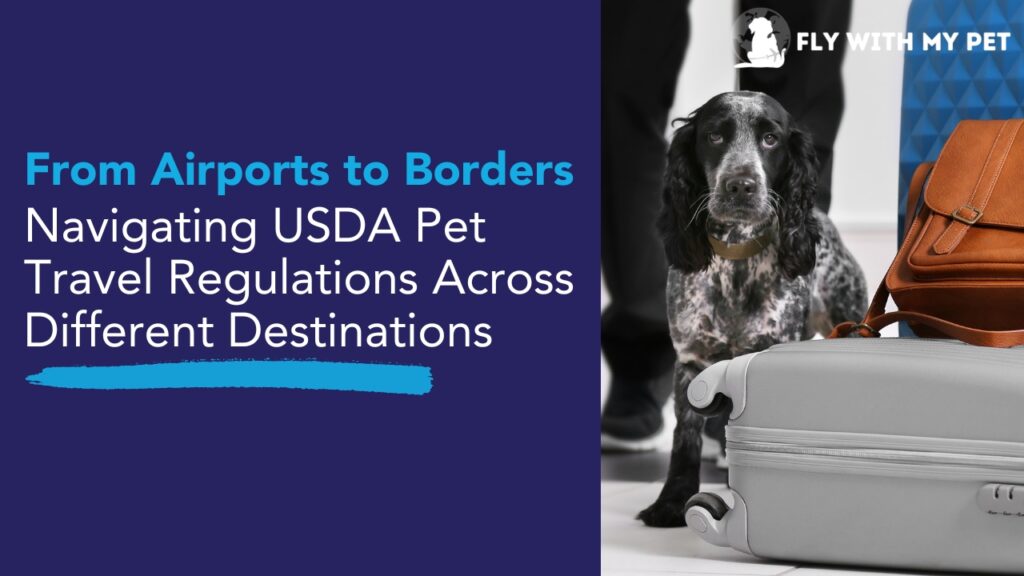
From Airports to Borders: Navigating USDA Pet Travel Regulations Across Different Destinations
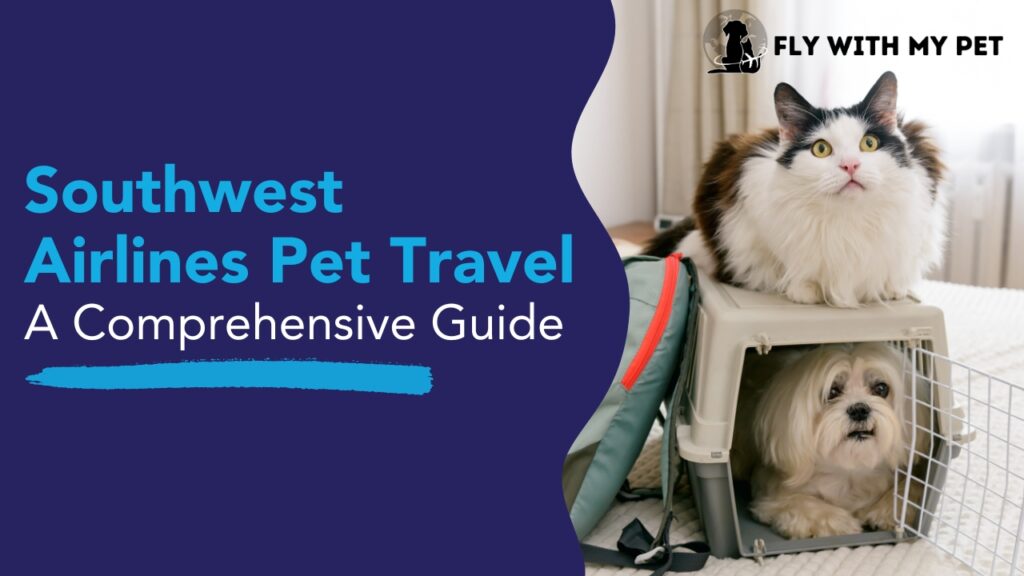
Southwest Airlines Pet Travel: A Comprehensive Guide
Additional pet travel resources.
Looking for more information before flying with your dog or traveling with your cat? Check out our FAQs for helpful tips and answers to your questions!
Copyright 2023 | Privacy Policy | Terms of Service
FlyWithMyPet.com is owned by GlobalVetLink
- Get Started
Don't leave your pet behind!
There are requirements for traveling to ..
Enter your email address to receive your list of travel requirements for your upcoming trip.
I accept the Terms of Service and Privacy Policy .
Travel Domestically and Internationally with Your Pet
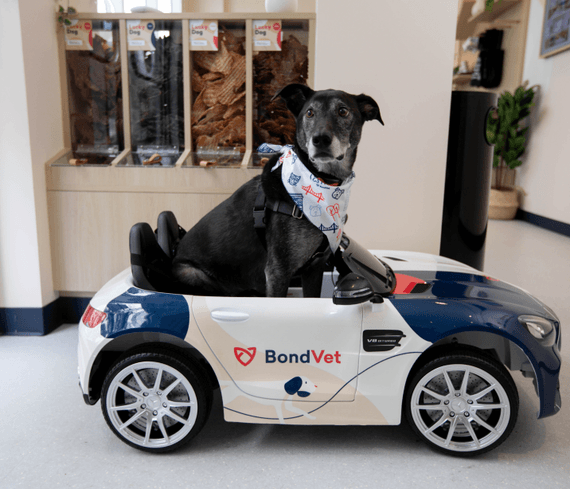
Benefits of Bond Travel

After submitting an inquiry, you will receive an email that provides additional instructions. Please review this email carefully and reply back so that our Travel Agents can begin your documentation.

During your appointment our vet will perform the USDA Exam and complete all required documentation

The Certificate of Veterinary Inspections will be given to you at the time of your appointment, and the International Health Certificates will either be emailed to you or will be mailed overnight.

Enjoy your trip with your furry companion!
Traveling with Your Pet

Pet travel can be complicated, especially when it comes to international travel. At Bond Travel, we understand how important it is to keep your furry companion safe and comfortable throughout the journey. Our experienced Bond Travel Agents and USDA-accredited veterinarians can assist you in planning and organizing the required documentation for your pet's travel, both domestically and abroad, and help you navigate obtaining any governmental endorsements required for your travel. Whether you're a dog or cat person, we're here to help you bring your pet with you on your next adventure.
Learn more:
Traveling within the USA (including Puerto Rico, Mexico, or Canada)? Click here.
Traveling internationally? Click here.
Review the APHIS website for your destination — if you’re traveling to a second or third country with your pet on your trip, please review the site for each country.
You’ll need to provide Bond Vet with the following veterinary information:
- Your pet’s last two rabies certificates
- Your pet’s vaccine history and medical records (DA2PP, Leptospirosis, Bordetella, Rabies, and Heartworm Test)
- Your pet’s microchip number
You’ll also need to provide us with the following travel details:
- Name of the person traveling with the pet (as it appears on your ID/Passport)
- US address & telephone number
- Destination address & telephone number
- Method of transport, whether in-cabin or in cargo
- Travel itinerary details (include flight confirmation email, seat confirmation email, etc)
- Date(s) of travel
- Your address — the paperwork will be sent from the USDA straight to you
Bond Vet is responsible for:
- Collection of documents
- Verification of documents
- Completion of USDA Health Certificate and physical exam
- Submission of USDA Health Certificate documents to the USDA
All other requirements are the responsibility of the pet parent since each country is different and requirements change frequently.
The USDA and UPS are responsible for:
- Document endorsement
- Document pick up & return
Requirements for travel will vary by destination.
All pets who fly, either domestically or internationally, will need a current rabies vaccine. For most international flights, a rabies certificate and an ISO compliant microchip are needed. Additionally, almost all International countries require an International Health Certificate (IHC) issued by an Accredited Veterinarian. For interstate travel, a Certificate of Veterinary Inspection (CVI) may be required. Please inquire with a Bond Travel Agent so we can help you assess what your travel requirements are.
There are three types of travel documents:
- A Certificate of Health (COH) is a non-government issued document, and is used as a convenience to show that your pet has been fully vaccinated and has been verified to be healthy. This is used for some domestic travel when more official paperwork has not been identified as necessary.
- An International Health Certificate (IHC) issued by a USDA Accredited Veterinarian. This is a government document that is necessary for international travel to most countries outside the US. These documents need to be issued by a USDA Accredited Veterinarian and endorsed by a USDA Veterinary Specialist.
- Depending on your destination, states may require a Certificate of Veterinary Inspection (CVI). This document is issued and signed by a USDA Accredited Veterinarian. If your destination state does NOT require a Certificate of Veterinary Inspection, please check with your airline if any documentation is required. Your Bond Travel Agent will assist you with determining the requirements for your destination state.
We will need you to provide us with all of your pet’s vaccinations records and medical documents. Many destinations need proof of vaccinations, parasite prevention, tests, and/or import permits.
Bond Travel Agents are dedicated Veterinary Nurses who are here to help you navigate the travel requirements for your destination. Before you book a travel appointment, please complete this inquiry form , and our team will reach out to answer any questions you may have and discuss next steps.
Once you and your Bond Travel Agent have confirmed and organized all of the required documentation for your travel plans, they will coordinate a Travel Appointment with you. During your appointment the Accredited Veterinarian will perform the USDA Exam and complete all required documentation. Please note that International Health Certificates can take up to 72 hours to be endorsed while Certificate of Veterinary Inspections will be given to you at the time of your appointment. Depending on your destination, International Health Certificates will either be emailed to you via the email address we have on file or will be mailed overnight, priority shipped directly from the USDA office.
Our Bond Travel Agents are ready to help you navigate this process and ensure you and your pet are ready to travel. Additionally, please visit the USDA APHIS pet travel website to fully understand your pet’s travel requirements for your destination.
Once you and your Bond Travel Agent have confirmed and organized all of the required documentation for your travel plans, they will coordinate a Travel Appointment with you. During your appointment the Accredited Veterinarian will perform the USDA Examination and submit all required documentation to the USDA. International Health Certificates can take up to 72 hours to be endorsed.. Depending on your destination, International Health Certificates will either be emailed to you via the email address we have on file or will be overnight, priority shipped directly from the USDA office.
A Certificate of Veterinary Inspection or Certificate of Health will be given to you at the time of your appointment. CVIs will also be automatically sent to your destination state’s Government. We will give you a physical copy and we can always email a PDF copy to you as well.
PLEASE NOTE: If you are planning to travel internationally within 3 business days of your inquiry date, a USDA endorsed certificate will not be able to be completed. The USDA requires a 72 hour processing time and they are closed on the weekends. Please reach out to a friend or your local boarding facility to arrange accommodations for your pet.
If you are traveling domestically(within the United States, Mexico or Canada) you will need the following documentation:
- Depending on your destination, the state may require a Certificate of Veterinary Inspection (CVI).
- Check with your airline, they may require a Certificate of Health.
- Current Rabies Vaccine Certificate.
- Vaccination Record.
Microchip (requirements vary by destination).
- Mexico and Canada follow the same guidelines for Domestic Travel requirements.
Always check with your airline about any specific documents they may require.
- We recommend sending inquiries no later than 10 days before your travel date. The sooner you know when you are traveling the better we can accommodate your needs!
If you are traveling internationally (outside of the United States) you will need the following documents:
An International Health Certificate (IHC) from a USDA Accredited Veterinarian. This is a government document that is necessary for international travel to most countries outside the US. These documents need to be issued by a USDA Accredited Veterinarian and endorsed by a USDA Veterinary Specialist.
Copies of the last TWO Rabies Vaccination Certificates.
Complete Vaccination Record.
Inquiries must be made at least 45 days before your travel date. Travel inquiries made within 30 days will incur a $250 rush fee. Please note that the earlier you inquire, the better we can accommodate your needs.
Depending on your destination and your pet’s needs, we may need to perform one or more of the below. Your Bond Travel Agent will discuss specific costs with you prior to your appointment.
- A physical examination and consultation fee
- International Health Certificate, Certificate of Veterinary Inspection or Certificate of Health
- Rabies vaccine
- Other vaccinations
- Antigen Testing if applicable
- Bond Vet prides itself on providing urgent care to all pets, this includes urgent travel needs. We will do our very best to accommodate you and your pet for last minute travel inquiries. If you are requesting documentation outside of the recommended inquiry times (15-30 days prior for international travel or 10 days prior for domestic travel), a STAT fee may be applied to your total cost.
Here are some of our recommendations:
- Vaccines and documentation
- Pet license
- Pet passports (EU)
- Calming aids (ask your vet prior to travel)
- Treats and toys
- Secure leashes and carriers
- Pet supplies for the trip
- Preflight workout/brain games for your pet
- Visit CDC Guidelines to get up-to-date information on pet travel requirements and restrictions.
- Visit APHIS Pet Travel Checker to learn more about how to fly with your pet and the requirements for each country.
- How to Travel With a Cat: Tips for Safety and Comfort
- Tips for Traveling With Your Dog
- Traveling Internationally With Your Dog: A Guide
- Dog Travel Anxiety: Prevention, Treatment, and More
FAVN tests are used to determine the Rabies Antibody levels in your pet’s bloodstream. This ensures that your pet has the appropriate rabies antibody levels to prevent transmission of the rabies virus.
Every country’s requirements are different. Many island nations require this test prior to arrival as the country may be Rabies Free. These rules and regulations are strictly enforced by the importing country that requires them.
Generally, the laboratory test can take 4-6 weeks to receive results. Bond Vet sends all samples to Kansas State Rabies Laboratory located in Manhattan, KS. Currently, this is the only laboratory that is qualified to run FAVN tests for international pet travel. Bond Vet has no control over turn around time for results as this test is completed by this third party.
Please note, the laboratory does NOT offer expedited testing services.
MOBILE VETERINARY SERVICES

In-home Wellness & Mobile Veterinary Care
Our mobile vet team brings high-quality, compassionate veterinary care to you, keeping your pets healthy in the comfort and convenience of your home.
Wellness Care
Because of the shorter lifespan of our pets, we stress the importance of semi-annual physical examinations (every 6 months) and age appropriate wellness testing with a veterinarian. Thorough check-ups and preventative care can help alleviate serious health problems. Wellness testing includes bloodwork, fecal exams, and urinalysis to catch issues before they become a problem for your pet. Preventing disease and early disease recognition will add quality and years to your pet’s life. We offer a wide range of veterinary services to keep your companions feeling their best.
More about Wellness Care
Semi-annual physical examinations.
These are extremely important to your pet’s good health. We pride ourselves on looking at your pet as an individual and then discuss medical treatment, health maintenance and lifestyle with you about what is best for the pet and your family. A full exam is done at every visit, and this includes an assessment of your pet’s eyes, ears, mouth and skin, as well as an evaluation which includes the following body systems: cardiac, respiratory, abdominal, urogenital, and lymphatic.
Wellness and Preventative Care Plans
We evaluate pets as the individuals they are. Each pet’s care plan is developed carefully after evaluating the pet’s history, lifestyle and risk factors. A pet care plan will typically include nutrition, customized vaccine protocols or titer testing, wellness testing, and behavior counseling, among other topics. We look comprehensively at the factors that go into your pet’s health and invite your questions and concerns.
Customized Vaccination Protocols
We believe less is more. Vaccines are necessary to prevent disease. However, vaccines can also cause problems for your pet’s immune system if not managed in conjunction with overall health. Once yearly, we will assess your pet’s risk factors and determine if your pet needs vaccines, and if so, which ones are necessary. It is important for you to have a clear understanding of which vaccines are offered, what your pet is at risk for, and the relative risk-to-benefit ratio of giving the vaccines to the long-term health of your companion.
Titer Testing
Titer testing is available and helps assess the need of the pet for a vaccine. In a titer test, a blood sample is tested to see if the pet has an appropriate antibody level against the disease in question. If the antibody level is adequate, we can rely on the pet’s immune system to combat the disease and skip the vaccine at that time.
Wellness Testing
Wellness testing includes blood work, fecal analysis, and urinalysis. Wellness testing gives individual baseline data that we can use later as a reference for faster, more accurate diagnosis and treatment, as well as serving as a detector of early disease. Depending on the age and health of your pet, we can recommend which wellness profile is best suited.

Individualized Flea and Tick Programs
During in-home appointments, we can create an individualized treatment program with you to help keep your pet protected from fleas, ticks, mosquitoes and other potentially disease-bearing pests. Because many of these pests are now adapting to warming climates in our service areas, they are a year-round concern requiring a year-round plan. Heartworm, Lyme Disease, Ehrlichiosis are just a few of the very serious diseases that can be prevented through treatment programs. We offer a variety of conventional and natural products and will recommend the products that work best for the protection and well-being of your pet.
Sick & Emergency Care
With skilled doctors and well-stocked transits, we are able to treat about 90% of common medical conditions during in-home appointments. We can take samples for many types of laboratory services in your home and often have the results back to you in 24-48 hours. Additionally, in-home appointments can provide our veterinarians with the opportunity to observe environmental conditions that may be related to pet illness. Our Receptionists and Patient Care Coordinators are trained to triage emergencies to help you get the best care needed for your pet. Most things we can handle at home but in some cases we may recommend coming to one of our facilities or going to a specialty center based on the severity of the situation. For laboratory samples that we take at your home, we get pick-up twice a day from the same laboratories that all the local vet hospitals use, which gives us a quick turn-around for results. We also have capabilities to run blood tests on site at our hospitals for more time-sensitive emergencies. Visit our Emergency Services page to determine if you have an emergency and for contact information for area emergency veterinary affiliates.
Veterinary Counseling Services
We offer a wide scope of consultations for both acute and chronic conditions. Pediatric care, allergies, senior health, lameness evaluations, second opinions, oncology, and behavior are just a few. If you have any questions about your pet’s health, please don’t hesitate to contact us—you know your pet best and there are no bad questions when it comes to your pet’s health or your peace of mind.
More about Consultations
Chronic disease management.
HousePaws offers in-home consultations to help manage chronic diseases or conditions your pet may have and reduce the number of stressful trips he or she needs to make to the veterinary hospital. We can help manage conditions related to heart, kidney and liver diseases, diabetes, cancer, arthritic conditions and more, and make recommendations of how to keep your pet as healthy and comfortable as possible in their own environment. HousePaws is happy to offer second opinion on diagnosis on chronic conditions which can be challenging for both pet and pet parent, alike.
Behavioral Counseling
This is a frequently encountered need and one where our mobile practice has distinct benefits to clients. The ability to see the pet in her own environment is a significant benefit when developing a plan of action to defeat a behavior problem. We can provide advice regarding the correction of problems such as excessive barking, chewing, spraying, scratching, digging, house soiling, anxiety, and aggression. Most behavior problems can be solved with behavior modification techniques. Infrequently, natural alternatives or prescription medications may be needed for a short period of time.
Quality of Life
As pets age, their needs change, too. The benefits of a veterinary housecall allow us to see the environment that your pet lives in. We may see things that you may not which impact the every day quality of life of your pet, or conditions can can present special challenges to your pet, particularly as they age or their health changes.
Diabetic Home Management
Teaching the owner how to manage diabetes at home is important to having a stress-free diabetic pet. We offer training on obtaining your pet’s blood sample, and utilization of a home glucometer system. Frequent communication/consultation between the owner and veterinarian will optimize your pet’s success with this disease.
Dietary Counseling
We will provide guidance regarding your pet’s nutritional needs for each life stage, including dietary requirements for growth, weight maintenance and performance. A few of our veterinarians have advanced training in Chinese Medicine to take nutritional counseling to the next level!
Mobile Diagnostic and Treatment Services
HousePaws employs a range of diagnostic and treatment techniques in our mobile practice that can be tailored to the needs of you and your pet. In most of our practice areas, our doctors have access to state of the art mobile radiology equipment for advanced diagnostic efforts. A number of our doctors are certified in traditional healing methodologies as well as newer technologies such as cold laser therapy that we have found to have consistent positive results. We are constantly adding to our inventory of knowledge and equipment to offer you the most effective modern and traditional therapies to treat the extensive range of medical conditions we see every day.
Specialized Diagnostic and Treatment Services
Veterinary acupuncture.
Acupuncture is available at South Jersey and Pennsylvania Locations. (Acupuncture is not yet available in our Bergen County service area).
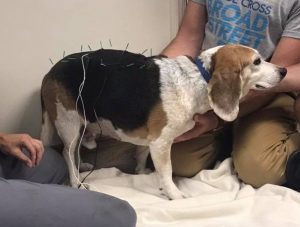
Cold Laser Therapy
Laser therapy is an FDA cleared modality that reduces inflammation and pain. Laser therapy is effective at treating a wide range if conditions including acute pain, arthritis pain, aid in post-operative healing, and chronic musculoskeletal conditions often without use of medication or surgery.
Cold laser, also known as low-level laser therapy (LLLT), is a non-invasive procedure that uses visible and near infrared (NIR) light to stimulate cell regeneration and increase blood circulation. Overall cellular function is increased, allowing for rapid absorption of nutrients, elimination of wastes, growth for new cells.
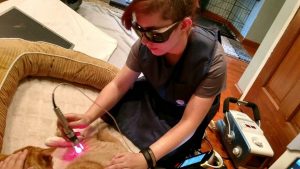
The many benefits of cold laser therapy include:
- Alleviating chronic or acute pain
- Reducing inflammation
- Reducing swelling
- Increasing circulation of blood and healing factors
- Speeding up healing and recovery
- Releasing endorphins, the body’s natural pain reliever.
- Joint injuries
- Back injuries and intervertebral disc issues
- Ligament or tendon injuries
- Muscle sprains or strains
- Skin lesions or abrasions
- Post-trauma wounds
- Post-surgical incisions
- Musculoskeletal diseases
- Nerve injury
Radiology at South Jersey Locations: X-Ray & Ultrasound Services
In the event your pet needs radiology services, we have high-tech mobile equipment that we can utilize in your home, or you can come in to one of our hospitals for tests. HousePaws South Jersey and Pennsylvania service areas offer mobile x-ray and ultrasound units that can perform tests in your house. (Mobile x-ray and ultrasound are not yet available in our Bergen County service area.) Results are obtained immediately and can be sent to specialists if necessary.
Domestic/ international Health Certificates
These are needed before you can travel on an airplane with your pet. To obtain a health certificate, your pet must be examined 10 days before you travel indicating that your pet is free of communicable diseases. We have several veterinarians on our team who have special certification for international travel requirements.
Home Delivery of Medications, Food and Nutraceuticals
Medicine and food deliveries are offered three times a week. Please see our Order Medication/Supplies page for more details.
Prescription Medications or Natural Remedies/Supplements:
These are often given at the time of the visit on a patient need basis. If you need a refill, please call us to order.
Individualized Flea and Tick Control Programs
We develop programs for the specific needs of your pet and your own particular environmental situation. We will review with you the best ways to control fleas in your house, in your yard and on your pet.
Appointment Cancellations
To enable us to provide the best care to all of our patients, please see below for details regarding cancellation of appointments with our veterinary practice.
HousePaws Cancellation Policy
HousePaws Appointment Cancellation Policy
We understand that there are times when you must miss an appointment due to emergencies or unexpected obligations for work or family. Cancellations prevent us from treating another patient in need.
We request 12 hours notice for any cancellation. If a mobile appointment is not cancelled at least 12 hours in advance we will require a cancellation fee equivalent to a travel fee for your area that must be paid prior to scheduling your next appointment. After a second cancellation of a mobile appointment, without 12 hours notice, you will be responsible for the cost of a doctor’s exam for each pet scheduled and the travel fee.
In hospital appointments we also require a 12 hour cancellation notice. If an in hospital appointment is canceled for a second time in less than 24 hours you will be responsible for the cost of an exam for each pet we were scheduled to see.
We thank you for your understanding in this matter.
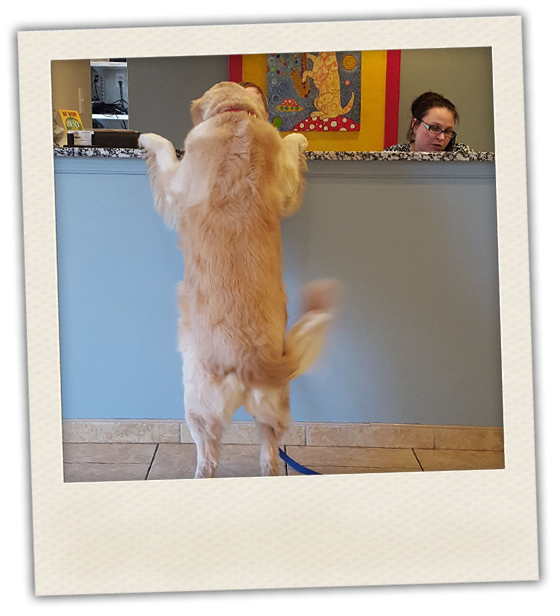
Photo Credit: Audilis Sanchez, CDC
Taking your dog or cat on a flight abroad? Make sure you have your pet’s documents when traveling internationally and returning home to the United States. Leave yourself plenty of time before the trip to take care of your pet’s required medical care and paperwork. Remember to start the process early.
First Stop—Your Vet’s Office
If you are traveling internationally, tell your veterinarian about your plans as soon as possible. Together, you can make sure your pet is healthy enough to travel and meets the requirements for your destination country and for your return to the United States. Requirements may include
- Blood tests
- Vaccinations
- Microchips for identification
- Health certificates
Airlines and countries often have different requirements, so make sure you know what the specific ones are.
Research How to Fly with Your Pet

Talk to your vet about your travel plans and your dog’s rabies vaccination. Photo credit: David Heaberlin, CDC
Give yourself plenty of time to do your homework before your trip. A great place to start is the Pet Travel website of the US Department of Agriculture’s Animal and Plant Health Inspection Service (APHIS).
Different airlines have different rules about whether and how a pet can travel. Depending on the airline, your pet may be able to travel on your flight either in the cabin or in the cargo hold. Confirm this ahead of time with your airline.
On airlines that allow pets to travel, only small dogs and cats that can fit in special carriers under the seat are allowed in the cabin. Their owners must care for them during any layovers. Some airlines may not allow them in the cabin and will transport them as cargo in a heated and ventilated hold. Cats and dogs may travel and rest better this way, since it is quieter and darker, according to the International Air Transport Association.
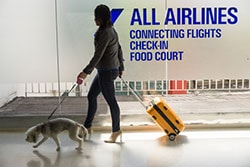
Research how to fly with your pet. Photo credit: Misty Ellis, CDC
Another way for your pet to travel is on a separate flight as an air cargo shipment. If this is your preference, or a requirement based on your dog’s size or the destination country’s rules, then get your pet used to the shipping kennel ahead of time. Make sure the door latches securely to avoid any mishaps in transit. Ask your veterinarian for advice about when to give food and water. If a pet is traveling as an air cargo shipment , you must make arrangements for pickup at the final destination.
Some US carriers don’t allow pets to be shipped between May and September, the hottest months for animals to travel in the Northern Hemisphere. No matter what time of year, safety is always a concern when pets travel by airplane. If absolutely necessary for a dog or cat to travel in cargo, it must be in a sturdy container with enough room to stand and sit, to turn around normally while standing, and to lie down in a natural position. For more information, visit the US Department of Agriculture pet travel website .
When waiting for a connecting flight, you may have to care for a pet traveling with you in the cabin, while the airline staff or ground handlers care for a pet traveling in cargo. Check with your airline(s) beforehand to see what is required.
Consider Your Pet’s Comfort
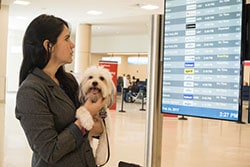
Consider your pet’s comfort when traveling. Photo credit: Misty Ellis, CDC
Loading and unloading can be the most stressful part of travel for animals. Consider these tips:
- Get your pet used to its carrier before the flight.
- Purchase flights with fewer connections or layovers.
- Pick departure and arrival times to avoid extreme heat or cold. For example, planning a nighttime arrival to a hot destination may be better for your pet.
- Consult with your veterinarian. The International Air Transport Association discourages the use of sedatives or tranquilizers because they could harm animals while in flight.
- Walk your pet before leaving home and again before checking in.
- If your pet is allowed in the cabin, check in as late as possible to reduce stress.
- If your pet will be transported as cargo, check in early so it can go to the quiet and dimly lit hold of the plane.
Cruise Ships and Travel by Sea
Different cruise ships have different rules about whether a pet or service animal can travel with you and what documents they require. Confirm this ahead of time with your cruise ship. If you travel with your pets internationally on a cruise ship or other maritime vessel, you will be required to meet federal entry requirements to enter or re-enter the United States with your pets. Note that CDC has temporarily suspended the importation of dogs arriving from countries that CDC considers high risk for dog rabies , including dogs that have visited a high-risk country in the past 6 months.
Requirements for Dogs Leaving the United States
CDC does not have requirements for dogs leaving the United States. However, if you plan to return to the United States with your dog, the dog will be required to meet the same entry requirements as dogs arriving from foreign countries (see below). If you plan to take your dog to a country at high risk for dog rabies , be sure to review the importation requirements before leaving the United States, because your dog may not be allowed to return to the United States due to the current temporary suspension , which applies to dogs that live in the United States and have traveled to high-risk countries, even if only for a short visit.
Visit the US Department of Agriculture website for pet entry requirements in foreign countries.
Requirements for Dogs Arriving in the United States
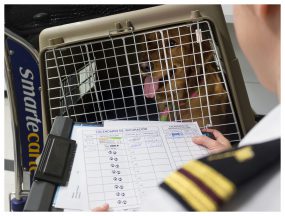
Meet the requirements for dogs entering the United States. Photo credit: Derek Sakris, CDC
Whether returning or coming to the United States, all dogs must appear healthy . There is a temporary suspension for dogs imported from countries that CDC considers high risk for dog rabies .
Some states may require vaccinations and health certificates. Check with your destination state’s health department before you leave on your trip.
Some airlines, cities, or states restrict certain breeds, so be sure to check before you travel.
The US Department of Agriculture has additional restrictions for some dogs arriving in the United States, such as working dogs and dogs intended for resale or adoption.
Requirements for Cats Arriving in the United States
Cats aren’t required by CDC to have a rabies vaccination certificate to enter the United States. However, most states and many other countries require them for cats, and CDC recommends that all cats be vaccinated against rabies. Be sure to check your destination’s requirements and ask your veterinarian before traveling.
Other kinds of pets
If your pet is not a cat or dog, there may be different requirements. Some animals , such as primates (monkeys and apes) or African rodents , won’t be allowed back into the United States. Even if they originally came from the United States, they can’t be brought back here as pets.

With careful planning, your pet can stay healthy and safe while traveling. Photo credit: Audilis Sanchez, CDC
Illness or Death of a Pet During Travel
Despite all precautions, pets sometimes get sick or even die on an airplane. Public health officials are required to make sure an animal didn’t die of a disease that can spread to people. They may have to do an animal autopsy or conduct other tests, at your cost, to figure out the cause of death. The animal’s remains often cannot be returned to you after this testing.
Think of Different Options
Make sure your pet is healthy enough to travel by air. If you have any doubts, consider leaving your pet with a trusted friend, family member, or boarding kennel during your trip, or taking another mode of transportation.
With careful planning, your pet will arrive both at its destination and return home healthy and safe.
- Information on Dog Importation for US Rescues, Shelters, and Adoption Agencies
- Information on Dog Importation for US Veterinary Clinics
- International Air Transport Association- Traveler’s Pet Corner
- Animal Transportation Association
- International Pet and Animal Transportation Association
- Centers for Disease Control and Prevention
- U.S. Department of Agriculture
- National Agricultural Library
- U.S. Fish & Wildlife Service
- U.S. Department of State
- U.S. Department of Transportation
- American Veterinary Medical Association
- CDC’s Healthy Pets, Healthy People website
- Travelers' Health
- Healthy Pets Healthy People
- Southern Border Health and Migration
- Port Health
- Division of Global Migration Health
To receive email updates about this page, enter your email address:
Exit Notification / Disclaimer Policy
- The Centers for Disease Control and Prevention (CDC) cannot attest to the accuracy of a non-federal website.
- Linking to a non-federal website does not constitute an endorsement by CDC or any of its employees of the sponsors or the information and products presented on the website.
- You will be subject to the destination website's privacy policy when you follow the link.
- CDC is not responsible for Section 508 compliance (accessibility) on other federal or private website.
Advertiser Disclosure
Many of the credit card offers that appear on this site are from credit card companies from which we receive financial compensation. This compensation may impact how and where products appear on this site (including, for example, the order in which they appear). However, the credit card information that we publish has been written and evaluated by experts who know these products inside out. We only recommend products we either use ourselves or endorse. This site does not include all credit card companies or all available credit card offers that are on the market. See our advertising policy here where we list advertisers that we work with, and how we make money. You can also review our credit card rating methodology .
The Ultimate Guide to Traveling With Pets
Alex Miller
Founder & CEO
287 Published Articles
Countries Visited: 34 U.S. States Visited: 29
Director of Operations & Compliance
1 Published Article 1168 Edited Articles
Countries Visited: 10 U.S. States Visited: 20
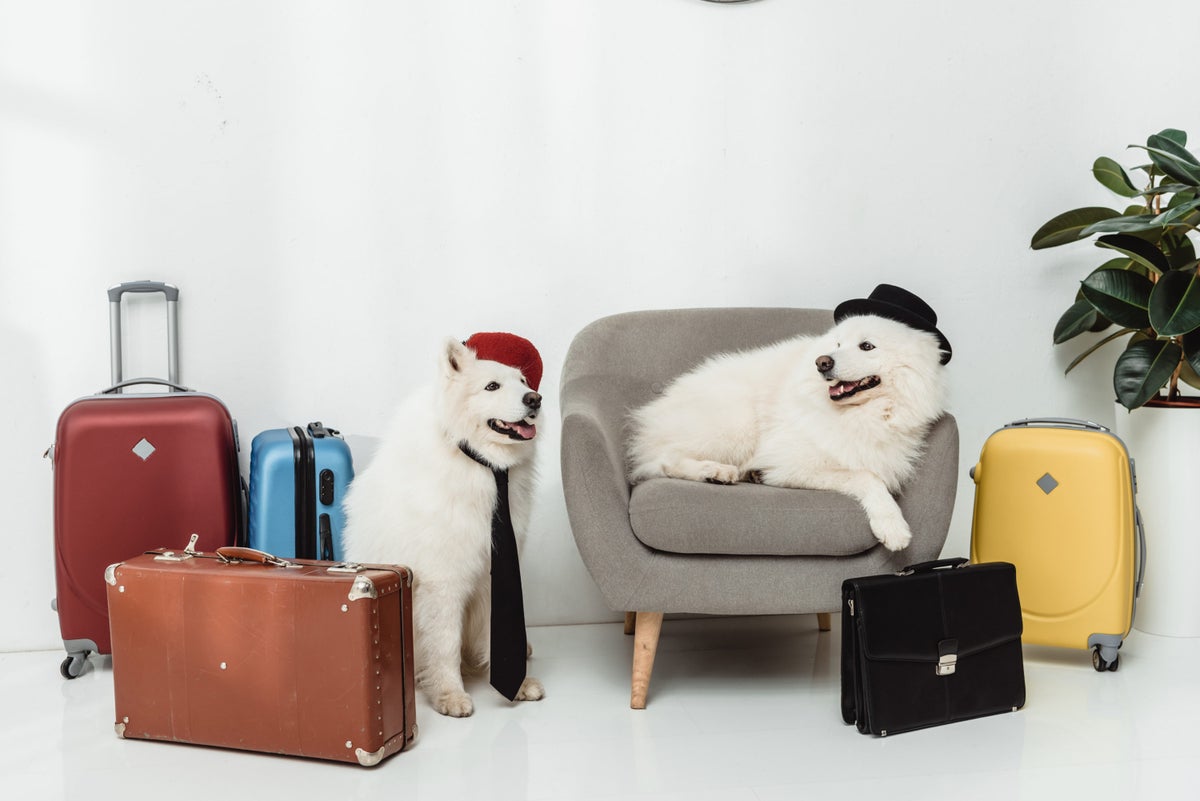
We may be compensated when you click on product links, such as credit cards, from one or more of our advertising partners. Terms apply to the offers below. See our Advertising Policy for more about our partners, how we make money, and our rating methodology. Opinions and recommendations are ours alone.
When you’re planning a trip, you have dozens of details to worry about. If you add a pet to the mix, those details may begin to feel overwhelming. Whether you’re traveling for pleasure or moving to a new place, that doesn’t mean you have to leave your dog, cat, or small animal behind.
Here are some tips to show you how to keep yourself and your pet calm and comfortable, no matter what distance or mode you travel. This information will help you and your pet navigate every phase of the journey, from planning and packing to boarding and feeding.
Prepare for Your Journey
Pre-travel preparation is one of the most important parts of successfully traveling with or without a pet. By making the right plans, you can save yourself and your pet much discomfort or even trouble. Here are some key things you should do before you set out:
- Rehearse With Your Pet : If your pet has never been on a long journey before, get them ready by taking them on short drives and then increase the time gradually. Be sure to put them in their crate every time, so they get used to it faster. Take a walk around the airline terminal or station to get them familiar with the smells and sounds. Reward your pet for good behavior and talk reassuringly to them.
- Take a Relaxing Walk Before Boarding : It helps to let your pet walk or run around before boarding the plane, bus, boat, or train. See if there are any areas outside of the airport or station for a quick round of exercise. This will help both you and your pet expend excess energy and be more tired during the flight, which will make for a peaceful journey.
- Buy the Right Crate or Carrier : If you’re buying a shipping crate for your pet, be sure it is IATA approved . Any crate or carrier should be large enough for your pet to sit, stand, and turn around in with ease. It should be secure enough not to slip around when the vehicle or plane moves or stops.
- Prepare the Crate for Comfort : Line it with absorbent bedding, like shredded bits of paper or cloth. Before you leave, freeze a small bowl of water, which will melt when your pet gets thirsty and won’t spill during loading time. Close the crate securely but never lock it, so it can be opened for feeding or emergencies. Attach a bag of dry food or seed to the outside of the carrier or crate, so your pet can be fed during a long trip or layover. Last but not least, be sure to attach your pet’s identification to the crate to avoid misplacing them.
- No Crate, No Problem : If you don’t plan to use a crate in the car, be sure your pet rides safely with its head inside the window at all times. Keep pets in the back seat in a harness you can attach directly to the seat belt buckle.
Hot Tip: Don’t forget to check out our study on the Top 10 Most Pet-Friendly Airports in the U.S. as well as The Best & Worst U.S. Airlines to Fly With Your Pet .
Research the Pet Rules of Your Destination

If you are traveling internationally or even between states, check the requirements of your destination country, city, town, or state. The rules and laws may be different from your state or country of origin. Many countries and states have specific health, vaccination ( for humans as well! ), and quarantine regulations. You can verify these rules by visiting the official embassy website of the country.
More countries are starting to require pets to have a microchip implant, which is an effective way to find your pet if it gets lost or runs away. Ask your pet care specialist about getting one for your dog or cat – they are inexpensive and could save you a lot of heartaches!
Contact A Specialist Pet Relocation Company
Just as a pet owner should go to a vet for specialist veterinary advice, or to a relocation company to move their furniture, pet owners should contact a specialist Pet Relocation Company for all the peculiar requirements for the destination, route, crating, air carriers, transit stops etc. that will be required. Every country and every carrier is different and the rules are inclined to change at any time. This Association IPATA has specialist members throughout the world.
Learn About Your Airline’s Pet Policy

Just like different countries have different rules, traveling with pets can vary by airline as well. Make sure you are informed about all requirements and restrictions before flying with a pet in the plane and the terminal , too. Try to book a direct flight so you won’t have to deal with stopovers. Moving your pet from one plane to another could be stressful and increase the chances of losing them.
You’ll also need to make different arrangements for in-cabin pet travel versus cargo pet travel. Sometimes, smaller “pocket pets” are allowed in the cabin, like birds, hamsters, and reptiles. Larger animals like dogs and cats are usually housed in a back area. Ask about the environment they will be in while on the plane to see if you need to provide extra blankets, water, or even a comfort item like their favorite stuffed animal.
Most airlines have specific web pages that describe their policies on pets, as well as how to make in-cabin or cargo arrangements. Here some links to specific pages with airline information about traveling with pets:
- Delta Air Lines : Delta Pet Policy and Other Information
- American Airlines : American Airlines Pet Travel Information and Policies
- United Airlines : United Airlines Travel for Pets Information
- JetBlue Airways : JetPaws Program
- Southwest Airlines : Southwest Pet Policy
- Spirit Airlines : Spirit Rules for Pets Onboard
Prepare for Other Modes of Travel With Your Pet

Even if you don’t plan to fly, you’ll likely still need to transport your pet via at least 1 mode of transportation. If you have a travel crate or kennel for your pet, that is ideal; especially because they will be in unfamiliar surroundings and may feel threatened or uneasy.
- Cabs, Rideshares, and Taxis : Because there are so many cab companies, you’ll want to ask about their pet policies when you call for a ride or before you get into the car.
- Rental Vehicles : When leasing a vehicle, talk directly to the rental company to find out about their pet policy before the trip. You may need to sign an agreement or pay a small deposit upfront.
- Buses and Trains : Many buses and trains, including Amtrak, allow small cats and dogs on certain routes, so be sure to ask ahead of time before you board.
- Boats : The same goes for boats as for other types of transportation, even the smaller commuter versions. Take time to call them or check the website so you know their pet policy.
Never leave your pet alone inside a vehicle to avoid dangers like theft, heatstroke, and freezing. As a responsible pet owner, you need to gauge the mode of travel depending on your pet’s temperament. You want to protect your pet, but you also want to protect others from scratches, bites, messes, and undue noise.
Hot Tip: Interested in more details for train travel with your pets? Check out UP’s dedicated article: The Ultimate Guide to Traveling with Pets on Trains within the U.S.
Find Pet-Friendly Accommodations

Although many hotels allow pets, others may prohibit them. If you don’t want to get stuck with a hotel that isn’t pet-friendly, make sure to do your research before you book. Even if you know that your hotel welcomes pets, you should make sure you have a room where pets are specifically allowed. Some hotels may have particular rooms for pet owners.
In addition, most hotels will specify the animal’s type, size, weight, and other things, so be sure to review all their rules and ask any questions before you arrive. You can also search for pet-friendly hotels, as most establishments readily publish their information online on their official website.
Schedule a Pre-Trip Checkup With Your Veterinarian
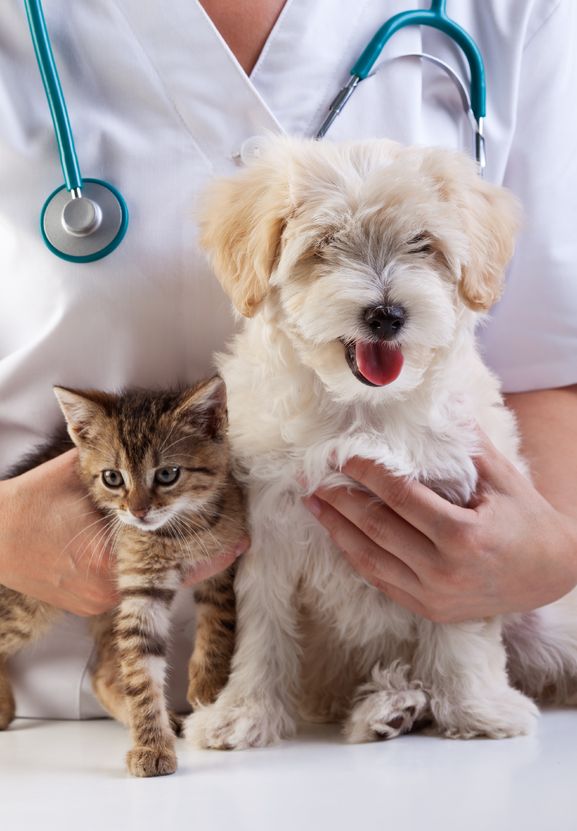
Pet owners are advised by the Centers for Disease Control and Prevention to let their vets know as soon as travel becomes a possibility. It may take several appointments before all the paperwork and vaccinations are complete, so plan your vet visits well in advance of your trip.
- Immunizations, Certificates, and Tests : Certain countries may require blood tests, rabies certificates, and specific vaccines as much as 6 months in advance of travel. Failure to abide by these rules could lead to separation from your pet in your destination country, because officials may need to quarantine your pet upon arrival.
- Medications and Flea Prevention : If your pet is on any medications, special food, or requires flea and tick prevention, make sure to get a sufficient supply from your vet to last through the trip and a few weeks beyond.
- Stress Reduction for You Both : In addition to any essential blood tests, vaccinations, medication, and paperwork, your vet can also inform you about treatments that could make the journey with your pet less stressful. For example, getting a microchip implant for your pet could calm concerns about losing your pet while away from home. Also, asking your vet about sedation options for the trip could be a good idea if your pet is susceptible to anxiety.
Hot Tip: If you plan on bringing your pet on a hiking or walking trip, check out these great dog carrier backpacks .
Prepare Your Pet and Pack the Essentials
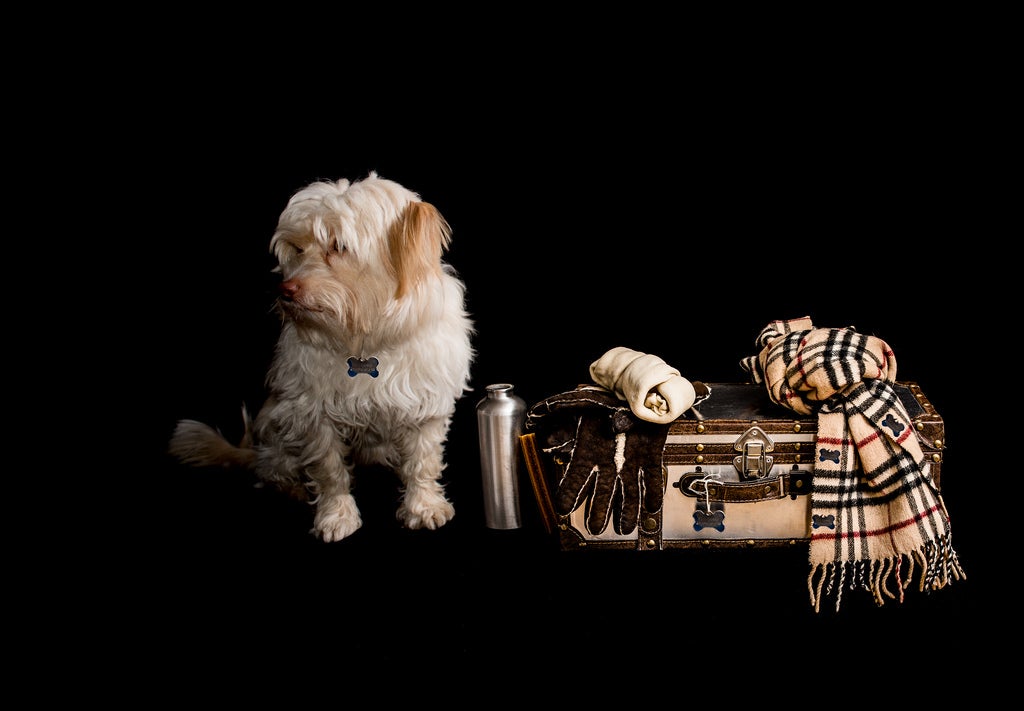
Create a list and stock up on all the things that will increase your pet’s comfort during the flight. You should ensure that you have a spacious carrier that is appropriate for travel. If you plan to fly, your airline will specify the requirements. Some items you should acquire and prepare include the following:
- Get Your Pet Comfortable With the Carrier : Give your pet plenty of time to get used to the carrier at home by leaving it out with the door open. Put their favorite bed or blanket inside, leave a toy or treat, and praise them for going in on their own. Don’t push it, just give your pet time to adjust.
- Invest in Calming Products : You might also want to consider anxiety-reducing products like a pheromone collar or lavender oil, which you can sprinkle inside the carrier for a calming effect. Another accessory to consider is a pet calming vest, which applies gentle pressure to specific areas to reduce anxiety. If your pet has a beloved blanket, stuffed animal toy, or even a shirt that smells like you, place that inside the carrier for comfort. Important! Make sure no tranquilizer is used on your pet that will reduce their blood pressure. This is especially dangerous at altitude for brachycephalics.
- Pack Items for Restraining : Make sure you have collars, leashes, muzzles, safety vests, and other items that will help you keep your pet under control at all times.
- Think Comfort : Check the weather and environmental conditions where you’ll be going. Be sure to pack collapsible water bowls, treats, toys, rain jackets, swimming safety vests or any other items your pet could use.
- A small amount of dry food
- A small collapsible bowl
- Medications and first aid items
- Travel documents, like a rabies certificate
- A favorite soft toy, blanket, or pillow
- Treats and dental chews
- Your veterinarian’s contact information
Hot Tip: Check out these great travel dog bags for some stylish ways to carry all of your pet’s items.
Watch Your Pet’s Diet

If you can keep to your pet’s accustomed diet for a while after arrival, it will help to avoid stomach upsets. Your pet will be out of sorts in unfamiliar territory, so changing up its diet could spell disaster. Here are some ways to keep your pet on course:
- Dry Food : Depending on the mode of travel and destination, if you use a dried food, you can probably carry enough with you for a couple of weeks. You can also research the location to see if you can purchase some food upon your arrival, or even have it shipped there. Some hotels will have your pet’s favorite food on hand if you set things up ahead of time. In this case, planning is crucial.
- Canned or Fresh Food : If you normally use canned or fresh food, it may be worth getting your pet used to a completely dry food diet before you travel. If they must have canned or fresh food, you will need to make sure you can either buy it or ship it to your final destination.
- Seeds : If you plan to transport a bird or small animal that eats seeds, be sure to check the country you plan to go. Some places will not allow certain types of seeds into their country.
Your pet will most likely be hungry after the long trip, so do your best to ensure they have the food they need to keep them energetic and healthy.
Plan for Emergencies and the Unexpected
The U.S. Department of State recommends pet owners have an emergency plan in case they need to send their pets back home or leave them behind in the destination country. The plan should include:
- Who to Call : Your contact information, as well as your veterinarian’s.
- How to Care : Instructions about your pet’s care and feeding, including medications and preventative treatments.
- Where to Stay : Contact details of at least 1 trusted person or facility with whom your pet could stay, both in the destination country and back at home.
- How to Pay : Instructions on financial and medical resources your pet might need in an emergency situation and accessibility details, like phone numbers and hours of operation.
Hot Tip: Make sure you’re earning points for all of your pet expenses with a great credit card.
Keep Your Pet Calm and Comfortable During the Journey
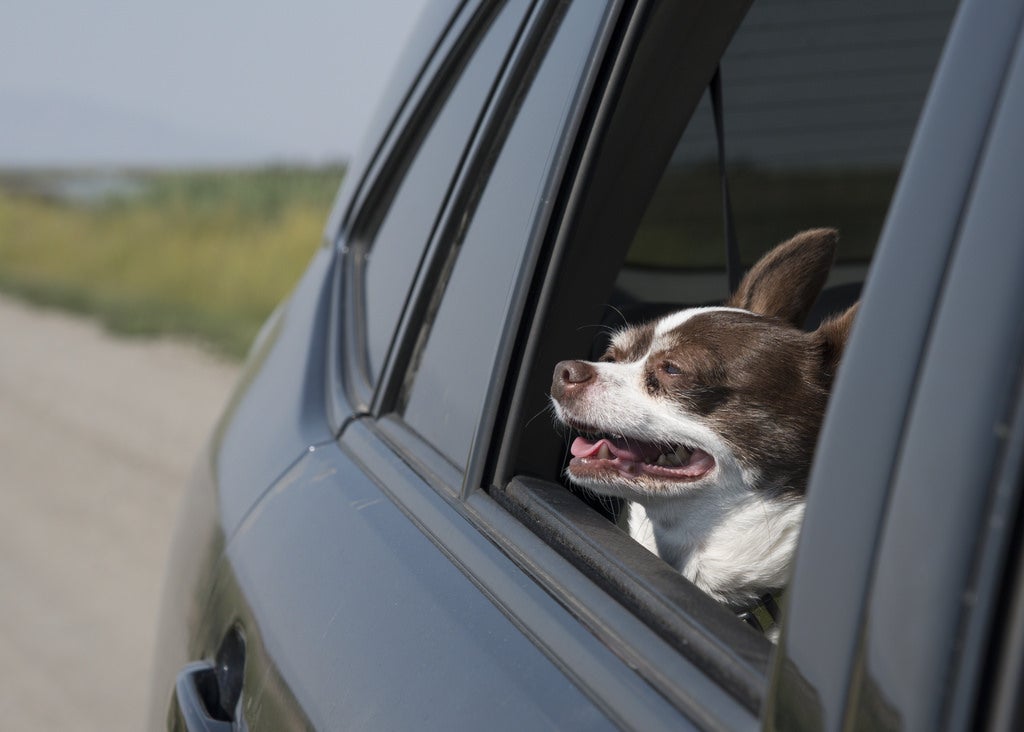
You may be feeling stressed on the big travel day, but it is important your pet sees you as calm and collected. Here are some tips from the ASPCA to help make your journey go as smoothly as possible:
- Talk to All the Airline Staff : Tell every airline employee or personnel that you have a pet traveling with you. If your pet is traveling in the cargo area of the plane instead of the cabin, you may want to confirm they have loaded your pet onboard. This is especially important if you and your pet take multiple connecting flights.
Sometimes airline staff will voluntarily approach pet owners on the plane once their pets have been loaded safely onboard, but this is not always the case. If you haven’t already been notified of your pet’s whereabouts before takeoff, don’t be afraid to politely request confirmation from the airline staff.
- Keep Your Pet Hydrated and Fed, But Not Full : Just like their human counterparts, pets should not have heavy meals before flying. Feed your pet between 3-4 hours prior to leaving. Be sure to give your pet a bathroom opportunity close to departure time.
Just like humans, pets get dehydrated while traveling and during flights due to the plane’s air filtration system. If possible, give your pet some bottled water to drink during the flight, but not an excessive amount as that will increase the chance of a messy accident. If you are unable to monitor your pet’s in-flight hydration, you should ensure they get rehydrated immediately after the flight. Be aware that drinking water that comes from a place your pet isn’t used to can cause digestive problems.
On other modes of transportation, like buses and trains, water may not be easily accessible, so find out if you can carry bottled water for your pet. If not, make sure they have water on board for your pet. You will need to do your research to make sure your pet has all the necessities and is well-cared for, no matter what mode of transportation you choose.
Enlist in the Latest Pet Resources

There are a number of gadgets and apps to help make your trip safer and easier, such as:
- Pet Trackers : There are a variety of GPS pet tracking devices (like the Nuzzle Collar) that will alert the owner when the pet exits a pre-designated area.
- Pet Insurance : You can go online to easily find a pet insurance plan that suits your budget and your pet’s needs.
- Pet Travel Apps : Install a pet travel app to help you find pet-friendly places and share your travels with friends and family, such as FIGO’s Pet Cloud and Bring Fido .
Keeping your pet comfortable and healthy while traveling requires a certain amount of planning and preparation, but it is well worth the time. You will both enjoy the trip more and arrive ready to go!
This resource was created by UpgradedPoints.com whose mission is to help travelers earn more points (predominantly through credit card usage) — and then use those points for maximum value . Dig into our ever-growing Guides & Resources section for even more info.
Like this post? Pin it on Pinterest!
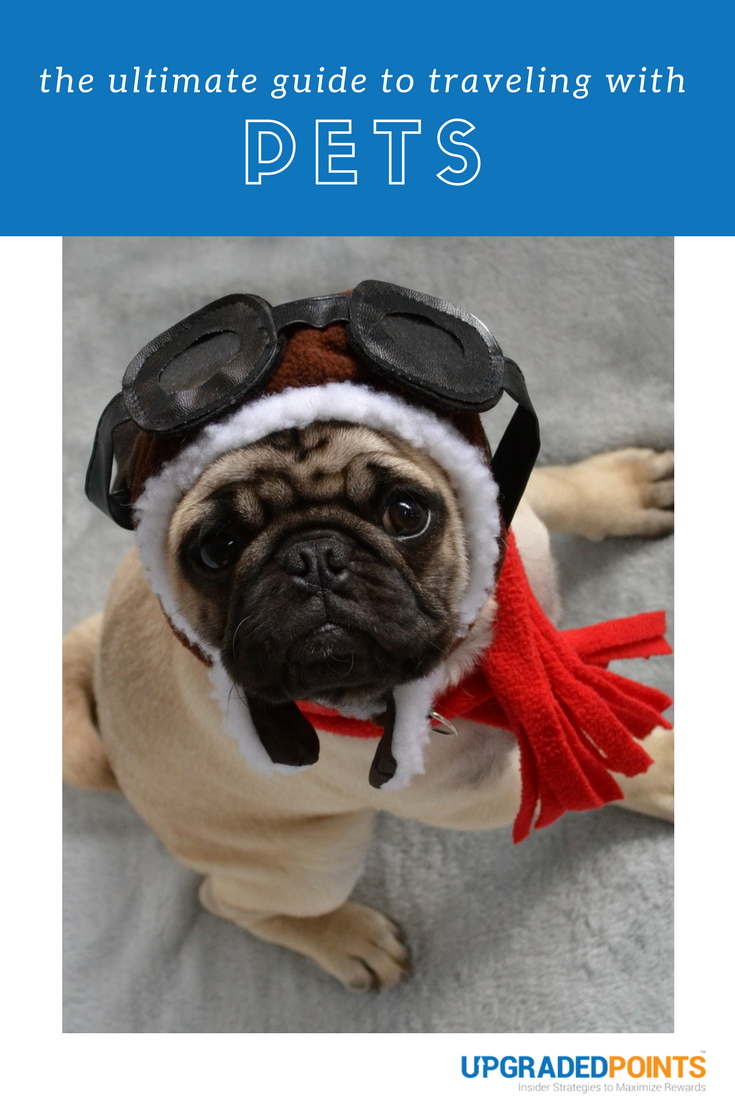
Frequently Asked Questions
What are airline pet travel policies.
Here are some of the pet policies for the top U.S. airlines:
- Southwest Airlines : Southwest Pet Policy and Pet Reservations
Was this page helpful?
About Alex Miller
Founder and CEO of Upgraded Points, Alex is a leader in the industry and has earned and redeemed millions of points and miles. He frequently discusses the award travel industry with CNBC, Fox Business, The New York Times, and more.
INSIDERS ONLY: UP PULSE ™

Get the latest travel tips, crucial news, flight & hotel deal alerts...
Plus — expert strategies to maximize your points & miles by joining our (free) newsletter.
We respect your privacy . This site is protected by reCAPTCHA. Google's privacy policy and terms of service apply.
Related Posts
![travel dog vet The Ultimate Guide to Buying the Best Travel Insurance [For You]](https://upgradedpoints.com/wp-content/uploads/2018/09/Travel-insurance-tag-on-luggage.jpg?auto=webp&disable=upscale&width=1200)
UP's Bonus Valuation
This bonus value is an estimated valuation calculated by UP after analyzing redemption options, transfer partners, award availability and how much UP would pay to buy these points.
Didn't find what you need? Use the search!
Pet Keen is reader-supported. When you buy via links on our site, we may earn an affiliate commission at no cost to you. Learn more .
How to Travel With a Dog Internationally: 3 Vet-Approved Tips
Vet approved
Reviewed & Fact-Checked By
Dr. Ashley Darby
Veterinarian, BVSc
The information is current and up-to-date in accordance with the latest veterinarian research.
Some of the more onerous responsibilities of pet owners include the requirements involved to bring them with you on your international adventures. Flights can be very traumatic for some pets so please take into account their temperament and how much they really need to make the trip before you decide to put them on an airplane. For short-term holidays a pet sitter might be a nicer option for your pet. If you do decide to fly them, it can be difficult to nearly impossible to figure out exactly what you need to pack, what papers are needed, and all that bureaucratic drudgery. In the interest of simplifying the process, we’ve created a detailed guide for exactly how to travel internationally with your best furry friend in tow. Scroll down for the requirements and specific how-to instructions.
- Before You Start
The first thing to research is your destination country. Every country has different and very specific requirements. For example, Australia has a minimum 10-day quarantine procedure for pets coming from the US. Countries that are free of certain diseases, such as Rabies, will require specific tests to ensure a new disease is not introduced into that country. Search for your destination countries requirements on the USDA website. 1 The procedures to prepare your pet for international travel can take months to complete so you will need to ensure you have enough time in advance.
Specialist pet travel companies are available to help with the planning, paperwork and transportation of your beloved dog. This can be a really worthwhile investment and many veterinarians strongly recommend using a service of this kind to help.
Sadly, some countries have breed restrictions, with the most common being Pitbulls . At the time of this writing, many countries around the globe have restrictions in place on Pitbull ownership and may not allow the breed in the country from abroad at all. Again, this should come to light during the planning stage of your trip and might affect where you can travel with your dog.
Airlines may also have their own requirements, adding another layer of headache to planning your trip. You should check out the kennel requirements, cost, and any other rules for the airline you’re traveling with. Service dogs, however, are legally allowed to be brought into any commercial airplane by their disabled handlers. American airlines for example has a list of restricted breeds and will not transport animals that have been medically sedated or tranquilized.
Your next stop will be to your vet. It’s a good idea to do a general checkup before traveling with your dog so you can ensure they’re in healthy enough shape for the trip. Young puppies and senior dogs may not be well-behaved or healthy enough, respectively, to travel overseas. We strongly urge heeding your vet’s advice on assessing if your dog is in good enough shape to travel. The vet can also help you with mandatory testing. In many cases, you will have to visit with a US Department of Agriculture accredited veterinarian as part of a country’s entry requirements. You can search for USDA accredited veterinarians on their website. 2
For a better idea of what you’ll need for your trip as a dog owner, check out our handy list just below. Tailor and adapt this as needed, depending on your destination and other changing needs.
- Collar with ID tag and your contact information
- Leash and harness
- Travel-sized dog crate- International Air Travel Association Approved
- Proof of your dog’s vaccinations
- Pet health certificate (depending on destination country)
- Microchip with microchip certificate
- Dry dog food for the duration of your trip
- Food/water bowls
- Dog treats in sealed packages
- Favorite toys and bedding
- Your regular vet’s contact details
- Medical records
The 3 Tips to Travel With a Dog Internationally
- 1. Pre-Trip Research
Before you book your flight, check both your destination country’s pet requirements for international travelers and the airline’s requirements. You’ll need your papers in order to avoid nasty surprises at the time of the trip. A week or two before your trip, you should head to the vet for a checkup and copies of vaccinations, if needed. If your dog needs a microchip or any other shots, this is also when to get that done.
When booking the flights take the comfort of your pet into account. Try to minimize the time in transit and the number of journeys for your pet. Try also to avoid exposing your pet to hot climates while traveling; if your destination is hot organize an evening flight.
- 2. Training Before Your Trip
In the weeks or months leading up to your trip, the most important things to work on with your dog are desensitization and socialization. Crate training is a must for your dog to safely and calmly travel, so we recommend making their crate a more welcoming place. Add toys, feed treats in the crate, and maybe add bedding if your dog won’t chew it up. Some dogs can’t have bedding, though, but you know your dog best. Never lock your dog in the early stages of crate training as this can be very distressing for them. Wait until they are happy and content in their crate before closing them in for short periods.
Desensitize your dog from the stressful traveling process by taking them on trips in the car to nearby pet stores or dog parks. Riding in the car will help acclimate them to the idea of behaving in rumbly moving vehicles, giving them the best chance of calmly making it through your flight. Reward calm behavior with treats and praise while ignoring whining or nuisance barking. Ideally, your dog should be well-trained by the time you leave. Consult with your veterinarian if your dog is not responding well to training.
- 3. The Day of Your Trip
Before your flight, take your dog on lots of potty breaks and feed them at least 4 hours ahead of the flight to minimize accidents in transit. It helps to wear them out at the dog park or with some vigorous playtime at home, which will leave them calmer and more relaxed for the trip.
For especially anxious dogs, there are over-the-counter calming treats or supplements that can help soothe them and make traveling stress-free.
For dogs traveling in the cargo hold, you may be able to leave a stuffed Kong or other favored treat in the crate to keep them occupied and stave off boredom. A shirt with your scent on it might help too. They need to toilet in their crate so place some absorbent material, such as puppy pads, down for them to go on. For small or toy dogs traveling with you in the cabin, check in on them frequently and offer some calming words and a pet if they appear distressed. Takeoff and landing are the most difficult times, so pay close attention during those phases.
Traveling abroad with a dog can be a hassle with many hoops to get through before arriving in your destination country. The most important steps are preparing for the trip itself, from your dull paperwork to training to keep your dog well-behaved and calm . If you’re careful to plan ahead, your trip will be as smooth as a trip to the dog park.
- S Department of State
- Centers for Disease Control & Prevention
- S Department of Agriculture
- https://www.avma.org/resources-tools/pet-owners/petcare/traveling-your-pet-faq
- https://www.aacargo.com/learn/animals-policy-and-restrictions.html
- https://www.polandvet.com/sites/site-1402/documents/Crate%20training%20dogs.pdf
Featured Image Credit: Tsuguliev, Shutterstock
Codee Chessher
Codee Chessher is a freelance writer whose mojo is: there is nothing a well-worded sentence can't accomplish! He loves to write about travel, DIY, pets, and more. Codee's experience is varied, but the written word has always been his strongest and biggest passion.
Related articles
How much exercise does an australian shepherd need vet approved advice, when will my labradoodle calm down facts & faq.
Search our database of over 16702 posts with up-to-date information from our experts and veterinarians.
Want to talk to a vet online?
Whether you have concerns about your dog, cat, or other pet, trained vets have the answers!
How to travel with a dog
Here’s how to travel with your dog for a stress-free trip
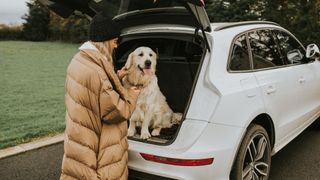
Preparing your dog for travel
Things to bring with you, traveling via car, traveling via train, traveling via air, traveling via water.
Whether you’re off on vacation or you’re traveling to visit friends or relatives, you might be thinking about taking your dog with you. But, if you’re wondering how to travel with a dog, you’re in the right place.
If you’ve not really traveled with your pup before, the first big journey can seem daunting at first – but it doesn’t need to be! Do plenty of preparation – and don’t forget those all-important dog treats – and you’ll increase the chance of your trip going without a hitch.
To find out how to travel with a dog, whether you’re going to another country or simply catching a train to a nearby city, just keep reading.
If your dog isn’t used to traveling, or hasn’t ventured much further than the vet or dog park before, it makes sense to help prepare them beforehand.
If your dog isn’t used to traveling at all, you may want to start with some short trips in the car, perhaps to the park or to see a friend in the neighborhood. Doing this is also a good way to find out if your dog gets travel sick or not.
Perhaps your dog needs to go in a crate when you travel. If so, it’s best to get your pet used to the crate or carrier before you begin your trip - you'll find useful tips in our how to crate train a dog guide.
And don’t forget to prepare yourself! Make sure you know exactly what the rules and requirements are whether you’re flying to another country or driving to your friend’s house across the country.
PetsRadar Newsletter
Get the best advice, tips and top tech for your beloved Pets
Make sure you’ve got a leash, in case you and your pup need to stretch your legs or they need the toilet – you don’t want to risk them running off in an unfamiliar location. But at the same time, ensure they have identification on their collar, just in case you do lose them.
Bring plenty of treats and toys, too, perhaps one of their favorite puppy toys or blanket. These are particularly important if they might be apart from you, maybe in the cargo hold on the plane or simply in a crate in the back of the car.
Bottled water is important, and of course, your pup will need their regular food and medications as normal. And, depending on your method of travel and destination, you may need a health record from your veterinarian.
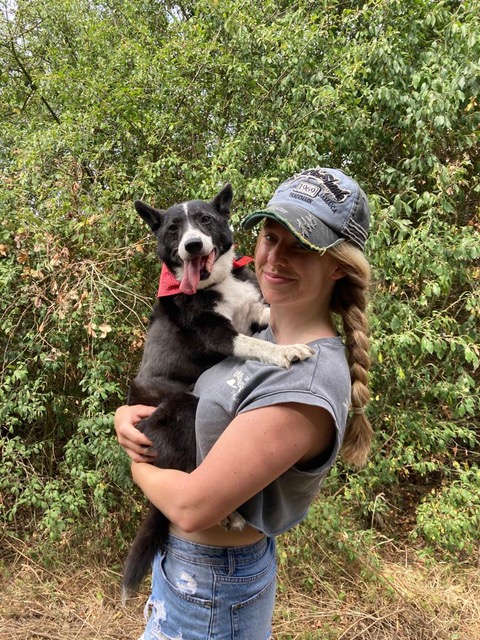
Anna works as a small animal vet in Hertfordshire, having graduated from the Royal Veterinary College. She loves surgery, and especially enjoys performing more complicated soft tissue and orthopedic procedures while studying towards her advanced surgical qualifications. Anna also works as a vet for Everypaw pet insurance, helping with claims queries and commenting on veterinary topics for many publications. Anna has several pets, including a bearded dragon and a tank of tropical aquatic life.
For the safety of both your dog and other passengers, it’s best not to let your dog roam free in the car. Ideally, they should travel in a crate that’s secured in place with a restraint or seat belt.
“If traveling in the car, a dog should have a comfy bed or crate for them to settle into,” according to Dr. Anna Foreman , vet at Everypaw. “Many dogs suffer from travel anxiety or sickness – having a safe place is important to help resolve these.” There are various signs of anxiety in dogs that can help you spot that your canine is feeling uneasy in the car like, restlessness, being extra vocal or increased nose licking.
If you’re driving, you might want your pup right next to you on the passenger side. But it’s best to keep them in the back instead, as airbags have been known to injure pets in the event of a crash.
“A dog must be restrained when in a car,” says Dr. Foreman. “This should either be through being in an enclosed space, such as a crate, or in a trunk with a guard between the trunk and main car body, or be secured to a seatbelt point via a harness.”
We’ve all seen dogs riding in the car sticking their heads out of the window, but there’s a risk of injury here from flying debris – and they could even get ill if they get too much cold air in their lungs.
Remember to give your dog rest stops, too. Particularly if it’s a longer journey, they’ll need to walk around for a little while and go to the toilet too – you won’t want any accidents in your car!
And, of course, you shouldn’t leave dogs in hot cars even for a short period of time. They can suffer organ damage or even death.

If you’re traveling by train with your dog, you should check with your train company to find out whether your dog is actually permitted onboard. On some trains, dogs are only allowed on if they’re under a certain weight.
If your dog is allowed on the train with you, it’s important to be mindful of other travelers. For their comfort, and that of your dog, ensure that you keep your pup with you at all times, and keep them occupied with treats and toys.
When traveling by train with your dog, it’s your responsibility to make sure that they have enough food, water, and exercise, and go for frequent toilet breaks.

When traveling with a dog, driving tends to be an easier option. But if this isn’t possible, air travel is generally a safe choice for your pet.
Often, airlines will request a health certificate, so it’s best to visit your vet beforehand to make sure that your dog is in good health and that their vaccinations are up to date. Different airlines may have different rules and regulations, so make sure you know what yours requires before you fly out.
When flying abroad, your pets might need to be quarantined upon arrival, and you may need to fill out forms. Again, this can vary, so familiarize yourself with the rules in the country you’re traveling to.
Some airlines let dogs travel in the cabin with you, if they’re small enough. This is the best option, as you can reassure them if they’re nervous. However, there are often limits to how many pets can travel in the cabin, so it’s best to find out if your dog can travel in the cabin with you in advance.
“Pharmaceutical agents such as sedatives are not recommended to be given to a dog before airplane travel, as a dog is not monitored when in the hold,” explains Dr. Foreman. “However the use of calming nutraceuticals such as Adaptil or Zylkene are permitted.”
Each year, some pets do sadly die when they’re transported in the cargo hold, but the vast majority get to their destination completely fine. However, you can increase the likelihood of a stress-free flight by choosing direct flights and ensuring that you’re on the same flight as your pet. Allow your pet a few weeks to become familiar with their travel carrier before the flight, too, and carry a recent photograph of your pet to help in the search should they become lost.
And while air travel is generally as safe for your dog as it is for you, it can be slightly more dangerous for brachycephalic, or short-nosed dogs, like pugs and French bulldogs. “The risk of air travel with brachycephalic breeds is much higher than those with normal length noses as they are much more likely to go into respiratory distress when stressed, especially dangerous if not monitored,” explains Dr. Foreman.
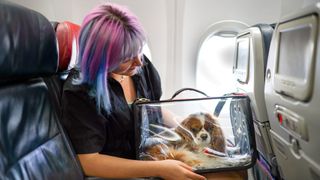
Pets are only welcome on a few ships – most often on ocean crossings – with many requiring that dogs are confined to kennels. Therefore, it’s best to check before you book.
“If traveling by boat, a dog is more likely to become travel sick, particularly during bad weather,” says Dr. Foreman. “Dogs who do not like water should not travel on boats, or if they must then a larger boat is less likely to cause stress. On smaller boats, it is recommended for a dog to have a life jacket on in case of emergency. Do not let a dog drink sea or dirty water!”
Traveling with your dog can be easy – and even fun. Sometimes, things can go wrong, but if you take precautions before and during your trip, it’s more likely that everything will go smoothly.

Adam is a freelance journalist covering lifestyle, health, culture, and pets, and he has five years' experience in journalism. He's also spent the last few years studying towards undergraduate and postgraduate degrees in journalism. While a cat person at heart, he's often visiting his parents' Golden Retriever, and when he's not writing about everything pets he's probably drinking coffee, visiting a cat cafe, or listening to live music.
Can dogs eat walnuts?
Should I be worried about the deadly-for-dogs parasite found in California? A vet answers
32 fun facts about basset hounds
Most Popular
By Lou Mudge 23 March 2024
By Lou Mudge 22 March 2024
By Jan Barley 21 March 2024
By Kathryn Williams 20 March 2024
By Jan Barley 20 March 2024
By Martha Terry 19 March 2024
By Alexis De Leaver 19 March 2024
By Kathryn Williams 16 March 2024
By Martha Terry 16 March 2024
By Kathryn Williams 15 March 2024
- 2 Trainer suggests feeding your dog from your plate when you're out and about, and it's not the advice we expected
- 3 32 reasons to love Persian cats
- 4 180+ funny cat names that are truly hiss-terical
- 5 Can dogs eat walnuts?
Our Services
- Chat with a Vet Online

Sick Pet Care and Diagnostics
- Allergies and Dermatology
Pet Pain Management
Orthopedic examination, neurological examination, electrocardiogram (ecg).
- Pet Ultrasound
Veterinary Diagnostic Imaging
Wellness and preventative care.
- Wellness Exam
Puppy and Kitten Wellness
- Nutritional Consultation
- Behavioral Consultation
Vaccination
Microchipping, travel certificates, domestic travel certificate, international travel certificate, surgical procedures, end-of-life care, in-home pet euthanasia, quality-of-life consultation, our locations.
- Philadelphia
- Washington, D.C. Area
- Conejo Valley
- Greater Los Angeles
- Orange County
- San Francisco
- How It Works?
- Our Veterinarians
- Referral Program
Pet Health Care Resources
- Pet Health Care
- Pet Nutrition
- Pet Symptoms
- Pet Conditions
- Pet Diseases
- Pet Medications
- Pet Lifestyle
Tools, Calculators & Calendars
- Pet Wellness Tools
- Pet Holidays and Awareness Days
Customer Support
- Help Center
- Code of Conduct

Our Mobile Veterinary Services

Sick Pet Services
If your furry family member is feeling under the weather, our mobile vet team will come to you! We’ll ensure they are feeling like themselves in no time.
When your pet isn’t feeling well, or you have concerns about their overall health, we’ll come to you.
Learn more about our Sick Visits
During a home visit, we can draw a small pet blood sample to test for common illnesses and disease.
Allergies & Dermatology
If your pet is experiencing signs of allergies, we’ll provide treatment options and referrals.
As part of your pet’s examination, we can evaluate your pet’s symptoms and neurological functioning.
During an in-home visit, we’ll evaluate your pet’s orthopedic health and discuss any concerns.
If your pet is in pain, we’ll make a plan during a home visit to help them feel better again.
Physical & Wellness Exam Services
Our veterinarians will perform a comprehensive nose-to-tail examination of your pet to ensure they are happy and healthy. Our wellness exam includes the following services:
Wellness Exam Services
Wellness exams are key to your furry family members health and longevity. This is a type of preventative care examination to ensure you’re staying on top of your pet’s health needs.
Learn more about our Wellness Exams
Regular vet visits for puppies and kittens are essential to support their growth and development.
Keep your pet up to date on essential vaccines and boosters as part of their preventative care plan.
Improve the chances of being reunited with your pet should they get lost with in-home microchipping.
Pet Nutritional Planning
Consult with one of our vets about your pet’s nutritional needs and long-term health.
Pet Behavior Counseling
Address general pet behavior questions and concerns and get recommendations from one of our vets.
BetterVet Wellness Club
Keep pet costs predictable & affordable.
Manage your pet's vet care with convenient appointments on a flat monthly payment. We come to you!
Scanning & Imaging Services
In select locations our mobile vet care teams can perform scanning and diagnostic imaging services using the latest veterinary technology. Some are small enough to be done in-home while others require our mobile vet trucks.
*These types of services can be added on to a sick visit.
Veterinary radiology is used to diagnose a wide range of medical conditions in pets.
When needed, we can perform a mobile electrocardiogram (ECG) service to better diagnose your pet.
Mobile Pet Ultrasound
When ultrasound imaging is needed to diagnose and treat your pet’s condition, we can help.
Pet Travel Certificate Services
Whether you’re going across state lines or visiting another country, our veterinarians can help you obtain the necessary documents for traveling with your pet.
When planning domestic travel with your pet, we’ll help you meet state requirements before visiting.
Before traveling internationally with your pet, we will help you comply with the requirements of ...
Telehealth & Telemedicine Services
BetterVet offers online veterinary telehealth and telemedicine consultations to answer all of your pet health questions.
Virtual Vet Visits
Our veterinary video consultations provide expert telemedicine for a variety of non-urgent issues. Virtual visits are a great option when you have concerns about your pet, but are unsure whether they should be seen. Our veterinary care team is available during regular business hours.
Learn more about our virtual vet visits
End-of-Life Care Services
Watching your pet grow old or develop a chronic condition is difficult. That’s why we provide compassionate end-of-life care for your furry family members, which include:
Euthanasia at home allows pets to cross the rainbow bridge peacefully and surrounded by love.
Keep your aging or ill pet comfortable at home as long as possible with hospice planning and care.
Mobile Surgical Services
Our veterinarians are skilled in routine and elective surgeries and outpatient procedures. These services are performed by our doctors at our mobile clinics or partner hospitals.
Our expert vets provide stress-free pet neutering surgery at partner veterinary hospitals near you.
Our expert vets provide stress-free spaying services at partner veterinary hospitals near you.
General Surgery
Your pet will be in good hands with our experienced doctors when a routine surgery is needed.
When your pet needs a dental cleaning, we’ll ensure that they stay comfortable and stress-free.
Experience the BetterVet Difference at Home
Skip the traffic by booking a mobile vet visit with one of our trusted veterinarians. We bring full-service vet care to you!
- Search Please fill out this field.
- Manage Your Subscription
- Give a Gift Subscription
- Sweepstakes
- Travel Products
- Family Travel
The 17 Best Pet Travel Essentials and Vet-approved Travel Tips
We picked the best bowls, backpacks, litter boxes, and more for traveling dogs and cats.
Katherine Alex Beaven is a Los Angeles-based travel, food and drink, and culture writer.
:max_bytes(150000):strip_icc():format(webp)/Katherine-Alex-Beaven-25bffd3fbeda41bc92974af662c60f0c.png)
In This Article
Jump to a Section
- Our top picks
Our Testing Process
Tips for traveling with your pet.
- Why Trust T+L
We independently evaluate all recommended products and services. If you click on links we provide, we may receive compensation. Learn more .
The Spruce Pets / Kristin Kempa
Traveling with your dog or cat can get overwhelming for both of you. On top of many pets having travel anxiety or getting motion sickness, they also get bored, have to use the bathroom, and get hungry and thirsty on the road. Whether you're traveling by car, plane, boat, or train (or even just going for a hike), you'll want to stock up on the top pet travel accessories to make you and your furry friend's experience a heck of a lot more enjoyable.
To get expert recommendations and tips for traveling with a pet, we spoke with Dr. Gina Rendon, medical director at Williamsburg Vet Clinic in Brooklyn, New York, and Dr. Catriona Love, medical director at Mercer Street Veterinary Hospital in Seattle, Washington. They shared important safety and logistical tips for traveling with your pet.
We also took recommendations from Travel + Leisure editors, did extensive research, and reviewed 131 products across seven different tests including ones for dog car seats, cat carriers, GPS collars, and more. Before you take your next trip with your pet, check out these travel accessories that will make vacations with the whole family run smoothly.
Best Airline-approved Dog Backpack Carrier
Mr. peanut's aspen series airline approved backpack pet carrier.
- Performance 5 /5
- Quality 5 /5
- Comfort 4.5 /5
Your pet will get great ventilation and views with mesh windows on all four sides.
The narrow width/height may not provide enough space for some dogs.
If you need an airline-approved pet carrier , this petite backpack-style dog carrier makes traveling hands-free with your dog a breeze. The thoughtful details stood out during testing, including several built-in pockets for storing treats, your phone, or waste bags. We also found the side water bottle pocket and laptop sleeve convenient. The interior is fleece-lined for your dog’s comfort, and there is a leash tether for security. Mesh on all four sides gives your pup a breathable space with all-sides peekability — two factors that can help comfort anxious travelers. This backpack is slim enough to fit under even the narrowest of under-seat space on a plane, but with only seven inches of interior floor width (as stated by the manufacturer, it’s made for smaller dogs). The padded backpack straps are easily adjustable, and you can also belt in the backpack with the handy seat belt attachment.
Best Dog Car Seat
Away the pet carrier.
- Comfort 5 /5
- Portability 5 /5
- Design 5 /5
It looks as good as it performs — and it has pet safety certification.
Minimal mesh paneling may be claustrophobic for some pets.
The Away Pet Carrier is a generous glow-up from the traditional pet carrier. Clean lines give this carrier a modern profile and silhouette, while the all-black color gives it an edge against the competition. We love this carrier not just for its looks, but also how it performs. Details like a water-resistant lining, removable plush bedding with a reinforced bottom, a retractable privacy screen, and loads of pockets and storage areas keep pets and pet parents happy. This carrier is also one of four pet carriers certified by the Center for Pet Safety for use in the backseat of your car. We tested this on a 12-hour car ride with a 6-pound dog who does not typically like car rides, and the dog seemed comfortable and secure, sleeping for almost the entire ride. It’s worth noting that there is limited mesh paneling (only on the top and one side), which may cause some pets to get claustrophobic and/or limit breathability in some situations.
Best Car Seat Cover for Dogs
Urpower dog car seat cover.
- Ease of Setup 5 /5
- Functionality 5 /5
- Ease of Cleaning 5 /5
It is easy to install and has high sides for full protection of your car and pet.
It’s got fixed measurements, so be sure it’ll line up correctly with your car’s backseat space.
Road tripping with your pet? Polyester and 600D PVC material keep this hammock-style cover sturdy, durable, and waterproof — and your backseat spotless. We thought installation was painless, but take note if the fixed measurements and anchor strap placement fits with your car before buying. We love the high all-sides protection this cover provides so you don’t have to worry about cleaning up any shedding or mess from the floor, doors, or seatbacks — or your pet crawling up into the front seat. Cleaning the cover is as easy as wiping it down with a damp cloth. A purposeful design includes slots for accessing seat belt bases so you can clip in your pet for the ride, a nonslip rubber backing for stability when on the move, and a storage pocket with a Velcro closure for pet essentials. It comes in seven neutral color options, including a multi-colored paw print pattern and two black variations with orange accents.
Best Portable Pet Bowl
Maxbone go portable bowls.
Maxbone
It’s a stylish silicone pet bowl that you can roll up and toss into your bag.
The bowl size may be more of a snack size for larger pets.
This roll-up, two-in-one silicone pet bowl set is our favorite way to feed our pets on the road and gives us one less thing to keep track of while in transit. Each set comes with two bowls approximately five by two inches that are connected to a larger flat mat measuring 15.4 by 9.3 inches. The bowls are more like walled wells, and each holds around two-and-a-half cups. We tried this out with a dog who loves to splash, but the built-in placement and the way the bowls are attached mat them virtually spill proof (anytime the dog did scoop out food or spill water, the silicone mat would catch it). We also found the soft silicone veasy to clean with soap and water, and we love how quickly it dries — two big pluses when you’re on the move. The fact that you can easily roll up the mat and stick these bowls into your pet’s carrier or a tote also scores big in our books. Plus, the geometric design of the bowls adds an element of style to a product that is usually bland. These Maxbone Go! Portable Bowls are also available in contemporary colors like mint, pale yellow, peach, and sand.
Best Dog Food Storage
Iris airtight food storage container.
- Design 4.5 /5
- Performance 2 /5
- Durability 5 /5
- Easy to Clean 5 /5
Both containers have easy-to-load, flip-top lids that snap shut.
The larger sizes may not be suitable for all types of trips.
This double-decker food storage container is an ideal way to keep your dog’s kibble fresh while on the road. We were big fans of the top-loading, flip-top lids and how well they stayed sealed shut when put to the test. Cleaning just takes a little bit of soap and water, though you’ll want to make sure the inside is completely dry before closing the lid to avoid mildew from moisture. The 35-pound capacity is great for longer trips or multiple dogs, and the wheely bottoms mean no heavy lifting. We also like that there’s an included scoop. While it may not be small enough to take on the plane, the top container can easily fit into the backseat or trunk of a car.
Best Cat Carrier
Maskeyon airline approved pet carrier.
- Portability 4 /5
All sides can expand, but it still folds flat for easy storage.
The 19.5-inch length won’t be able to fly on several airlines.
Whether you’re heading to Vermont or the vet’s office, this expandable cat carrier is a smart way to give your cat a little extra space to lounge while you wait. We love that each side has an accordion-style, scratch-proof mesh expansion window, giving maximum configuration customization options. We transported a cat to the vet with all of the flaps folded in and then laid her out on a bench with some flaps unzipped when we got to the waiting room for extra space. Three exterior pockets keep travel essentials handy, and you have three zippered access and loading points, including from the top. This carrier can hold up to 20 pounds of cat, and you can carry it via built-in handles or a detachable shoulder strap. A soft-lined interior panel keeps kitty comfy, and it’s removable and machine-washable. The exterior is waterproof and wipes clean. The Maskeyon Airline Approved Pet Carrier is somewhat of a misnomer, though — its length exceeds several soft pet carrier requirements on a handful of airlines, including Delta, American Airlines, and United.
Best Dog Crate
Petmate pet kennel.
- Performance 4.5 /5
- Quality 4.5 /5
The metal grate is secure but super simple to open and close.
The small plastic handle makes it challenging to balance weight, especially if your dog is moving around inside.
This old-school dog crate carrier is a hardside option for transporting your pup. Assembly is quick and requires no tools, and there’s a small plastic carry handle. We like this carrier because it’s lightweight but sturdy and kept our pet secure during transport. It’s a bare-bones crate, but there’s enough room to put down a cushion or add your pup’s favorite toy. You can load dogs through the front gate or the top gate, both of which have a simple and easy pinch-and-lock feature. This crate is designed to hold up to 15 pounds of pup, but be warned that it can be difficult to balance weight sometimes since the plastic handle is small and placed at the center of the top.
Best Grooming Wipes
Floof renewing wipes.
They are biodegradable and don’t have a strong scent.
Don’t use these around your dog’s eyes or inside their ears — everywhere else is fair game.
These biodegradable, hypoallergenic cleansing wipes are a go-to grab that can function as a quick way to get rid of dirt and bacteria between baths or simply after a walk. Made from bamboo and other natural ingredients like soothing aloe and chamomile, these wipes are as good for the environment as they are for your pet. They are gentle enough to use from nose to tail (just avoid eyes and inside the ears), and we love that we don’t have to worry about dogs getting sick if they happen to lick an area that’s just been wiped. One of our editors keeps a pack stashed in their dog’s carrier to clean his paws after walks or to give a light, impromptu, all-over bath anytime on the go. Wipes come in 30-sheet packs with a plastic snap closure to seal in moisture, and they’re small enough to tuck into the pocket of your pet carrier for easy access.
Best GPS Collar
Link link smart pet wearable.
- Accuracy 5 /5
- Design 4 /5
It also works as a behavioral training device.
It requires a subscription to use.
Think of the Link Smart Pet Wearable Tracker as the Fitbit for dogs. This wearable takes GPS to the next level by also adding health and activity monitoring and behavioral training capabilities via sounds and vibrations. Plus, it works by transmitting location through Bluetooth, Wi-Fi, and mobile signals for the most accurate location information. You need to download an app, and we found it easy to set up and navigate. We were impressed by how accurate the tracking was through Google Maps, pinpointing not only the dog’s exact address, but also the specific area of the house she was moving through. This will be incredibly useful for travel or hiking with dogs. Owners will get alerts when their dog has moved beyond boundaries, and they can also set up temperature alerts, turn on the built-in flashlight through the app, and do real-time checks on health symptoms. There’s even a step counter. The catch? You’ll need a subscription for this wearable to work. Subscriptions have three options; monthly, yearly, and two-year. This wearable comes with two attachment options and a wall charger.
Best Dog Seat Belt
Kurgo direct to seat belt tether for dogs.
It puts the bulk of the pull against your dog's body, not their neck.
It is not compatible with certain models of trucks.
Unlike many dog seat belts, the Kurgo Direct to Seat Belt Swivel Tether for Dogs clips directly into your car's seat belt fastener versus looping around the headrest. This tether is designed to attach to a dog harness instead of a collar, centering the pull of the tether on your dog's torso rather than their neck. The swivel-head carabiner harness attachment also allows your pet to move around without getting tangled. While this car seat tether works with most cars, it is incompatible with the seat belt fasteners in Ford F-series trucks.
Best Cooling Jacket
Ruffwear swamp cooler dog harness.
It also fits medium or large cats.
You can’t put this in the dryer.
A top pet travel tip from Dr. Rendon is to "be mindful and plan for the temperatures of the places to which you are traveling" and prepare accordingly. Bring coats and booties if it's cold and cooling mats or vests if it's hot. The Ruffwear Swamp Cooler Dog Cooling Harness functions as an evaporative cooling vest and lightweight harness that stays wet to keep your pet up to six times cooler in high temps. Triple-layer cooling panels — wicking outer layer, absorbing middle layer, and an inner dry layer — are located along the chest, stomach, and back. A padded, quick-grab handle allows you to assist your pet easily when needed. Plus, the simple and intuitive side-buckle design makes it a snap to get on and off. The harness's aluminum V-ring clips and reinforced loops can hold up to the demands of rugged outdoor adventures. Bonus? The XXS size was a perfect fit for my medium-size, heat-intolerant (and harness-trained) cat. When it's time to clean, it calls for the gentle cycle and air dry only.
Best Heating Mat
K&h pet products heated thermo-kitty bed.
The heat level adjusts to your pet's body temperature.
It's too small for medium-to-large dogs.
To continue on the theme of preparing for the weather, you can keep your cat or small dog toasty with the K&H Thermo-Kitty Mat. The insertable dual thermostat heater is designed to warm up only when your pet lays on top. From there, it adjusts the heat level to your pet's internal temperature so it's always just right. This is a great travel pet accessory to take camping, on car rides in cold temperatures, or for accommodations without central heating. This bed is big enough for any size cat and small dogs.
Best Dog Boots
Ruffwear grip trex dog boots.
They provide great grip and heat protection.
The low-ankle design may cause paws to get wet in snow.
Ruffwear Grip Trex Dog Boots are high-quality, rubber-soled dog boots that protect your pet's paws on rugged terrain, hot rocks and sidewalks, and frosty or salted paths. Some owners even use these boots indoors on slippery hardwood floors thanks to the heavily textured Vibram outsoles. The actual shoes are made from mesh, giving your dog's paws a bit of breathing room in hot climates. The gusset design makes it easy to take these shoes off and on. While these shoes work well on salted pavement and in freezing temperatures (with socks), the short-rise design isn't ideal for walks in more than an inch or so of snow.
Best Water Bottle
Kalimdor dog water bottle.
The handy design and size also works for cats.
Some pets may not be comfortable drinking out of this unfamiliar shape.
Heat, stress, and anxiety may cause your pet to become thirstier and more dehydrated than usual. For trips with her small chihuahua, Dr. Love prefers the Kalimdor Portable Dog Water Bottle because of its small size and leak-proof design. This one-handed, two-in-one design has a plastic bottle base that can store up to 19 ounces of water (most bottles only hold up to 16 ounces). The scooped-out top functions as a water bowl that holds up to 2.8 ounces of water. Liquid is released directly into the drinking area by unlocking a switch and pushing a button. You can recollect any unused water in the storage bottle instead of tossing it out. The compact design makes it easy to carry in a travel bag or backpack, or you can loop it around your wrist. Our one note is that we wish this had a built-in filter.
Best Portable Litter Box
Travel cat porta pawty.
You don't have to toss out the litter at every stop.
The collapsible design translates to weak sides.
Finding a decent travel litter box is one of the biggest challenges of traveling with a cat. The Travel Cat Porta-Pawty Travel Litter Box solves multiple problems, including wasting litter. The zippered top and built-in side handle enables you to scoop and go, reusing the same lot of litter along multiple stops. Its construction also helps to block odors, which makes stays at pet-friendly hotels more comfortable for everyone involved. The top-flap design and standard litter box dimensions (19 by 14 by 5 inches) give your cat sufficient room to do their business. The seamless, leak-proof interior is a cinch to clean, and when you're not using the bag, it collapses, folds, and snaps into a rectangle that measures 9.75 by 8.5 by 4 inches. Litter helps the collapsible walls of this box stay up and sturdy, so don't hold back when filling it up.
Best Calming Supplement
Vetoquinol zylkene behavior.
It has a natural, non-sedative calming effect.
It may not be enough to calm some pets.
According to Dr. Rendon, "Zylkene calming supplements are derived from milk protein and recommended by behaviorists." They can be used for cats or dogs and are a good option for owners who want to try over-the-counter remedies before getting a sedating prescription like Gabapentin or Trazodone from their vet. This supplement's active ingredient, alpha-casozepine, has natural calming properties. Although it's derived from cow's milk, it is lactose-free. The dosage is administered according to weight and can be given in its original capsule form or as a powder mixed into food by opening the capsules. Dr. Rendon recommends starting the supplements a few days before travel. Every pet is different, and Zylkene may not be effective on some animals.
Best First-aid Kit
Adventure medical kits me & my dog.
It's a first-aid kit for both you and your dog.
It only covers four days of basic medical needs.
Love hiking with your dog or running on the beach together? Or do you just want to be prepared for everyday outing accidents? This first-aid kit is a two-in-one medical kit you can keep in your car or toss in your backpack before an outdoor adventure. It comes with two separate pouches of medical supplies — one for you and one for your dog — that can cover basic first-aid needs like splinter and tick removal, wound irrigation, cuts and scrapes, and more. There are enough supplies in each kit to last one person and one dog up to four days. Even though it comes with how-to medical guides, it's not meant for severe injuries.
We combed through results from seven different pet product tests to find some of the recommendations in this roundup, specifically looking for the most travel-friendly options. We tested over 130 pet products, including dog food storage containers, dog backpack carriers, dog car seats, car seat covers, cat carriers, dog crates, and GPS collars. Some staple attributes we tested for in each category included design, performance, value, and ease of use. For carriers, crates, and backpacks, we introduced the products to our pets, carried them around in the carrier, crate, or backpack for 10-15 minutes, and noted how comfortable the item was for both ourselves and our pets. We also did a test run through all the features and cleaning. For dog car seats, we drove around with our dogs in the car seat for a week and then cleaned the car seat, again noting how comfortable we both seemed and the ease of cleaning. All tested products were put through real-world testing scenarios in order to accurately assess their overall performance and value for readers and their pets. We also included T+L editor recommendations that they personally use for their own pets for portable pet bowls and grooming wipes.
Check airline and FAA requirements ahead of travel
Nearly every airline has its own rules for flying with a pet. Check with your airline well ahead of your flight to confirm if your animal will be able to fly on the plane. Many airlines accept service animals but limit the qualifications to certain breeds and type of service. Additionally, short-nosed breeds of cats and dogs such as pugs and Persians are often not allowed to fly in cargo due to breathing concerns . Most flights only allow for a maximum number of in-cabin pets per flight or will only fly with pets in the cargo during certain months. It's wise to make a reservation for your pet well in advance to secure them a spot on board.
Consider microchipping your pet
If your pet isn't already microchipped, your upcoming trip may be just the right excuse to get it done. This is to help others identify your pet and locate the owner in case your pet escapes or runs away during travel. Collars also provide this information but can easily slip off in different circumstances. Microchipping your pet is added protection that you'll be reunited if they get lost and may be required for international trips.
Map out walk and bathroom breaks ahead of time
When planning your trips and travel time, be sure to pencil-in some time for your pet to use the bathroom — and find out where they can relieve themselves. In some (but not all) airports, there are dedicated pet relief areas with fake grass where dog owners can take their pets to use the bathroom. Options for cat owners are far fewer, which is why having a portable litter box on hand is so, well, handy.
According to Dr. Rendon, one of the most important things you can do when traveling with your pet is to check each state or country's travel requirements well in advance of your trip. "You should contact your veterinarian or check the APHIS Pet Travel website for specific requirements," she says. "You may need a health certificate issued by a USDA-accredited veterinarian and approved by an APHIS veterinary officer in order to travel internationally. Your airline may also have specific requirements. Don't wait until the day before you travel to obtain the necessary paperwork!"
You must book a reservation for your pet in advance — some airlines allow you to do it online or through their app, while others will require a phone call.
"If you need to travel with your pet and they are too big to fly in the cabin with you (typically larger than 20 pounds), then cargo is a totally acceptable way to bring them," Dr. Love says. "It is always better to have them in the cabin with you because you can be with them, but that isn't always an option."
Both vets agree that the biggest downside to flying your pet in the cargo is that you're unable to monitor them or give them any anti-nausea or calming medicine as needed. Keep in mind that the cargo area is not temperature controlled and you should avoid flying your pets in very hot or very cold months.
One of the easiest ways to keep your pets safe while traveling is to keep them calm. "Don't wait until the day of travel to introduce your animal to a carrier or crate," suggests Dr. Rendon. "Place a familiar blanket or one of your worn T-shirts in the carrier with your animal so it smells like home. Carriers should be lined with a towel and covered with a disposable wee-wee pad that can be changed if an animal soils the pad mid-trip." She also recommends limiting the size of the meal you feed your pet before traveling in case of nausea.
Dr. Love recommends exercising your pet before travel so they are more relaxed or having someone sit in the backseat with them.
The cost of flying with a pet depends on the airline, where you are flying to, and whether you're flying your pet cargo or traveling with them inside the cabin. For example, Delta charges $95 for domestic flights with a carry-on pet, $75 for flights from the U.S. to Brazil, and $200 for other international flights, and you must contact the airline directly to determine cargo fees. United Airlines charges $125 each way for a carry-on pet for domestic flights. American Airlines charges $125 for a carry-on pet within and between the U.S. and Canada, Mexico, Central America, and the Caribbean (based on each country's entry policy).
Different airlines have restrictions on the age and breed of pets they allow to travel in the cabin. If your trip includes a voluntary stopover or connection of more than four hours, additional fees may apply for each connection segment. Check with your desired airline for specific pricing and restrictions.
Deciding how long your pet should ride in the car with you will be up to your individual pet. Some dogs may get antsy and need to go on their regularly scheduled walks, burn off energy, and use the bathroom. Monitor your pet during the car ride and check for signs of anxiety.
Why Trust Travel + Leisure
For this article, Katherine Alex Beaven got expert insight and tips from veterinarians and researched dozens of pet travel accessories for cats and dogs. She also combed through results from seven different tests for various pet products and personal recommendations from T+L editors, choosing the best options for travel.
In compiling our list of best pet travel accessories, we also spoke to practicing veterinarians Gina Rendon , medical director and lead veterinarian at Williamsburg Vet Clinic in Brooklyn, New York, and Catriona Love , medical director at Mercer Street Veterinary Hospital in Seattle, Washington.
Love a great deal? Sign up for our T+L Recommends newsletter and we’ll send you our favorite travel products each week.

An official website of the United States government
Here’s how you know
Official websites use .gov A .gov website belongs to an official government organization in the United States.
Secure .gov websites use HTTPS A lock ( Lock A locked padlock ) or https:// means you’ve safely connected to the .gov website. Share sensitive information only on official, secure websites.

Animal and Plant Health Inspection Service
Travel With a Pet

Do you want to travel with your pet to another State or country? Before you go, you may need to complete certain paperwork or tasks, such as getting a health certificate for your pet. Meeting these requirements takes time, so contact your veterinarian for help as soon as you decide to travel (whether by plane, car, boat, train, or other means).
Not all animals qualify for pet travel.
What is considered a pet? A pet is a privately owned companion animal not intended for research or resale and includes only certain animal groups.
Find out if your pet qualifies to travel
Your animal doesn't qualify for pet travel and is subject to different import regulations and export regulations if you:
- Don't see your pet listed below.
- Are exporting semen or embryos from any animal.
- Have a pet that's considered livestock or poultry, like pigs or chickens.
The following animals qualify as pets, meaning they're subject to pet travel requirements:

The following birds DON'T qualify as pets, meaning they're subject to different regulations:
Because they may carry and transmit certain diseases to the U.S. poultry industry, these birds are regulated as poultry.
- Guinea fowl
View import regulations and export regulations if the type of animal you have does not qualify as a pet.
I Want To...
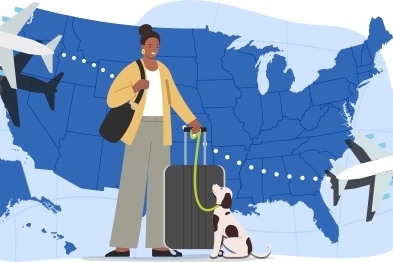

25 ways to travel with your pets without busting your budget
Posted: September 25, 2023 | Last updated: September 25, 2023
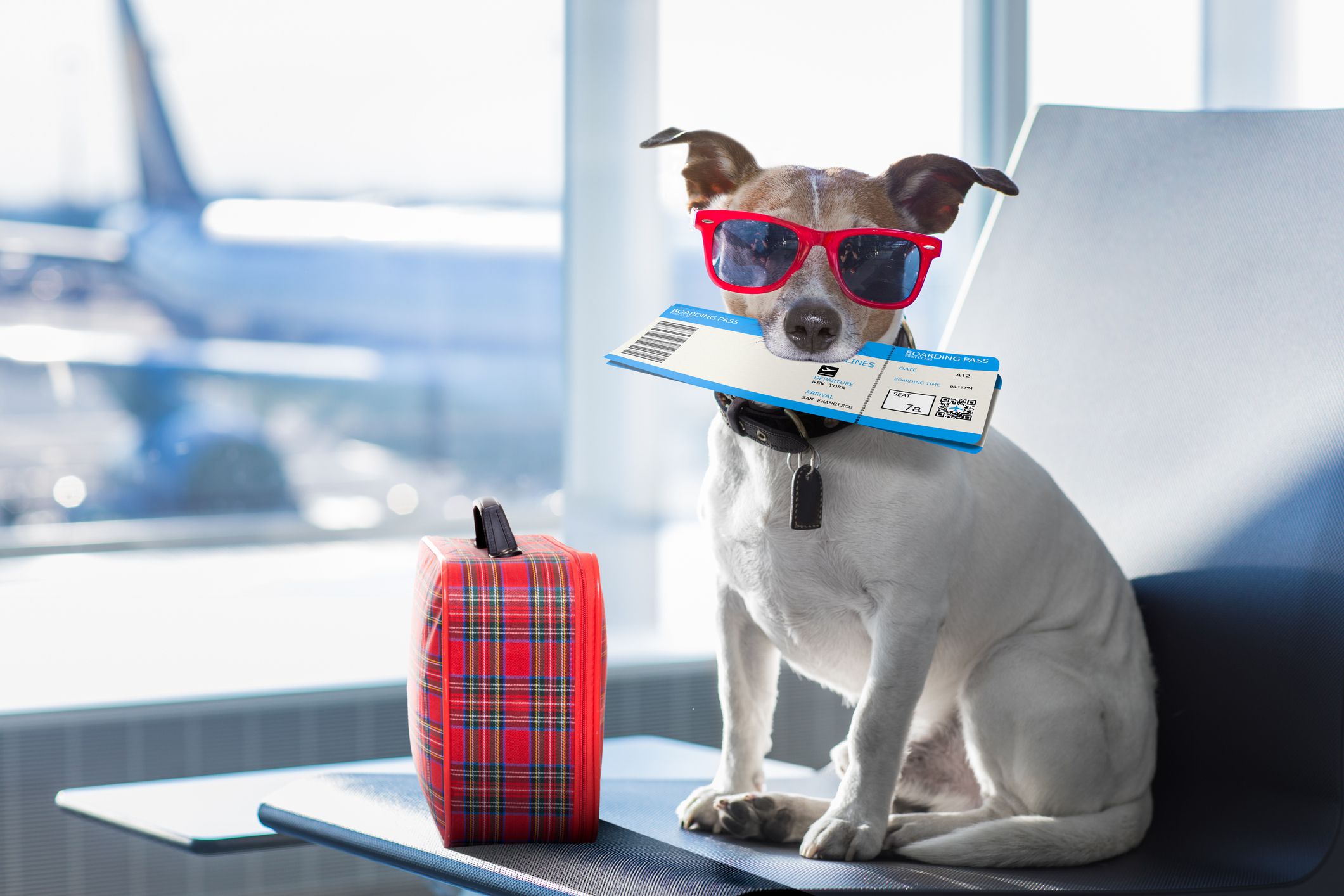
25 Tips to Cut Costs When Traveling With Pets
Traveling can already be costly, but add a pet and your prices could be even more anxiety-inducing. But sometimes traveling with a pet is unavoidable, be it because you’re planning on being gone for a while or you simply want to bring your best friend with you. Fortunately, if you’re looking for the cheapest way to travel with a dog or another pet, we have some tips to help. Beyond making sure you have all the budgeting tips you need to create a travel fund, here are some more pet-specific ways to save on travel.
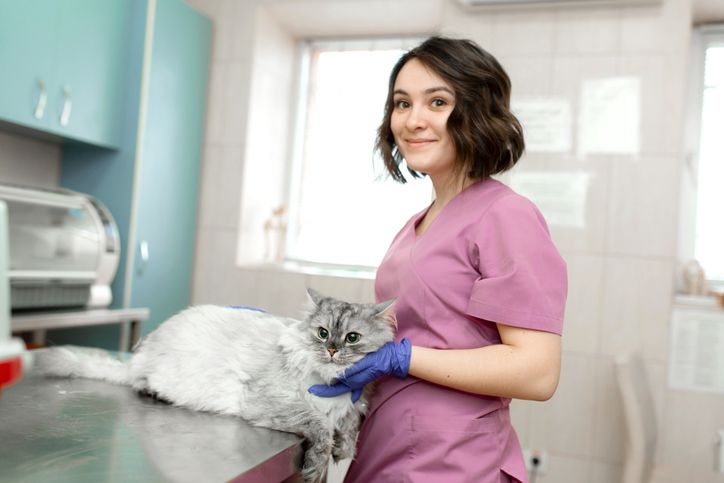
1. Be Savvy About Pre-Travel Vet Trips
If traveling by air or train, review what checkups and vaccinations your pet needs to travel well in advance. This will allow you to shop around for the cheapest vet, which can provide some major savings. This tip can really help you if you own a pet on a budget , even when you’re not traveling, as comparing local vet prices can help you save money on your pet’s next check-up!

2. Make a Packing List for Your Pet
Just like you make a list for yourself, a partner or even kids, make sure you have a list for your pet, too. This can prevent you from having to waste money re-purchasing items at your destination because you didn’t pack them.
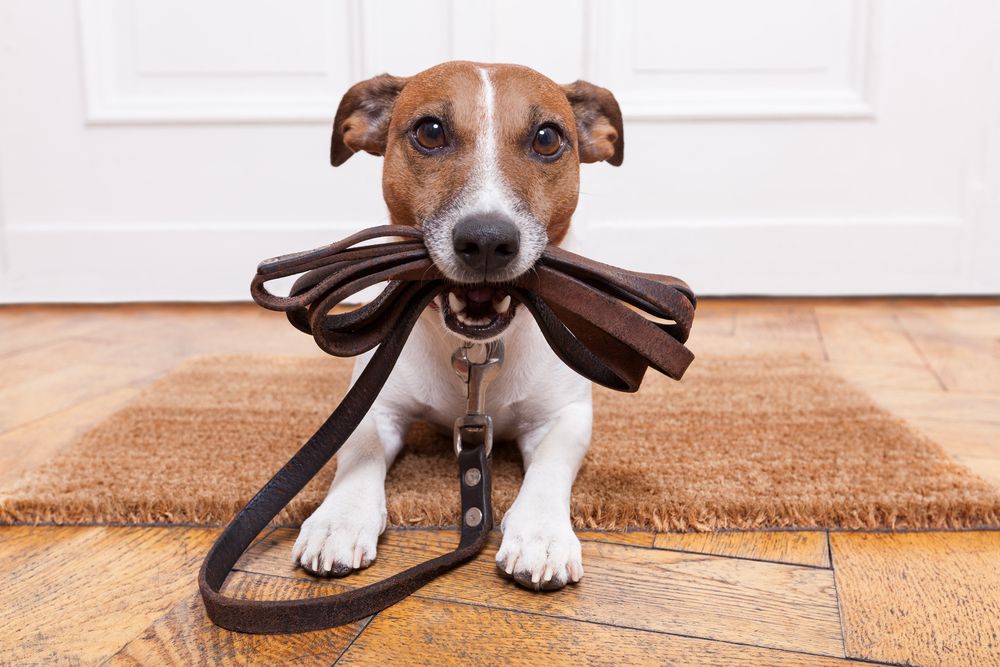
3. Bring a Leash & Harness
This may sound obvious, but it can be overlooked if you’re planning a trip to the country or somewhere else your pet may have free-reign. However, in an emergency situation, already having these items packed and readily available can save you both time and money. Plus, many cities and towns have laws that require dogs to wear leashes. Check out the laws in your travel destinations ahead of time to avoid potentially getting hit with a fine if you’re caught with a dog off-leash in an area with leash laws.

4. Pack Extra Food
Even if you don’t think you’ll need it, pack extra dog food and treats. If you end up being delayed because of traffic, layovers, canceled flights or other inconveniences you may end up having to buy pet food you didn’t plan for. Worse still, depending on where you’re delayed, you may have trouble finding spare pet food to purchase at all.
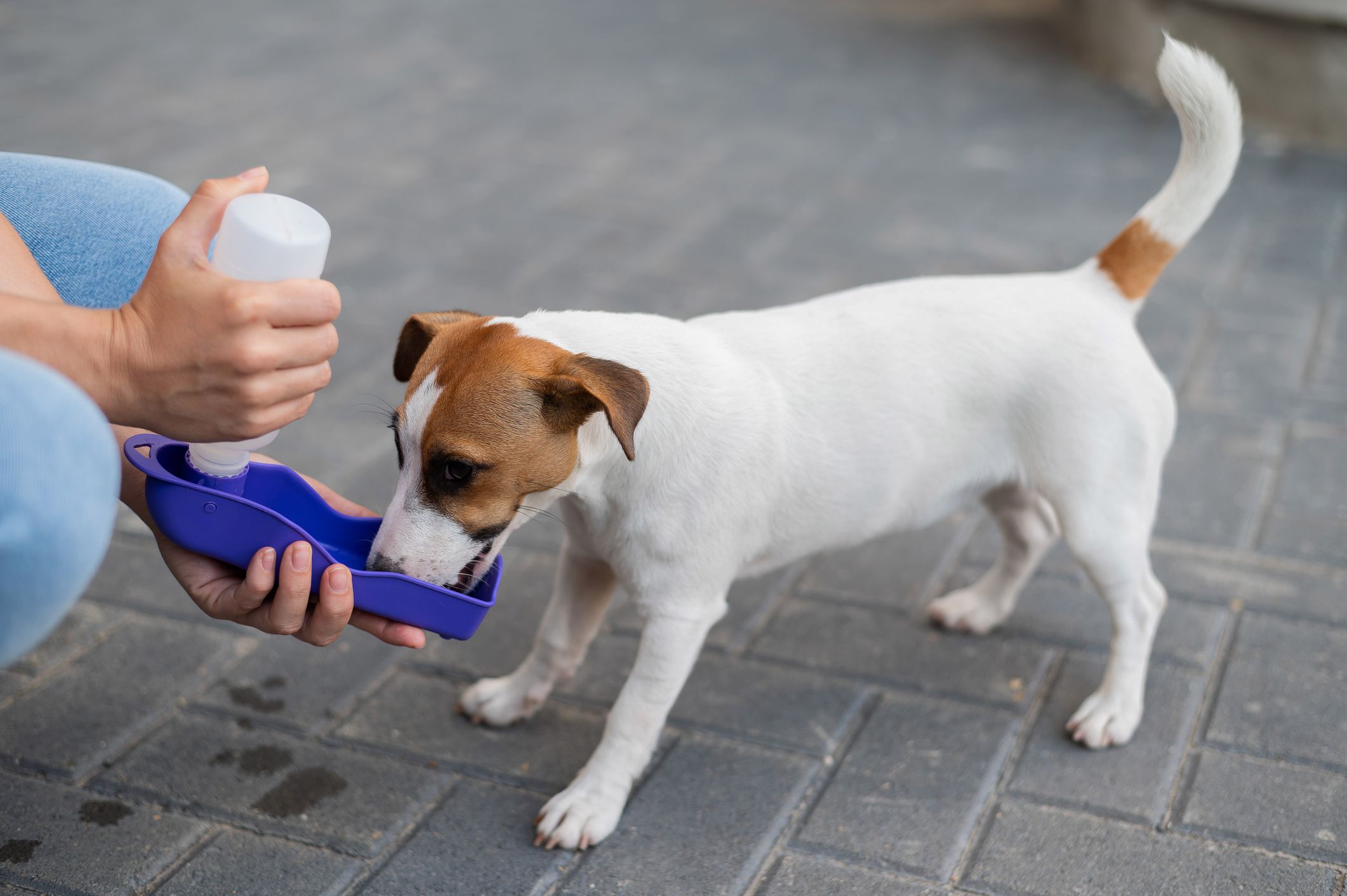
5. Don’t Forget Portable Water Bowls
At some point, be it while hiking or at a rest stop on a road trip, your pet is going to become thirsty. If you forget to bring a collapsible bowl, you may have to buy one on the road if you don’t have an empty cup large enough for them to drink from.
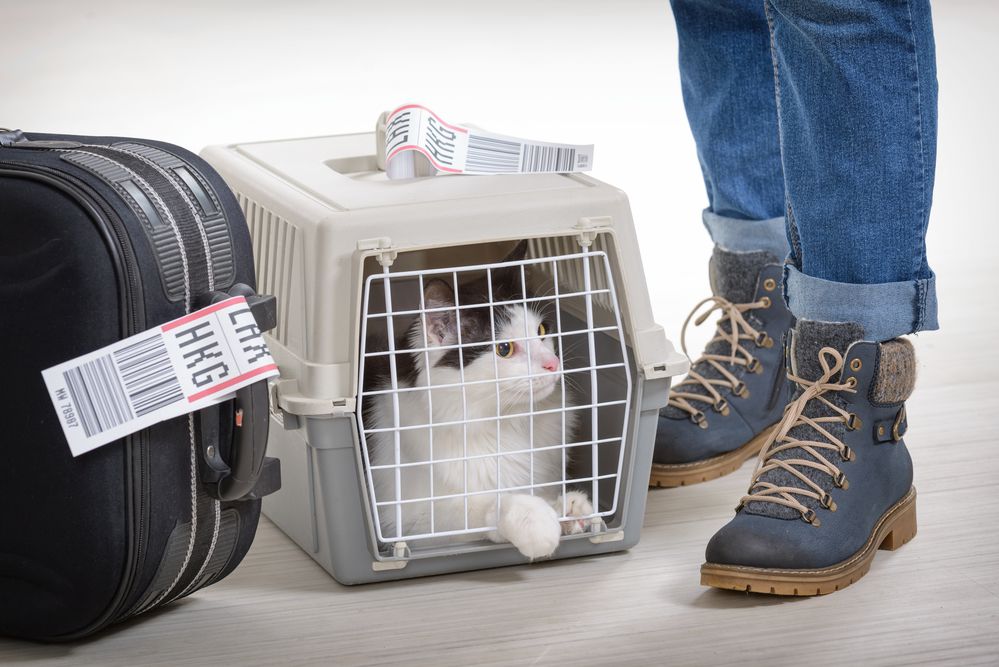
6. Check Your Carrier Dimensions
If you’re bringing Fido in a carrier for a train or airline, double-check ahead of time that your carrier fits their regulations. Just like luggage and carry-ons, airlines often have specifications for carrier sizes. Making sure your carrier will be accepted ahead of time can save you a lot of time and money.

7. Invest in Pet Car Safety Items
If you’re driving, make sure you have everything you need to make sure your pet gets to your destination safely. Sure, this may cost you money upfront, but a proper pet seat belt or travel crate could save your pet’s life or prevent costly injuries in case of an accident.

8. Compare Airline Pet Fees
An airplane isn’t exactly the cheapest way to travel with a dog or any other pet. Why make it more expensive by just going with the first airline that pops up on your search engine? You can save money by doing some comparison shopping sans pet, and given how expensive pet fees can be, it’s even more important to do so when traveling with your furry companion!

9. Consider Skipping the Hotels
Hotels can charge some pretty hefty pet fees, especially if your pet weighs more than 10 or so pounds. You can avoid the fees by opting for an Airbnb instead . Not only can this be a cheaper option when traveling with a pet, but it could give your friend more space to run and play, especially if your host has a backyard.
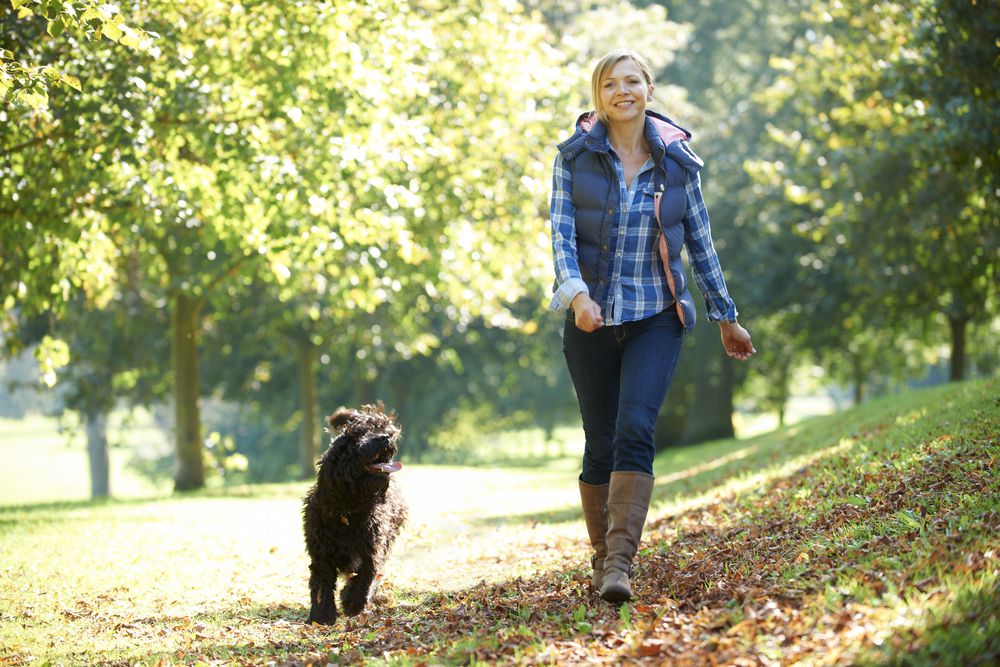
10. Research Dog-Friendly Cities
Pet fees in a major city like New York City are bound to be higher than those of a remote campground in, say, northern Michigan. So you may want to do your research before finalizing your destination to find cities and towns that are pet-friendly both in terms of the average fees charged for pets at hotels and how many dog-friendly activities are around.
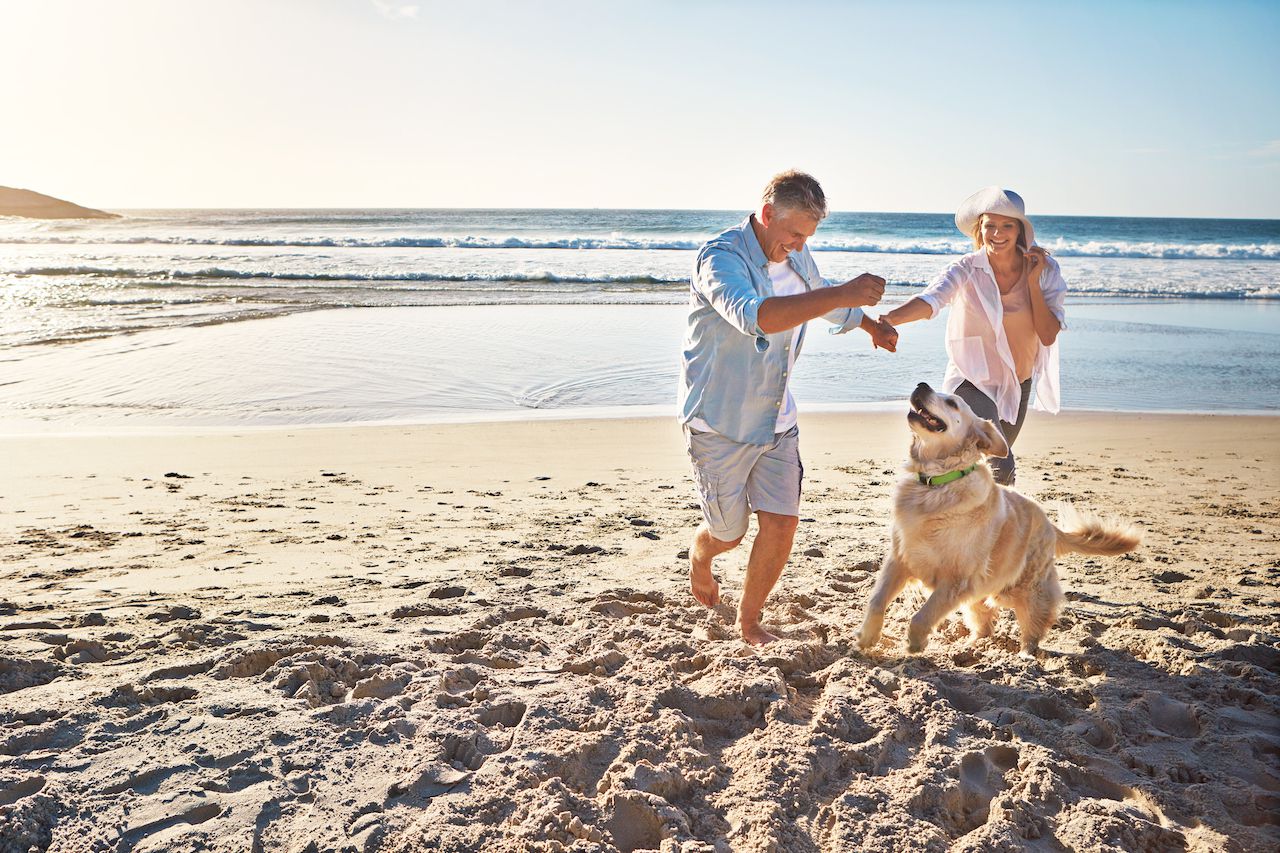
11. Look for Free Dog-Friendly Activities
Look for cities that offer beaches, hiking trails, parks and perhaps even restaurants where your furry pal can tag along. Many pet beaches and parks are free, so you and your pet can have a good time on a budget!
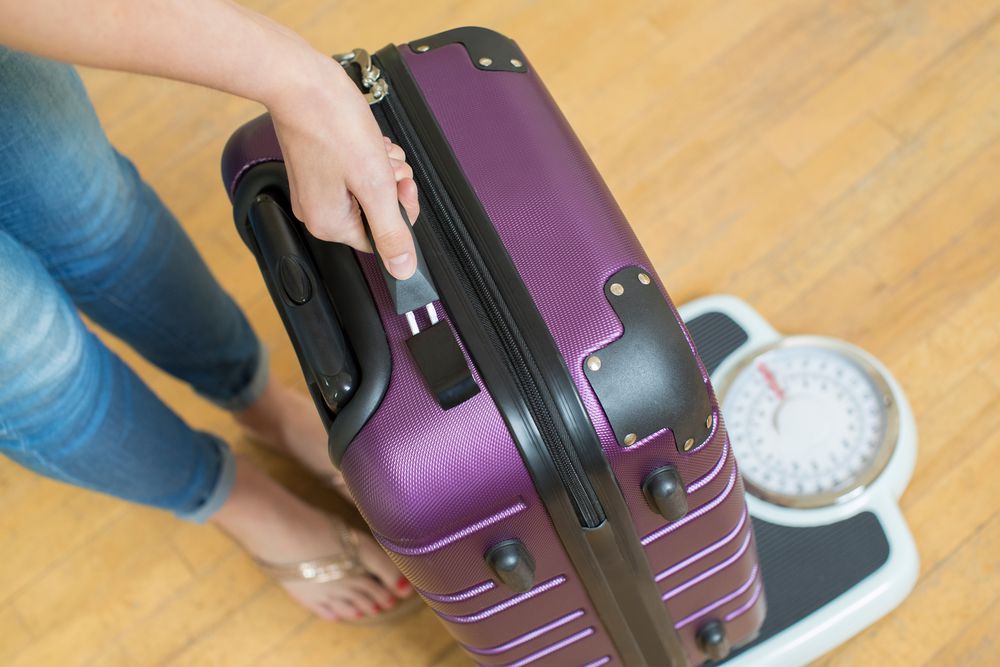
12. Determine if it’s Cheaper to Pack Pet Food
If you’re not traveling by airplane or a train with bag limits, then the odds are that it’ll be cheaper to bring your pet’s food than it will be to buy a bag at your destination. However, if your pet food weight is going to drive up the prices of your luggage, you may actually be better off just buying food from a local pet store when you land.
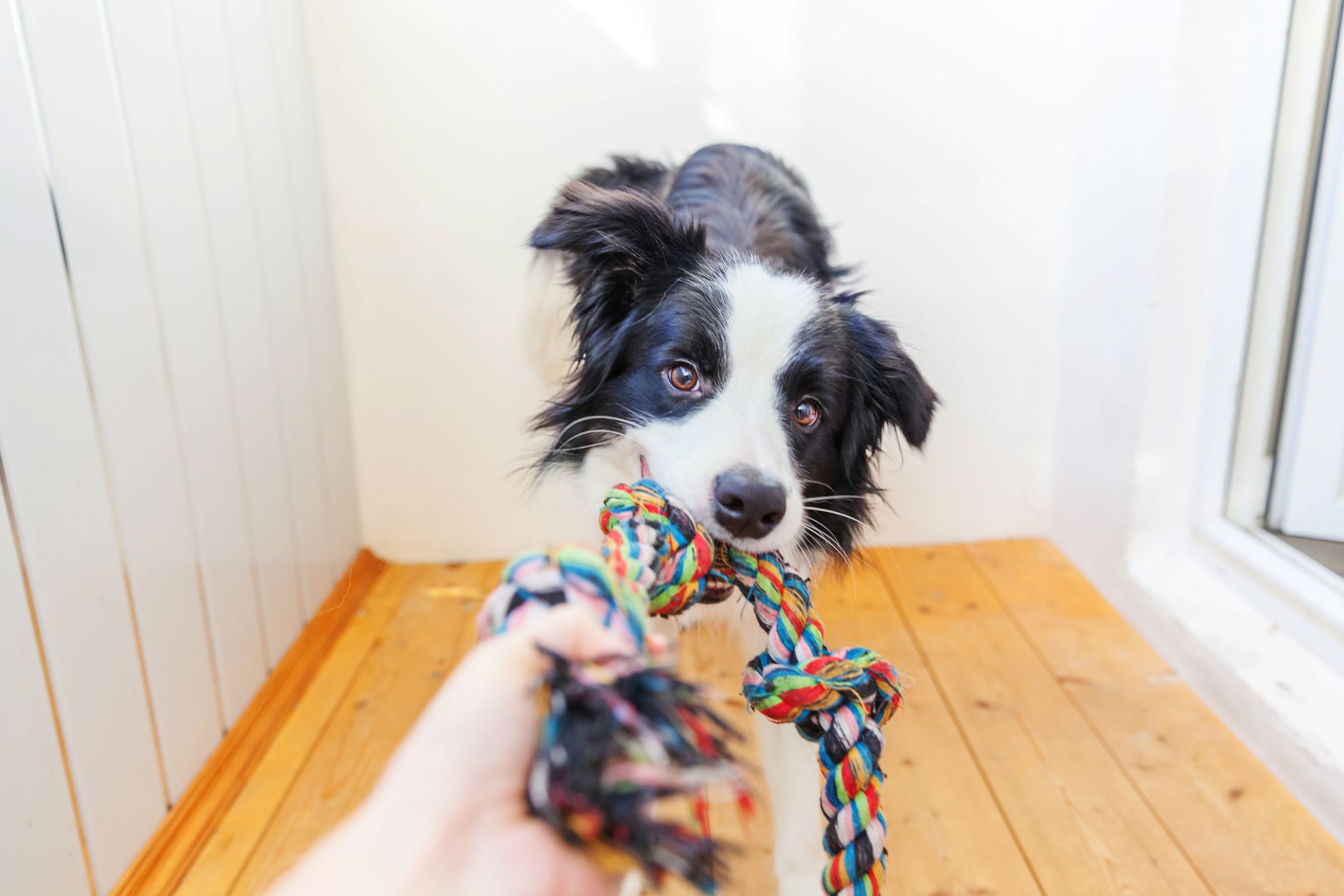
13. Don’t Forget the Toys!
Your pet will still want to play fetch, snuggle with her favorite stuffed squeaker and chew on his favorite bone. Not bringing toys could mean you have to buy toys at your destination to stave off having a grumpy (and even destructive) pet.
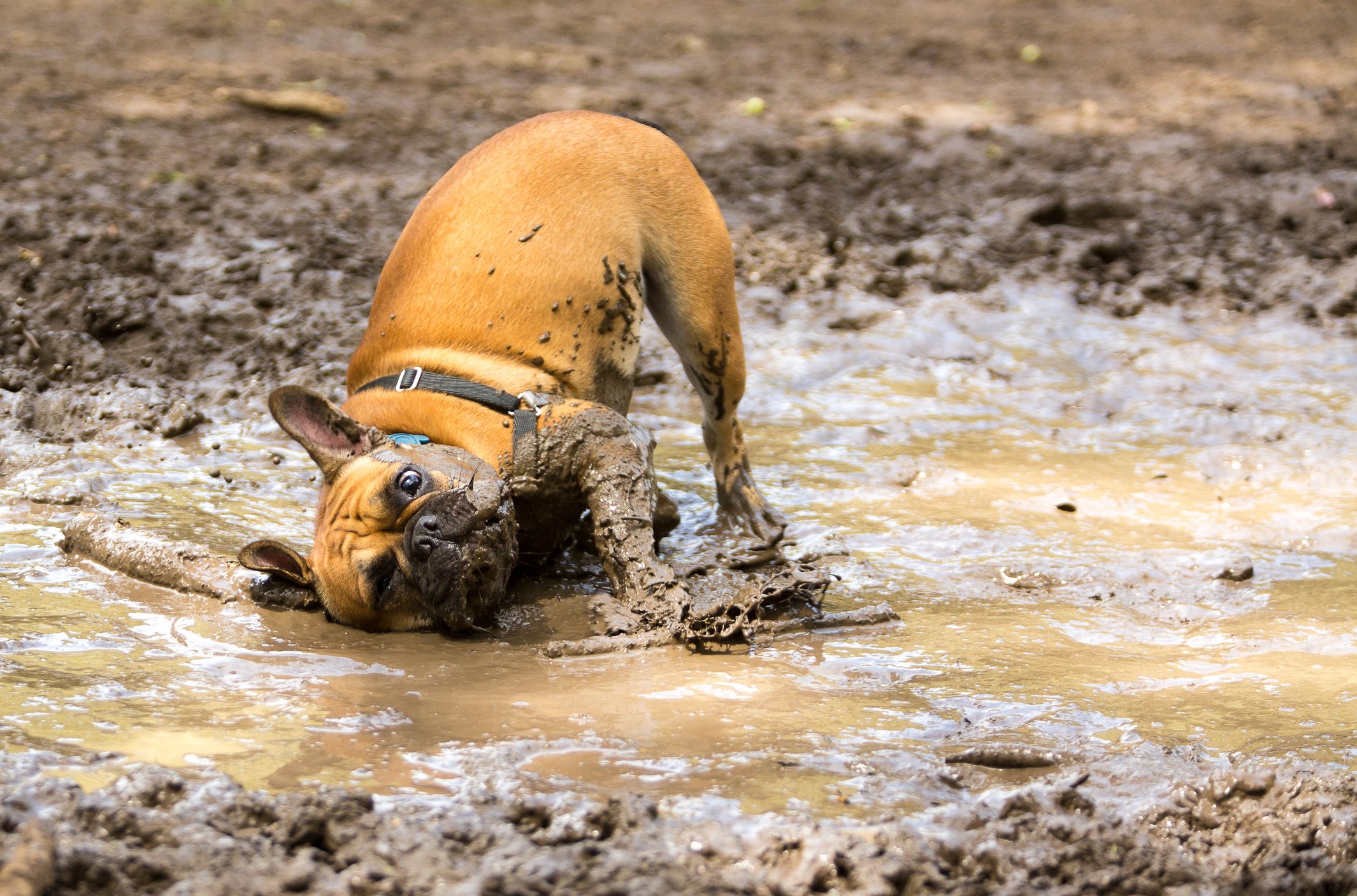
14. Pack a Pet Essentials Bag
Emergencies happen. Your pet could catch a cold playing in some mud at a rest stop or have an allergy flare up and need eye drops. To avoid paying for overpriced medications on the road, pack a bag of essentials you can keep handy whenever you’re out with your pet. Your bag could include wipes, treats, an extra leash, pills, water or anything else you think your furry friend may need in a pinch.
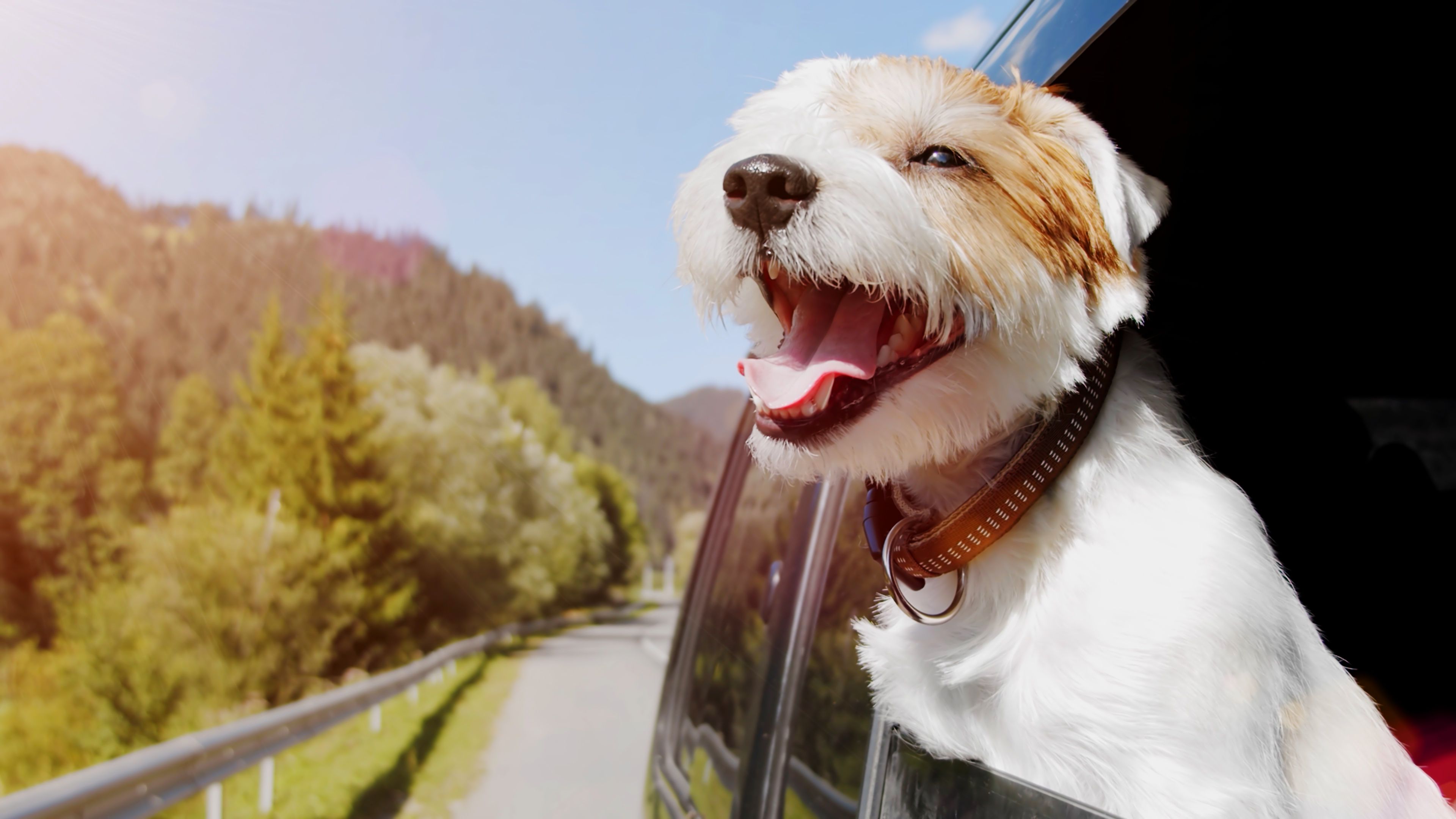
15. Reconsider Rental Cars
Many rental car companies charge exuberant fees for bringing along a pet. And if you don’t disclose you’re bringing a pet to avoid the fees, you could end up getting charged even more if they find dog hair or any accidents when you return the car. The cheapest way to travel with a dog is often to bring your own car, if possible. And if it isn’t, you may want to ask a close friend or family member if you could borrow theirs for the trip. Just be sure to offer to pay them and return it clean … or at least bring them back some great souvenirs!

16. Try Traveling by Train
If cars and airplanes aren’t going to work for your situation, then you may want to consider traveling by train. For instance, Amtrak allows you to travel with pets under 20 pounds if you keep them in a carrier for just $26 or 800 rewards points.

17. Collect Your Membership Cards
Are you a part of any membership programs with any chain pet stores? Be sure to bring those cards with you as you travel with your pet. These loyalty programs often offer benefits such as discounted products & services, and even rewards points that can benefit you and your budget if you end up needing to buy something at your destination.

18. Research Local Vets & Emergency Clinics
No one wants to think about a pet getting sick or injured on a trip. However, knowing your options and having a plan if an emergency happens while you’re out of town can save time and money.
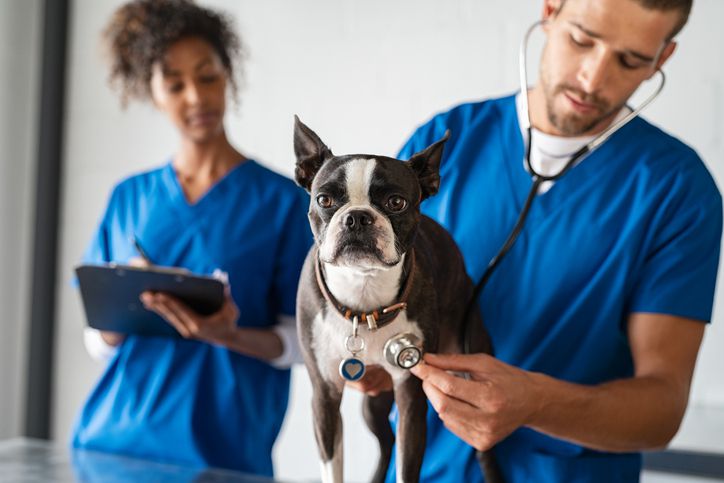
19. Check Your Pet Insurance Policy
Check if your pet insurance policy is likely to cover a pet bill from a vet office that is out of town. Additionally, make sure the policy is up-to-date before leaving to avoid paying high fees if you do need a vet while you’re on vacation. You probably don’t want to find out your pet insurance expired during an emergency vet visit while traveling.
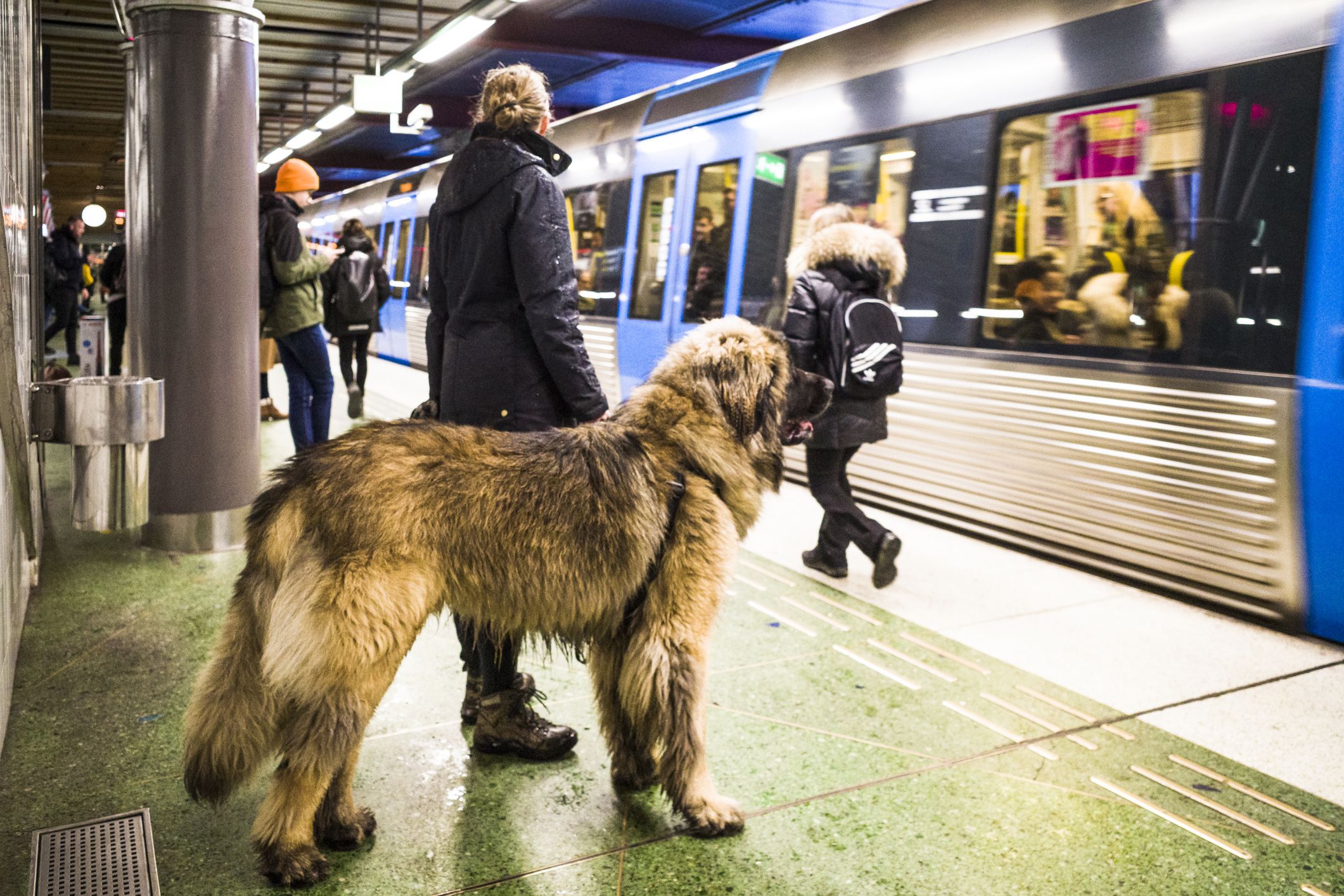
20. Ask About Public Transportation Policies
Do you plan on traveling by cab or bus when you get to your destination? Call ahead of time and see if your furry companion is allowed to ride with you on the modes of public transportation you plan to use. Most cities allow animals that can fit in a carrier under the subway or bus seat to ride for a small fee or even free.

21. Don’t Forget About Non-Pet Savings
Have a few tried-and-true travel hacks ? Be sure to use them even if you’re traveling with a pet! You can save on human and pet-related grooming products by using hotel soaps and shampoos, if your pet doesn’t have an allergy to them. Other popular hacks, like having flexible travel dates and using credit card points can also still save you money when you travel.
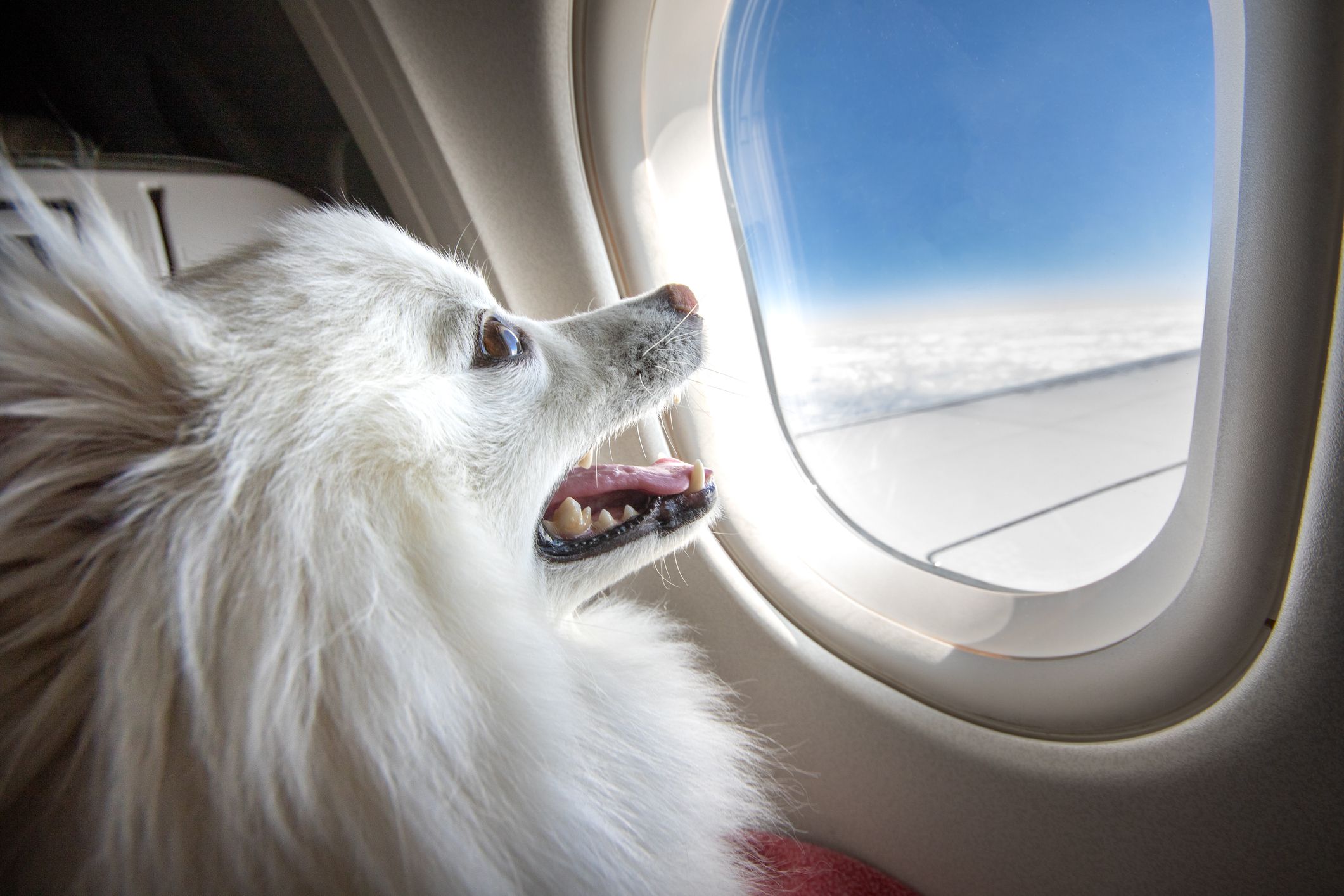
22. Try to Get Direct Flights Only
If you have to take an airplane , try to only take direct flights. While layovers could mean savings if you’re traveling alone, it actually could end up costing you more time and money with your pet. A direct flight can be less stressful for your pet and prevent you from spending on food and amenities to pass the time.
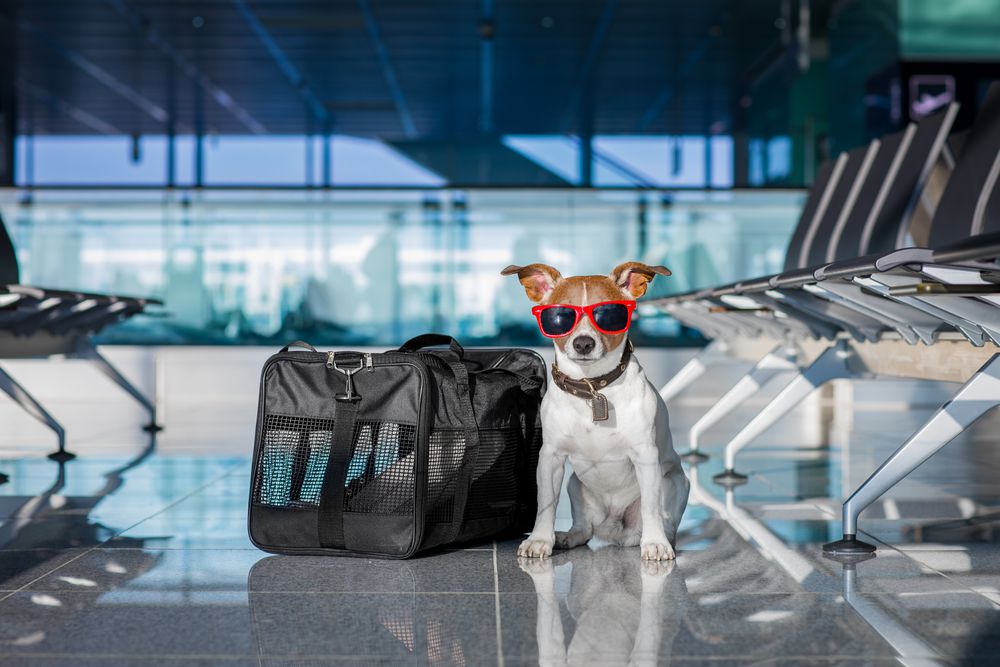
23. Travel During ‘Off’ Season
Airplanes, rideshares and other means of transportation with a pet will all be cheaper if you travel during odd times. The cheapest days to fly are usually Tuesday or Wednesday, for instance, and prices for Uber and Lyft are lowest outside of commuter hours. By traveling during less busy times and seasons, you’ll most likely have lower costs for services like UberPets, too.

24. Use Rewards Points
Pet or no pet, rewards credit cards can help you save money while on vacation. If you’ve collected enough rewards points and awards you can use them toward your expenses to cut down on costs. And even if your rewards bank is empty, you can still use your cards to build up points so you’ll have a nice stack of bonus rewards ready to use on your next trip.
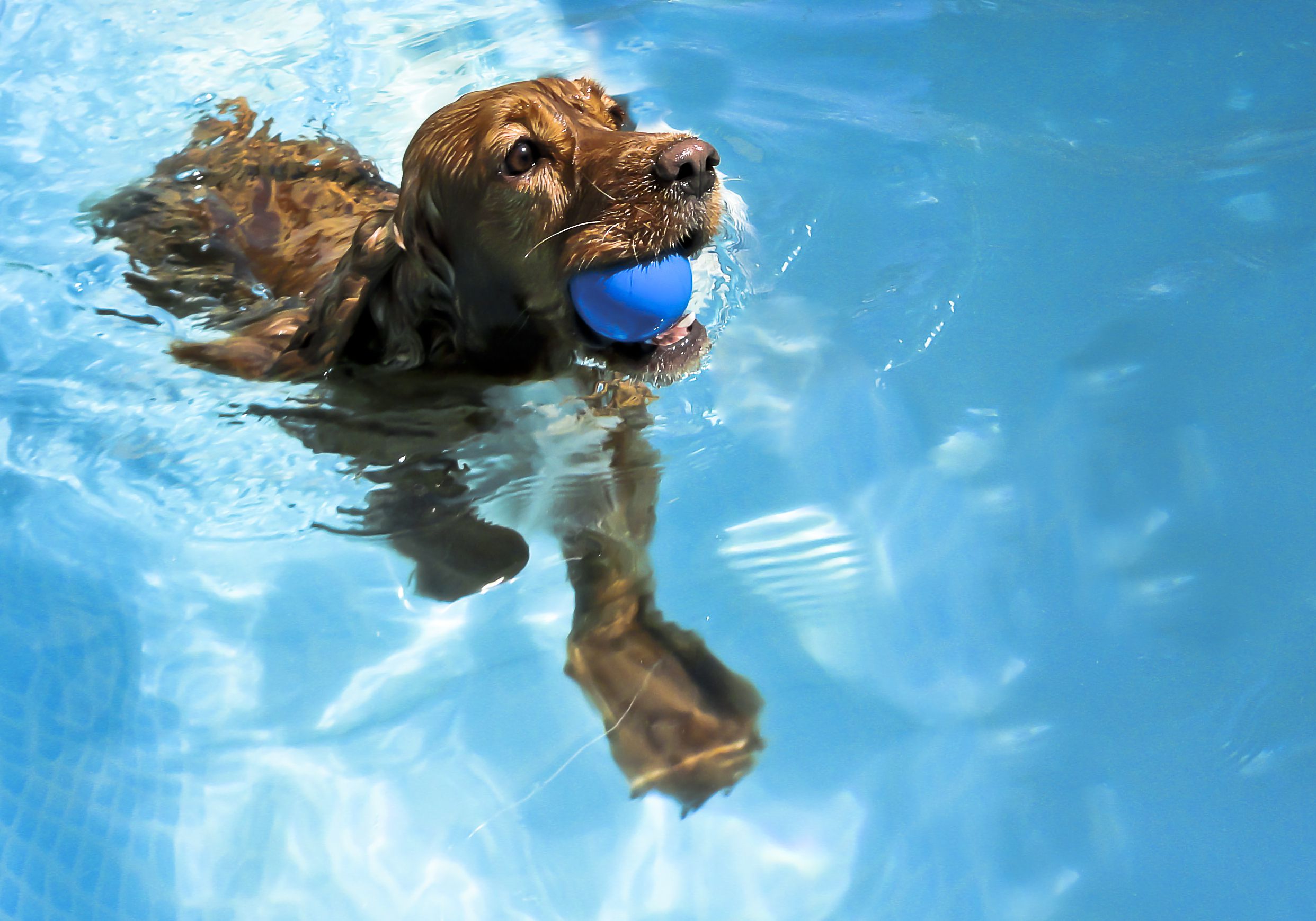
25. Skip Indoor Activities
Operas, theaters, museums, and other touristy activities may be fun for you, but not so much for your pet. Plus, if your pet can’t really be trusted alone, the costs of finding an animal daycare or a pet sitter while you’re gone for a few hours may be pretty expensive. Even if your pet is usually fine alone, the anxiety from being somewhere new without their owner could trigger stress and anxiety, and cause them to have an accident or destroy something while you’re gone that you’ll be charged for. Instead, try finding free or inexpensive things you could do with your pet, like hiking or swimming in a lake.
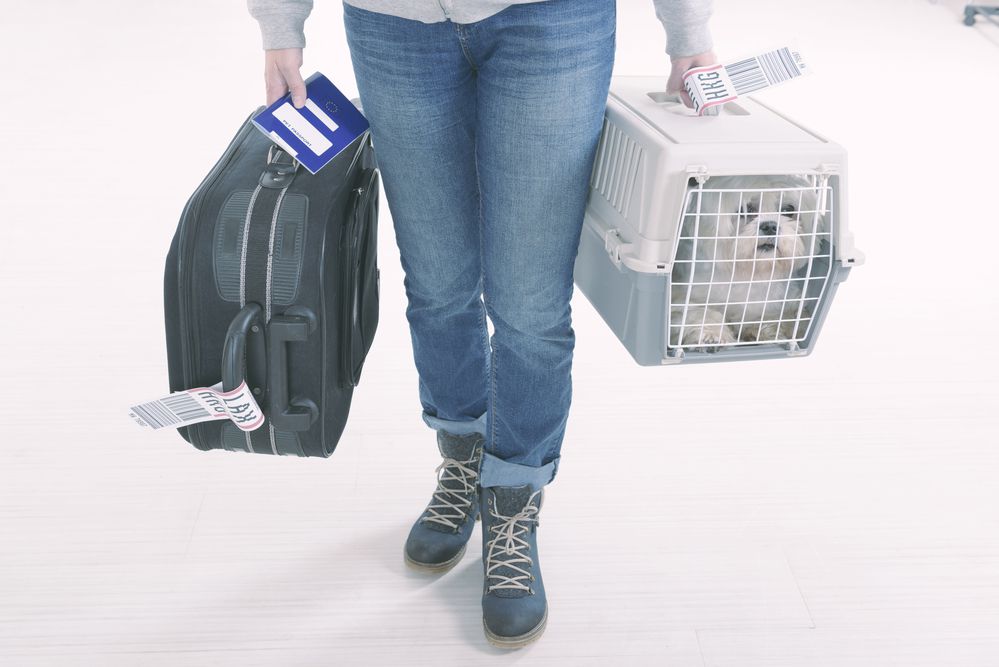
Other Pet Travel Tips
Before hitting the road (or air) with your furry pal, you may want to help you and your pet prepare for what traveling will be like. Here are few extra tips that can help you and your pet stay safe and happy while traveling, especially if your pet is new to long-distance travel.
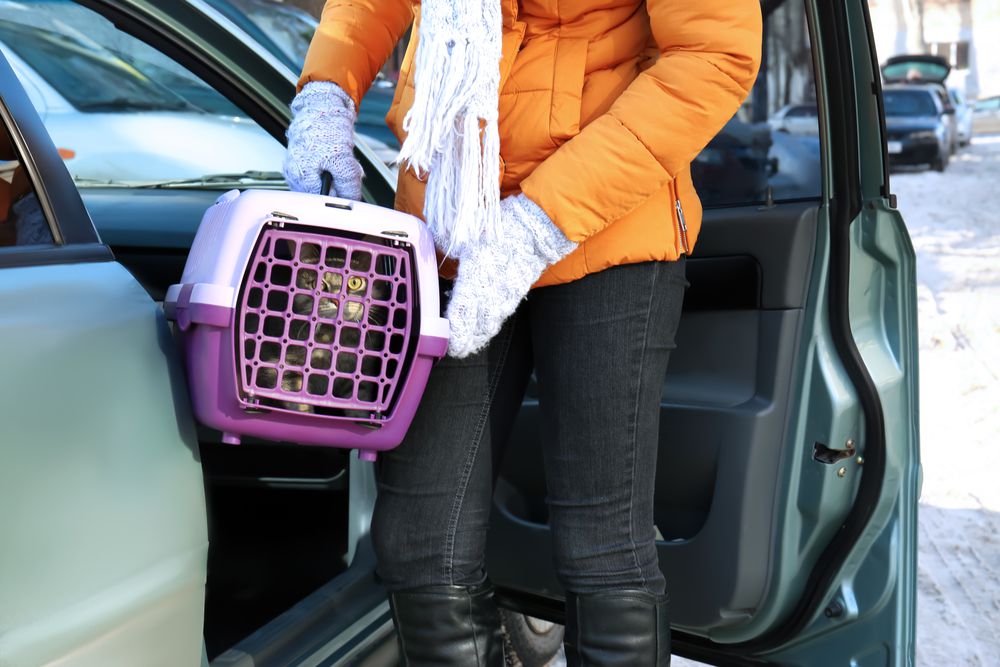
1. Practice Traveling
If your pet has never been on a long car ride before, take a few practice trips before a big trip. Jump on the expressway for an hour or so to see how your pet does. This can help your pet get used to traveling for a longer period of time than they’re used to.
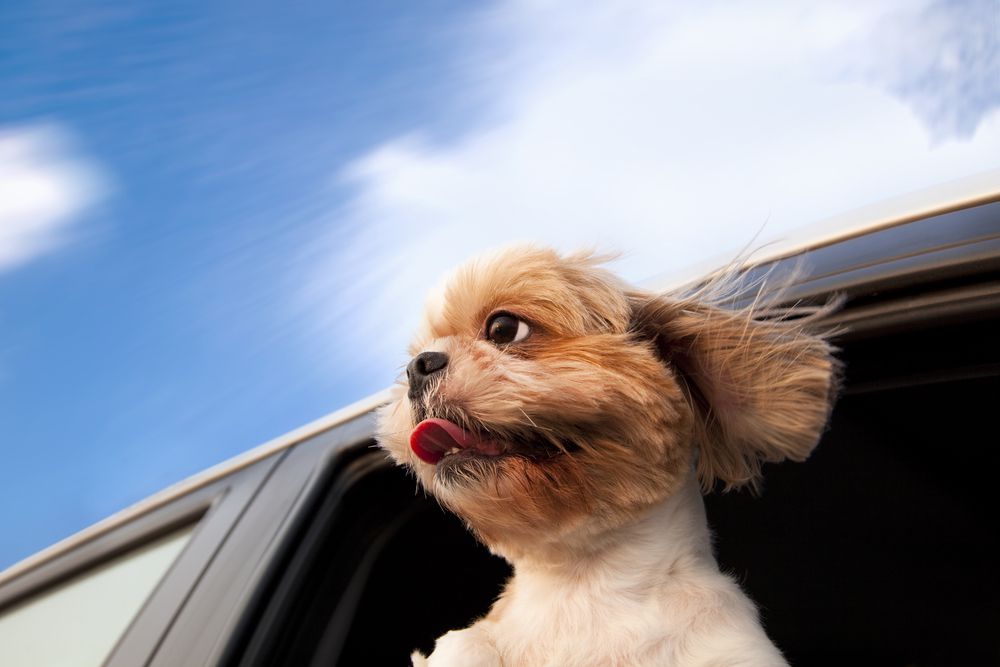
2. Plan for Extra Potty & Play Time
You may be in a hurry to get to your destination, but your pet may need to take more breaks than you think, especially if you’re traveling by car. So when you’re planning your trip, take into account how often your pet usually needs to go to the bathroom or how long they can realistically be in a car without exercising and make room for a few more breaks in the day where possible.

3. Talk To Your Vet about Pet Anxiety
If your pet is anxiety-prone, talk to your vet about safe ways to help your pet calm down, which may include prescription or drug store calming supplements. If your pet is especially anxious, you may want to consider asking a close friend or family member to pet sit and leave the pet behind, if possible.

4. Bring Comfort Items
Having a few comfort items can help make the journey easier for your pet. Bringing a favorite toy, blanket, or even a dog bed if you’re traveling by car can all go a long way in helping them keep calm and feel at ease while traveling somewhere new.

5. Keep to Scheduled Meal Times
If possible, feed your pet around the same times you usually would while you’re traveling. Plus, try to feed them the same food they’re used to getting. This can help keep their bellies from getting upset and help them have a sense of routine, which is especially important for anxious pets.
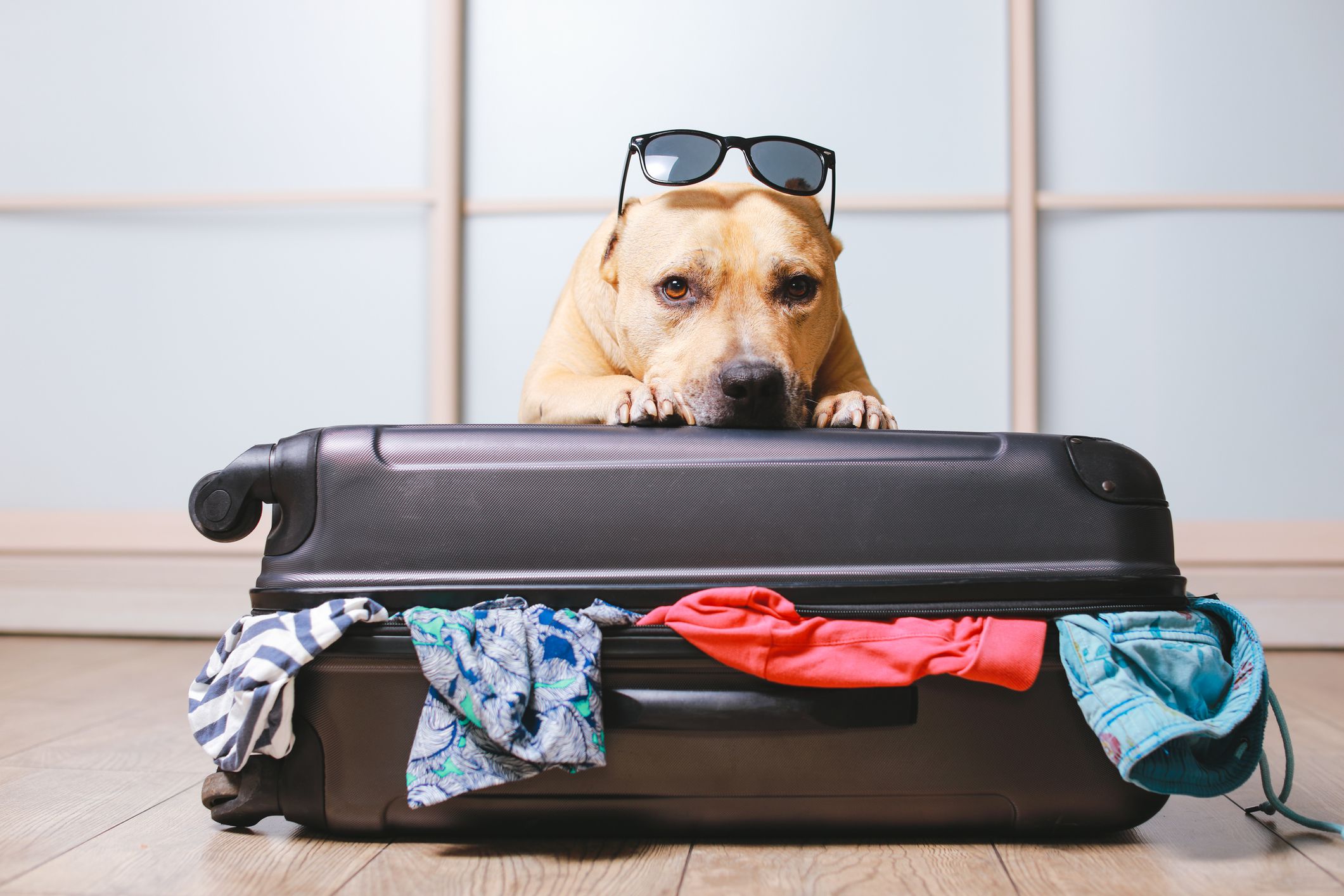
The Takeaway
Traveling with a beloved pet can be fun if you’ve got the budgeting basics and tips you need to make sure the trip is successful. While it can be more costly, with proper planning, bringing your furry friend along doesn’t have to be outrageously expensive.
- Personal loan calculator
- Can I pay off a personal loan early?
This article originally appeared on SoFi and was syndicated by MediaFeed .
External Websites: The information and analysis provided through hyperlinks to third-party websites, while believed to be accurate, cannot be guaranteed by SoFi. Links are provided for informational purposes and should not be viewed as an endorsement. Third-Party Brand Mentions: No brands or products mentioned are affiliated with SoFi, nor do they endorse or sponsor this article. Third-party trademarks referenced herein are property of their respective owners. Financial Tips & Strategies: The tips provided on this website are of a general nature and do not take into account your specific objectives, financial situation, and needs. You should always consider their appropriateness given your own circumstances.SoFi Checking and Savings is offered through SoFi Bank, N.A. ©2022 SoFi Bank, N.A. All rights reserved. Member FDIC. Equal Housing Lender.SoFi members with direct deposit can earn up to 1.25% annual percentage yield (APY) interest on all account balances in their Checking and Savings accounts (including Vaults). Members without direct deposit will earn 0.70% APY on all account balances in their Checking and Savings accounts (including Vaults). Interest rates are variable and subject to change at any time. Rate of 1.25% APY is current as of 4/5/2022. Additional information can be found at http://www.sofi.com/legal/banking-rate-sheet

More from MediaFeed
28 of the world's best travel destinations, more for you.
The Exact Time to Quit Your Job, According to Chief HR Officer
25 of the Most Mysterious Deaths in History
The dog breed that's attacked the most people, according to data. Plus, see the rest of the top 20.
Can You Eat Potatoes with Sprouts?
Music artists who walked away at the top of their game
Aubrey Plaza's Previous Marvel Role Proved She's Perfect for Agatha: Darkhold Diaries
10 Once-Important Things People Don’t Know How to Do Anymore
I'm abrosexual - it took me 30 years to realise
Why Do Dogs Lick Their Paws? 8 Common Reasons and How to Stop It
Russia's adapting air defenses means Ukraine's new F-16s are an example of weapons that are 'no longer relevant:' senior Ukrainian officer
How to get rid of stink bugs, according to an entomologist
One New Movie Proves Studios Need to Rethink Their Budgets
Chick-fil-A Is Testing an All-New Chicken Sandwich
What 50 music icons looked like at the start of their careers
20 Personal Things You Should Never Share With Others
24 Lovable Mixed-Breed Dogs You’ll Want to Bring Home
Grow This Aromatic Herb To Send Wasps Buzzing Away From Your Yard
Escape From New York Cut An Opening Scene That Completely Changed Kurt Russell's Character
Why were Trump’s bond documents rejected – and has this impacted his civil fraud appeal?
Electric Vehicle Charging Station Company Files for Chapter 11 Bankruptcy

Veterinarians in Moscow, Russian Federation
- Locations ›
- Russian Federation ›
- Moscow, Russian Federation ›
- Chekhov, Russian Federation (42 mi)
Frequently Mentioned on Social Media ?
Veterinarian referral in moscow , moscow.
- Post this review to my wall

Browse Categories
- Actinic (Solar) Dermatitis
- Acute Hemorrhagic Diarrhea Syndrome (AHDS or HGE)
- Addison's Disease (Hypoadrenocorticism)
- Adrenal Tumor Treatment in Cushing's Syndrome
- Adverse Reactions to Spot-on Flea and Tick Products
- Allergic Conjunctivitis in Dogs and Cats
- Allergies: Atopic Dermatitis in Dogs and Cats
- Alopecia X is a Pattern of Baldness
- Amputation is Preferable to Continued Pain
- A Overview of Sarcoptic Mange (Scabies) in Dogs
- Anal Glands and Anal Gland Abscess in Dogs and Cats
- Anal Sac Tumors in Dogs
- Anaplasmosis
- Anaplasmosis in Dogs and Cats Is Tick-Borne
- Anorexia, or Lack of Appetite, in Dogs and Cats
- Aspergillosis in Dogs
- Ataxia in Dogs and Cats
- Atopic Dermatitis in Dogs
- Atrial Fibrillation in Dogs and Cats
- Aural Hematoma in Dogs and Cats
- Babesia Infection in Dogs
- Bacterial Diarrheas in Puppies & Kittens
- Basic Virology
- Benign Sebaceous Gland Tumors
- Bicipital Tendinopathy in Dogs
- Biliary Mucocele is a Surgical Emergency in Dogs
- Black Fly Bites on Dogs
- Bladder Stones (Oxalate) in Dogs
- Bladder Stones (Struvite) in Dogs
- Bladder Stones in Dogs and Cats
- Blastomycosis is a Systemic Fungal infection Affecting Dogs and Cats
- Bloat - The Mother of All Emergencies
- Bloody Nose (Epistaxis) in Dogs and Cats
- Brachial Plexus Avulsion in Dogs and Cats
- Brachycephalic Airway Obstruction Syndrome in Flat-Faced Dogs
- Breast Cancer Happens in Companion Animals
- Breed-Related Dermatoses in Dogs and Cats
- Brucellosis from Raw Milk Consumption
- Brucellosis in Dogs
- Calcium Phosphorus Balance in Dogs and Cats
- Cancer is a Cellular Delinquent
- Canine Heartworms and Preventing Them
- Cannabidiol Use in Dogs and Cats
- Cataracts in Diabetic Dogs
- Cataracts in Dogs and Cats
- Cauda Equina Syndrome is Painful for Dogs
- Causes of Blindness in Dogs and Cats
- Cellulitis in Dogs and Cats
- Cervical (Neck) Disk Disease in Dogs and Cats
- Chagas Disease in Dogs
- Cherry Eye in Dogs and Cats
- Chondrodystrophy in Dogs
- Chronic Bronchitis in Dogs
- Chronic Bronchitis in Dogs is Neither Infectious nor Contagious
- Chronic Kidney Disease in Dogs and Cats: Where to Begin
- Chylothorax is more Common in Cats than Dogs
- Cleft Palate or Lip in Puppies and Kittens
- Clostridium difficile Becoming more Common in North America
- Clostridium perfringens Causes Diarrhea in Dogs
- Coccidia Infects Intestines of Cats and Dogs
- Cognitive Dysfunction Syndrome in Dogs
- Colitis-Related Diarrhea in Dogs and Cats
- Collie Eye Anomaly in Dogs
- Congestive Heart Failure in Dogs and Cats
- Constipation and Megacolon in Dogs and Cats
- Copper Storage Disease in Dogs
- Corneal Ulcers and Erosions in Dogs and Cats
- COVID-19 FAQ for Pet Owners
- Cryptorchidism (Retained Testicles) in Dogs and Cats
- Cryptosporidium is a Particularly Challenging Type of Coccidia for Pets
- Cushing’s Disease in Dogs (Hyperadrenocorticism): What Is It?
- Cushing's Syndrome (Hyperadrenocorticism): Description
- Cushing's Syndrome: Classifying the Type
- Cutaneous Vasculitis in Dogs and Cats
- Cuterebriasis is a Parasite Causing Skin Infections in Dogs and Cats
- Degenerative Myelopathy Leads to Paralysis of Dog's Hindquarters
- Demodectic Mange in Dogs
- Demodicosis (Red Mange) is Caused by Mites on Dogs
- Diabetes Mellitus: Introduction
- Diabetic Dog Diet
- Diabetic Ketoacidosis in Dogs and Cats
- Diaphragmatic Hernias in Dogs and Cats
- Diets and Heart Disease in Dogs and Cats
- Dilated Cardiomyopathy in Dogs and Cats
- Discoid Lupus Erythematosus (DLE) in Dogs
- Diskospondylitis (Intervertebral Disk Infection) in Dogs and Cats
- Disseminated Intravascular Coagulation (DIC) in Dogs and Cats
- Distemper in Dogs
- Distichiasis Requires Permanent Eyelash Removal in Dogs
- Dry Eye (Keratoconjunctivitis Sicca) in Dogs and Cats
- Dust Mites: Minimizing Exposure in Dogs and Cats
- Ear Infections (Gram Negative Otitis) In Dogs
- Ear Infections (Otitis) in Dogs
- Ear Infections (Yeast Otitis) in Dogs
- Ear Mites in Dogs and Cats
- Ectopic Ureters in Dogs
- Ectopic Ureters in Dogs and Cats
- Ehrlichia Infection in Dogs
- Elbow Dysplasia Causes Front Limb Lameness in Young Dogs
- Elbow Hygromas in Dogs
- Emptying a Dog or Cat's Anal Sacs
- Entropion in Dogs
- Eye Removal (Enucleation) in Pets
- Femoral Head and Neck Ostectomy in Dogs
- Fibrocartilaginous Embolism (FCE) in Dogs
- Flatulence in Dogs
- Flea Anemia in Cats and Dogs
- Flea Control for Allergic Dogs and Cats
- Flea Control for Dogs and Cats
- Fluid Therapy in Pets
- Follicular Cysts in Dogs
- Food Allergies in Dogs and Cats
- Fractures in Dogs and Cats
- Gallstones in Dogs and Cats
- Giardia in Pets
- Glaucoma in Dogs and Cats
- Glomerulonephritis in Dogs and Cats
- Granulomatous Meningoencephalitis (GME) in Dogs and Cats
- Hard to Regulate Diabetic Dogs
- Heart Murmurs in Dogs and Cats
- Heartworm Diagnosis in Dogs and Cats
- Heartworm Preventive Comparison Chart for Dogs and Cats
- Heartworm Treatment for Dogs
- Heartworm: The Parasite
- Helicobacter Infection in Dogs and Cats
- Helping your Arthritic Dog
- Hemangioma in Dogs and Cats
- Hemangiopericytoma in Dogs
- Hemangiosarcoma is Blood or Skin Cancer in Dogs and Cats
- Hemivertebrae are Congenitally Deformed Vertebra in Dogs and Cats
- Hepatic Encephalopathy in Dogs and Cats
- Hepatitis in Dogs
- Hepatozoonosis in Dogs
- Herpes Infections in Dogs
- High Blood Pressure in Our Pets
- Hip Dislocation in Dogs and Cats
- Hip Dysplasia in Dogs
- Hip Dysplasia in Dogs Part One - Background, Signs and Diagnosis
- Histiocytoma is a Benign Skin Growth in Dogs
- Histoplasmosis in Dogs and Cats
- Hookworms in Cats and Dogs
- Horner's Syndrome in Cats and Dogs
- Hot Spots (Pyotraumatic Dermatitis) in Dogs and Cats
- Hot Spots in Dogs and Cats
- Hydrocephalus (Water on the Brain) in Dogs and Cats
- Hydrometra, Mucometra, and Pyometra in Dogs and Cats
- Hypercalcemia in Dogs and Cats
- Hyperlipidemia in Dogs and Cats
- Hypertrophic Osteodystrophy (HOD) in Dogs
- Hypocalcemia (Low Blood Calcium) in Cats and Dogs
- Hypoglycemia (Low Blood Sugar) in Toy Breed Dogs
- Hypothyroidism in Dogs
- Hypothyroidism is the Most Common Hormone Imbalance of Dogs
- Ice or Ice Water Does Not Cause Bloat in Dogs
- Immune Mediated Hemolytic Anemia (IMHA) in Dogs and Cats
- Immune-Mediated Polyarthritis (IMPA) in Dogs
- Immune-Mediated Thrombocytopenia (IMT)
- Immunotherapy for Allergies in Dogs and Cats
- Inflammatory Bowel Disease in Dogs and Cats
- Influenza Strains in Dogs
- Insulin Administration in Dogs
- Insulinoma in Dogs and Cats
- Interdigital Cysts in Dogs
- Intervertebral Disk Disease (IVDD) in Dogs
- Intestinal Lymphangiectasia (Protein-losing Enteropathy) in Dogs
- Iris Coloboma in Dogs and Cats
- Irritable Bowel Syndrome (IBS) in Dogs
- Itch Relief for Dogs and Cats
- Itching and Allergy in Dogs
- Kennel Cough in Dogs
- Kidney Dialysis: Is It for Your Pet?
- Kidney Failure (Chronic) Links for Additional Information
- Kidney Transplants for Cats and Dogs
- Laboratory Tests Confirming Cushing's Syndrome
- Laboratory Tests Hinting at Cushing's Syndrome
- Laryngeal Paralysis in Dogs
- Lateral Ear Resection in Dogs
- Legg-Perthes Disease in Dogs
- Leptospirosis and Your Pet: A CDC Fact Sheet
- Leptospirosis in Dogs
- Lice in Dogs and Cats
- Lick Granuloma in Dogs
- Linear Foreign Bodies in Dogs and Cats
- Lipomas in Dogs and Cats
- Lithotripsy in Dogs and Cats
- Liver Enzymes in Dogs
- Liver Tumors and Cancers in Dogs and Cats
- Localized Demodectic Mange in Dogs
- Lung Cancer in Dogs and Cats
- Lupoid Onychodystrophy in Dogs
- Lyme Disease in Dogs
- Lymphocytic Leukemia in Dogs
- Lymphoma in Dogs
- Lymphoma in the Skin of Dogs
- Malassezia Dermatitis (Yeast Infection of Dog's Skin)
- Malassezia Otitis in Dogs and Cats
- Malignant Melanoma in Dogs and Cats
- Malignant Thyroid Tumors in Dogs and Cats
- Mammary Tumors in Dogs
- Managing Megaesophagus in Dogs
- Mast Cell Tumors in Dogs and Cats
- Masticatory Myositis (Eosinophilic Myositis) in Dogs
- Medial Luxating Patella in Dogs
- Megaesophagus in Dogs
- Meibomian Gland (Eyelid) Tumors in Dogs
- Meningioma in Dogs and Cats
- Mitral Valve Disease in Dogs and Cats
- Monitoring Glucose Regulation in Dogs and Cats
- MRSA vs. MRSP in Dogs & Cats
- MRSA: Methicillin-resistant Staphylococcus aureus in Dogs and Cats
- Multiple Myeloma in Dogs and Cats
- Mushroom Poisoning in Dogs and Cats
- Muzzle Folliculitis and Furunculosis (Chin Acne, Muzzle Acne) in Dogs
- Myasthenia Gravis in Dogs and Cats
- Nasal Squamous Cell Carcinoma in Cats
- Neuropathic Pain in Dogs and Cats
- No Bones About It - Chewing Bones is Bad for Dogs' Teeth
- Oral Squamous Cell Carcinoma in Dogs and Cats
- Osteochondritis Dissecans (OCD) in Dogs
- Osteosarcoma in Dogs
- Otitis Externa Treatment in Dogs and Cats
- Otitis Media (Middle Ear Infection) in Dogs and Cats
- Ovarian Remnant Syndrome in Dogs and Cats
- Pacemakers in Dogs and Cats
- Pancreatitis in Dogs
- Pannus in Dogs
- Panosteitis: Growing Pains in Dogs
- Paralyzed Dogs: How to Care for Them
- Paraphimosis and Phimosis in Dogs and Cats
- Parvovirus in Dogs
- Parvovirus Infection: Diagnosis
- Parvovirus Infection: Physical Illness and Treatment
- Parvovirus: Caring for the Recovered Dog
- Parvovirus: How it Happens
- Parvovirus: Vaccination and Prevention
- Patellar Luxation in Dogs Ranges in Severity
- Patent Ductus Arteriosus in Dogs and Cats
- Pemphigus Foliaceus in Dogs and Cats
- Perianal Fistulae in Dogs
- Pericardial Effusion in Dogs and Cats
- Physaloptera (Stomach Worm) in Dogs and Cats
- Physical Rehabilitation for Arthritis in Dogs
- Pituitary Macroadenoma in Cushing's Syndrome
- Pneumonia Management in Dogs and Cats
- Pneumothorax in Dogs and Cats
- Polyuria/Polydipsia in Dogs and Cats
- Portal Vein Hypoplasia in Dogs and Cats
- Portosystemic Shunt in Dogs and Cats
- Positive Snap Tests for Ehrlichia and Anaplasma
- Practical Dental Care Tips for Dogs and Cats
- Progressive Retinal Atrophy (PRA) in Dogs
- Prophylactic Gastropexy in Dogs
- Prostate Cancer in Dogs
- Pulmonary Hypertension in Dogs and Cats
- Pulmonic Stenosis in Dogs and Cats
- Pyelonephritis in Dogs and Cats
- Pyoderma in Dogs and Cats
- Pyometra in Dogs and Cats
- Pyothorax in Dogs and Cats
- Pythiosis (Oomycosis, Lagenidiosis, Swamp Cancer, Bursatti, Leeches) in Dogs, Cats and Horses
- Rabies in Animals
- Recessed Vulva in Dogs
- Rectal Prolapse in Dogs and Cats
- Renal Anemia, or Inadequate Red Blood Cells, in Dogs and Cats
- Renal Failure Dietary Therapy
- Respiratory Disease in Dogs Sweeping Across the US? Outbreak of Disease or Media Attention?
- Rhinitis in Dogs and Cats
- Ringworm Environmental Decontamination: How to Clean Your Home When Your Pet Has Ringworm
- Ringworm in Dogs and Cats
- Rocky Mountain Spotted Fever in Dogs
- Salivary Mucocele in Dogs and Cats
- Salmon Poisoning in Dogs
- Sanitizing and Disinfecting the Environment after Parvovirus in Dogs
- Sarcoptic Mange in Dogs
- Schnauzer Comedone Syndrome
- Scottie Cramp in Dogs
- Seasonal Flank Alopecia in Dogs
- Sebaceous Adenitis in Dogs
- Seborrhea in Dogs
- Seizure Disorders in Dogs
- Senility in Dogs
- Senior Dog Health Issues
- Serotonin Syndrome in Dogs and Cats
- Shar-Pei Recurrent Fever Syndrome
- Skin Biopsies in Dogs and Cats
- Sleeping and Resting Respiratory Rates of Dogs and Cats with Heart Disease
- Spina Bifida in Dogs and Cats
- Splenic Masses in Dogs (Splenectomy)
- Spondylosis Deformans in Dogs and Cats
- Steroid Use in Dogs and Cats
- Strangles in Puppies
- Subaortic Stenosis in Dogs
- Swimmer’s Tail in Dogs
- Swimmer's Ear in Dogs
- Symptoms of Cushing's Syndrome
- Syringomyelia in Dogs
- Systemic Lupus Erythematosus (SLE) in Dogs
- Teeth Chattering in Dogs
- Testicular Cancer in Dogs
- Tetanus in Pets (Lock Jaw)
- The Canine Estrous Cycle: Being in Heat
- The Wrath of Grapes
- Thrombocytopenia in Dogs and Cats
- Tooth Resorption in Dogs
- Tracheal Collapse in Dogs
- Transitional Cell Carcinoma in Dogs and Cats
- Transmissible Venereal Tumors in Dogs
- Traumatic Brain Injury in Dogs and Cats
- Treatment of Pituitary Form of Cushing's Syndrome
- Tremoring or Shivering in Dogs
- Umbilical Hernias in Puppies and Kittens
- Uric Acid Stones and Urate Urolithiasis in Dogs
- Urinary Incontinence in Dogs and Cats
- Urinary Tract (Bladder) Infection in Dogs and Cats
- Uveitis in Dogs and Cats
- Vaccine Allergic Reactions in Dogs and Cats
- Vaginal Protrusions in Dogs and Cats
- Vaginitis in Puppies
- Valley Fever (Coccidioidomycosis) in Dogs and Cats
- Vascular Accidents (Strokes) in the Brains of Dogs and Cats
- Vestibular Disease in Dogs and Cats
- Viral Papillomas of Dogs
- Vogt-Koyanagi-Harada-Like Syndrome in Dogs
- Vomiting or Regurgitation in Dogs and Cats?
- Von Willebrand's Disease in Dogs
- What to Expect From Your Pet’s Echocardiogram
- What To Expect When Your Dog Is in Season
- When You Need Antibiotics for Your Pets, and When You Don’t
- Wobbler Syndrome in Dogs
- Workups for Itchy Dogs and Cats
- Wound Care for Pets
- Yeast Dough Dangers in Pets
- Abscess: First Aid
- Bandaging: First Aid
- Bee Stings and Insect Bites: First Aid
- Bleeding: First Aid
- Bloat: First Aid
- Breathing Problems: First Aid
- Burns: First Aid
- Cardiopulmonary Resuscitation (CPCR): First Aid
- Chemical Injuries: First Aid
- Choking: First Aid
- Dehydration: First Aid
- Diarrhea and Vomiting: First Aid
- Difficult Birth: First Aid
- Drowning or Near Drowning: First Aid
- Electrical Burns: First Aid
- Eye Injuries: First Aid
- Fainting and Dizziness (Syncope): First Aid
- Fever: First Aid
- Fractures and Injuries: First Aid
- Hyperthermia (Heat Stroke): First Aid
- Hypothermia: First Aid
- Impalement and Penetrating Injuries: First Aid
- Introduction: First Aid
- Nosebleed: First Aid
- Paralysis: First Aid
- Physical Exam Checklist for Pets: First Aid
- Poisoning in Dogs and Cats
- Preventing a Health and Safety Crisis: First Aid
- Seizures and Convulsions: First Aid
- Shock: First Aid
- Snakebite: First Aid
- Straining to Eliminate: First Aid
- Sunburn: First Aid
- Transporting an Injured Pet: First Aid
- Wounds: First Aid
- Wrapping Up First Aid
- CBD Use in Dogs: An Update
- AAFCO Pet Food Labeling
- Abdominal Ultrasounds in Pets
- Air Travel with Your Pets
- Alternative Diets for Dogs and Cats
- Antibiotic Use in Pets
- Assessing Quality of Life & Euthanasia in Companion Animals
- Bad Breath in Dogs and Cats
- Behavior Supplements in Dogs and Cats
- Behavioral Euthanasia and Quality of Life Decisions
- Birthing Puppies
- Blood Work is a Basic Evaluation Tool
- Breeding Information for People Who Want to Breed Dogs
- Brushing your Dog's Teeth
- Capturing Desirable Behaviors
- Clean Houses are Possible, Even With Pets!
- Clinical Signs of Oral or Dental Disease in Pets
- Coat Clipping: Other Options to Keep your Dog Cool
- Conditioning Your Dog to Nail Trims
- Dental Care and What to Expect if your Pet Needs it
- De-Skunking Your Dog or Cat
- Digging Deeper: Getting the Facts on the Dangers of Antifreeze and Your Pets
- Effects Spay and Neuter Timing on Cancer in Dogs
- Epulis Tumor in Dogs' Mouths
- Esophagostomy Tube (E-tube) Care
- False Pregnancy in Dogs
- Feeding Tubes for Dogs and Cats
- Flash Glucose Monitoring in Cats and Dogs
- Flea and Tick Control Products for Dogs and Cats
- Fleas: Know your Enemy
- Fluid Delivery Systems in Dogs and Cats
- Giving Oral Medications to Dogs and Cats
- Home Cooked or Raw Diets for Dogs and Cats
- Hospice and Palliative Care for Pets
- How Does Anesthesia Work?
- How to Beat Confinement Woes in Dogs and Cats
- How to Find a Good, Responsible Breeder
- Intervention for Choking in an Unconscious Dog
- Jerky Dog Treats from China may be Associated with Kidney Issues
- Keeping your Pet Healthy and Happy
- Low Stress Toothbrushing
- Lymphoma Treatment Includes Nutritional Therapy for Dogs
- Microchipping Could Save your Pet's Life
- MRSP Dogs and Spaying
- Nail Boards: An Alternative to Clipping Nails
- Nebulizer Use for Dogs and Cats
- Neutering Your Male Dog
- Normal Joints Look Like This in Dogs and Cats
- Nutrition and Exercise for Growing Puppies
- Obesity is Unhealthy in Dogs and Cats
- Omega Three Fatty Acids for our Pets
- Oral Joint Health Supplements #2
- Oral Masses/Ulcers in Dogs and Cats
- Orphan Puppy & Kitten Care
- Orthodontics for Pets
- Pain Drugs for Dogs and Being an Informed Owner
- Pain Reliever Facts for Dogs and Cats
- Periodontal Disease in Dogs and Cats
- Periodontal Disease in Pets
- Pet Insurance Fact Sheet
- Pet Treats... What to Look Out For
- Physical Rehabilitation of Dogs Following TPLO
- Post-Operative Care for Pets
- Pregnancy Termination in Dogs and Cats
- Pregnant Dog Care
- Preparing Puppies for Veterinary Visits
- Rattlesnake Bites in California
- Retained Baby Teeth in Dogs and Cats Need Surgical Extraction
- Reverse Sneezing in Dogs
- Roundworms in Dogs and Puppies
- Runny Eyes (Epiphora) in Dogs
- Ruptured Cranial Cruciate Ligaments in Dogs
- Safe Toys for Puppies
- Shar-pei Special Needs and Cautions
- Snake Bite Prevention and Treatment for Dogs
- Spaying Your Female Dog
- Subcutaneous Fluids Can Be Given at Home for Dogs and Cats
- Sunscreen for Pets
- Taenia Species Tapeworms in Dogs and Cats
- Taming the Howls: Managing Your Dog's Fear on Halloween
- Tapeworms (Dipylidium caninum) in Dogs and Cats
- Tick Paralysis in Pets
- Ticks Are Arthropod Parasites for Mammals
- Toothbrushing and Dental Prophylaxis in Cats and Dogs
- Topical Therapy for Skin Conditions in Dogs and Cats
- Total Ear Canal Ablation and Ventral Bulla Osteotomy (TECA) for End-Stage Ears in Dogs and Cats
- TPLO (Tibial Plateau Leveling Osteotomy) in Dogs
- Traveling with Pets
- Treating your Yard for Fleas and Ticks
- Vaccine Information for Dogs, Cats, Puppies and Kittens
- Vaccine Titers for Pets
- Weight Loss in Dogs
- What First Time Puppy Owners Should Know
- What First-Time Dog Owners Should Know
- What Is Consent?
- What To Do When Your Dog’s Toenail Trims Don’t Go as Planned
- Whipworm Infection in Dogs and Cats
- Why Veterinarians Refer to Specialists
- Wound Healing in Dogs and Cats
- Alcohol Poisoning
- Cannabis Toxicity in Dogs
- Chocolate Toxicity in Dogs
- Chocolate Toxicity Signs in Dogs
- Common Household Items can Poison Pets
- Electronic Cigarettes are Toxic to Pets
- Expandable Foaming Glues like Gorilla Glue Cause Obstructions in Pets
- Ibuprofen Toxicity in Dogs and Cats
- Lead Poisoning in Dogs and Cats
- Nicotine Poisoning in Pets
- People Foods to Avoid Feeding Your Pets
- Poisonous Plants for Dogs and Cats
- Rat Poison (Bromethalin-Based) in Dogs and Cats
- Rat Poison's Effect on Dogs and Cats
- Safe and Toxic Garden Plant Images
- Safe Gardening for Dogs and Cats
- Snail Bait Poisoning in Dogs
- Toxic and Non-toxic Plants
- Toxic Disinfectants: What to Use and What Not to Use Around Your Pets
- Winter Holiday Hazards for Pets
- Xylitol Poisoning in Dogs
- Zinc Poisoning in Dogs and Cats
- 10 Ways to Build Confidence in Shy and Fearful Dogs
- Adopting a Shelter Dog
- Aggression Between Familiar Dogs
- Applying a Muzzle to an Aggressive Dog
- Applying Eye Drops with Low Stress Handling™
- Barking Dogs
- Behavior and the Senior Dog
- Bite Levels in Dogs
- Body Language of Dogs
- Car Ride Anxiety in Dogs and Cats
- Compulsive and Repetitive Behavior in Dogs
- Desensitizing Your Dog to a Muzzle
- Destructive Chewing by Puppies and Dogs
- Dog is Having Accidents in the House, But Why?
- Dog Training: How to Use Rewards
- Dog Training: Why to Use Rewards
- Dog Walking Tools
- Enrichment for Senior Dogs
- Fear and Fear-related Aggression in Dogs
- Fear of Noises in Dogs and Cats
- Feces Eating in Dogs and Cats
- Fireworks Fear in Pets
- Food Finicky Dogs
- Halloween is a Scary Night for Pets
- Help for Your Barking Dog
- House Soiling Causes and Solutions in Dogs
- House Training Adult Dogs
- Housetraining an Adult Dog or Rescue
- Housetraining and Crate Training
- How to Make Veterinary Visits Less Stressful
- How to Stop Pulling
- How to Teach Your Dog to Come to You
- Identifying a Qualified Dog Trainer or Behavior Professional
- Importance of Socializing Puppies and Kittens
- Introducing the Dog to Your New Baby
- Introducing Your Dog to Other Animals
- Jumping up by Dogs
- Jumping Up on People by Dogs
- Kids and Dogs
- Leash Reactivity in Dogs
- Loose Leash Walking
- Mat Training in Dogs: Teaching to Station on the Mat
- Mouthing and Play Biting in Puppies
- Nighttime Waking in Senior Dogs
- Preparing for Mat Training: Setting the Mood
- PTSD Can Occur in Companion Animals after Disasters
- Puppies and Kittens Who Bite
- Puppy Confinement Training Tips
- Resource Guarding in Dogs
- Separation Anxiety: The Fear of Being Alone
- Storm and Other Noise Phobias
- Teaching Chin Rest to Dogs
- Teaching Eye Contact to a Dog
- Teaching Your Dog To Lie on Their Side for Nail Trims
- Teaching Your Dog to Love the Cone
- The Connection between Animal Abuse and Interpersonal Violence
- Three Tips to Reduce Barking in Your Dog
- Training Series: Target Training Dogs with Touch
- Understanding Your Dog’s Body Language
- Using Dogs to Sniff Out Respiratory Disease in Calves
- Using Medication to Lower Veterinary Visit Stress in Dogs and Cats
- Walking Your Dog
- What is "Littermate Syndrome"?
- What Is a Marker and Why Is It Used in Training?
- What Is Cooperative Care in Veterinary Medicine?
- When Excitement Causes Your Dog to Tinkle: Conflict (Submissive) and Excitement Urination
- Why Would a Puppy Need to See a Veterinary Behaviorist?
- Reptiles & Amphibians
- Small Mammals
- Medications
- Healthy Pets, Happy Owners
- About Veterinary Partner
Sorry, something went wrong and the translator is not available.
Sorry, something went wrong with the translation request.
Return to English
Whether you are planning a move or traveling for leisure, taking your pet along with you can be stressful for both of you.
General Travel Tips:
- Visit the U.S. Department of Agriculture (USDA) website, and research the requirements and regulations for the location(s) you will be traveling to and through.
- Work with your veterinarian to create a timeline for necessary vaccinations, completion of health certifications, and other area-specific requirements, such as rabies titer testing.
- Research the departure and arrival destination requirements regarding pet identification tags or registration, kennel markings, and ISO-compatible microchip information.
- If you will be staying in a hotel during your travel, leave a radio on at a soft volume, keep your time away from your hotel room short, and use your pet’s crate when away from your room to help avoid destructive behavior.
Flying with Pets:
- Research transportation options before booking travel and determine whether you will use a commercial carrier or a private charter company for transportation of your pet.
- On commercial carriers, pets may be categorized for travel as: checked baggage in-cabin with owner, checked baggage cargo on the flight, or manifest cargo on an unaccompanied flight.
- In-cabin transport is airline-dependent and is restricted to small pets that fit in a kennel under the cabin seat.
- Pets must be at least 8-10 weeks old for transport but may be required to be at least 15–16 weeks old for international travel.
- Brachycephalic, short-nosed, flat-faced, breeds may be prohibited from flying in cargo due to safety risks. Some examples are bulldogs, Boston terriers, boxers, and pugs, as well as Persian or Himalayan cats.
- To minimize stress on your pet, it is recommended to book a non-stop flight when possible.
- Carry on copies of your pet’s veterinary record and health certificates, along with a leash, food, and any medications in case luggage is delayed or lost.
- Check with the airline you are using to ensure your pet’s kennel meets specifications. Each airline may vary, but general specifications can be found on the International Air Transport Association (IATA) website.
- Kennels need to be well-ventilated and big enough for the pet to stand, sit, lie down, and turn around in. Food and water bowls must be secured to the carrier and absorbent material supplied for the pet to lay on. Soft-sided and wire-sided kennels are not permitted for cargo travel.
- Ensure your pet is acclimated to his travel kennel early.
Driving with Pets:
- Carry a copy of your pet’s recent health certificate which is required when you cross state lines.
- If your pet is not comfortable riding in a vehicle, work with your veterinarian to discuss ways to improve your pet’s comfort.
- Research the safety data and size restrictions for any restraint devices or kennels you plan to use. The safest method of restraint for car travel is a kennel on the floor in the back seat or secured in the rear cargo area. This prevents driver disruption and keeps the pet secure in the event of an accident. Front seat travel should be avoided due to driver distraction and possible airbag injury. The kennel should be well-ventilated and big enough for the pet to stand, sit, lie down, and turn around. Other restraint options include harnesses, car seats, and pet barriers.
- Never leave your pets unsupervised in a parked vehicle, regardless of the outside temperature, even when windows are left open.
- Pack a travel kit for your pet. Include medications, leash, fresh food and water, bowls, waste disposal bags or litter and litterbox, as well as cleaning supplies.
- Plan breaks for every few hours; offer water and the opportunity to go to the bathroom.
- Offer food in small amounts to help reduce possible upset stomach. This is pet dependent.
The content of this site is owned by Veterinary Information Network (VIN®), and its reproduction and distribution may only be done with VIN®'s express permission .
The information contained here is for general purposes only and is not a substitute for advice from your veterinarian. Any reliance you place on such information is strictly at your own risk.
Links to non-VIN websites do not imply a recommendation or endorsement by VIN® of the views or content contained within those sites.
‘He was the greatest thing in my life’: Family devasted after dog killed while running from vet’s office
BUTLER COUNTY, Ohio. ( WXIX /Gray News) - An Ohio family is grieving the loss of their 4-year-old dog after he escaped from a veterinarian’s office and was killed.
WXIX reported that Roscoe was getting a test done at the Animal Care Center when he got loose.
His owners, Ashlynn and Pam Hagg, told WXIX that he wasn’t gone more than six minutes before the doctors came in and notified them.
“The doctor came in and asked if we had gotten a text about Roscoe and we said, ‘no,’” Ashlynn Hagg said.
The owners said they immediately got in their car and started looking for Roscoe.
But, moments later, they received a call from a man who said he accidentally hit Roscoe.
“He stopped. He is our angel,” Pam Hagg said.
Roscoe reportedly became startled while outside on a leash at the veterinarian’s office. He pulled away from a staff member and they weren’t able to catch him, WXIX reported.
Roscoe’s owners said they have mixed feelings and they believe that it could’ve been prevented.
“They usually put a slip knot on him. I mean we’ve been going to that vet forever,” Roscoe’s owners said.
The Animal Care Center is covering burial expenses, making grief counseling available to Roscoe’s family and staff.
“He was a little bundle of joy. He was the greatest thing in my life by far and he was just such a joy to have around. He made everybody in this house life better,” Ashlynn Hagg said.
Copyright 2024 WXIX via Gray Media Group, Inc. All rights reserved.

Human remains found in woods near Mansfield Road

Louisiana State Penitentiary inmate dead after alleged altercation with 3 others

Man killed by tire that flew off another vehicle on interstate

Man arrested for alleged sexual assault of 10-year-old

South Bossier Water System making major upgrades, cleanout; water will not be available
Latest news.

Judge rejects Trump’s First Amendment challenge to indictment in Georgia election case

‘Immediate ceasefire is essential:’ Biden tells Israel’s Netanyahu future support depends on steps to protect civilians

Meet the 7 World Central Kitchen workers killed in the Israeli strikes

Teens help evacuate other students after bus rolls over during snowstorm

Holy Angels opening ice cream shop in Bossier City
Where have you been? A California dog missing since the summer is found in Michigan
HARPER WOODS, Mich. (AP) — A dog missing in California since the summer turned up more than 2,000 miles away in Michigan.
Police in Harper Woods, a Detroit suburb, responded to a call about a stray dog last week, picked up the terrier mix and contacted an animal welfare group.
Grosse Pointe Animal Adoption Society said it quickly discovered that the dog, named Mishka, had an identity chip implanted in her with information about her owner.
Mehrad Houman and his family live in San Diego but were in Minneapolis when the phone rang. He drove 10 hours to Michigan for a reunion with Mishka, the adoption group said on a Facebook post with pictures and video.
“This is a tale that Hollywood would love to tell,” the group said.
Harper Woods police confirmed its involvement Thursday. A message seeking additional comment was left for the animal organization.
Mishka had disappeared in July from Houman’s workplace.
“She was clean, well-fed. Whoever had her took good care of her,” said veterinarian Nancy Pillsbury, who examined the 3-year-old dog, gave her a rabies shot and cleared her to travel home to California.
“How she got here — that’s a story only Mishka knows,” Pillsbury told The Associated Press.
Copyright 2024 The Associated Press. All rights reserved. This material may not be published, broadcast, rewritten or redistributed without permission.

IMAGES
COMMENTS
Yes. The same rules apply when taking your pet camping. Talk to your veterinarian about flea, tick and heartworm prevention as well as specific risks associated with camping outdoors. (such as leptospirosis and other diseases). Keep your pet on a leash and in your sight; and be considerate of other campers.
Flying With Dogs. When traveling by plane, plan to visit your veterinarian before your trip. Certification of health must be provided to the airline no more than 10 days before travel.
You've come to the right place! We are your trusted companion in pet travel. Our mission is to make your pet's journey as seamless, safe and enjoyable as possible. We'll help you locate a nearby veterinarian who can assist you with the required exams, treatments, documents and health certificates for pet travel - in just 3 easy steps ...
During your appointment our vet will perform the USDA Exam and complete all required documentation. 3. Receive your documents. The Certificate of Veterinary Inspections will be given to you at the time of your appointment, and the International Health Certificates will either be emailed to you or will be mailed overnight. 4.
Mobile Diagnostic and Treatment Services. HousePaws employs a range of diagnostic and treatment techniques in our mobile practice that can be tailored to the needs of you and your pet. In most of our practice areas, our doctors have access to state of the art mobile radiology equipment for advanced diagnostic efforts.
Traveling with Pets. Print. CDC is extending its temporary suspension of dog importation from high-risk dog rabies countries until July 31, 2024. This suspension includes dogs arriving from countries without high risk of rabies if the dogs have been in a high-risk country in the past 6 months. Learn about the current rules: What Your Dog Needs ...
Veterinary Help With Dog Travel. Based on your research and consultation with your vet, you should know the necessary steps for completion of your dog's health certificate. For example, does ...
Your pet must meet the import requirements prior to travel. Your USDA Accredited Veterinarian cannot issue the health certificate until the pet meets the requirements. If, for considerable reasons, your pet cannot meet the entry requirements, you can attempt to seek a waiver to the requirement (s) by reaching out to the ministry of agriculture ...
Most airlines restrict the number of pets — both in the cabin and underneath — allowed on each flight. Additional Pet Travel Tips: Try to avoid layovers altogether, but if necessary, keep them ...
Schedule a Pre-Trip Checkup With Your Veterinarian. Image Credit: www.ilmicrofono.it Pet owners are advised by the Centers for Disease Control and Prevention to let their vets know as soon as travel becomes a possibility. It may take several appointments before all the paperwork and vaccinations are complete, so plan your vet visits well in advance of your trip.
Whether you are at home or traveling, your dog needs to drink water. Be sure to pack bottled water and a travel or collapsible bowl so you can keep your pet hydrated. 8. Talk to Your Vet About Calming Aids. If your dog has issues with anxiety or gets nervous when traveling, you may want to consider calming aids.
As a USDA-accredited veterinarian, you are responsible for issuing official health certificates for pets traveling outside the United States. This page provides important information about the process of certifying pets for international travel, completing and submitting health certificates for USDA endorsement, and accessing and using the Veterinary Export Health Certification System.
Ideally, your dog should be well-trained by the time you leave. Consult with your veterinarian if your dog is not responding well to training. 3. The Day of Your Trip. Before your flight, take your dog on lots of potty breaks and feed them at least 4 hours ahead of the flight to minimize accidents in transit.
Ideally, they should travel in a crate that's secured in place with a restraint or seat belt. "If traveling in the car, a dog should have a comfy bed or crate for them to settle into," according to Dr. Anna Foreman, vet at Everypaw. "Many dogs suffer from travel anxiety or sickness - having a safe place is important to help resolve ...
Virtual Vet Visits. Our veterinary video consultations provide expert telemedicine for a variety of non-urgent issues. Virtual visits are a great option when you have concerns about your pet, but are unsure whether they should be seen. Our veterinary care team is available during regular business hours. Learn more about our virtual vet visits.
Best Dog Food Storage: IRIS Airtight Food Storage Container at Amazon ($31) Jump to Review. Best Cat Carrier: Maskeyon Airline Approved Pet Carrier at Amazon ($60) Jump to Review. Best Dog Crate ...
Before you go, you may need to complete certain paperwork or tasks, such as getting a health certificate for your pet. Meeting these requirements takes time, so contact your veterinarian for help as soon as you decide to travel (whether by plane, car, boat, train, or other means).
If traveling by air or train, review what checkups and vaccinations your pet needs to travel well in advance. This will allow you to shop around for the cheapest vet, which can provide some major ...
Yes: for travel between Hawaii and North America, there's a fee of $125 each way for pets in the cabin and $225 each way for pets traveling in cargo or checked baggage. Hawaiian's full pet policy.
Movet Veterinary Clinic / Ветеринарная Клиника "Мо... Veterinarian, Pet Store ... for several years and he is an amazing English speaking vet that can help with anything including papers needed when traveling. + 7 903 230-07-94. Hugh E. replied:
On commercial carriers, pets may be categorized for travel as: checked baggage in-cabin with owner, checked baggage cargo on the flight, or manifest cargo on an unaccompanied flight. In-cabin transport is airline-dependent and is restricted to small pets that fit in a kennel under the cabin seat. Pets must be at least 8-10 weeks old for ...
Text PETAIR to 22828 to join our email list. or. Join Our Email Mailing List. Pet Shipping and Animal Transportation. Since 1976. Pet Air Inc provides animal transportation services. We want your pets to be comfortable as they travel. Visit us online today to book your trip.
The American Animal Hospital Association (AAHA) splits dog vaccines into two categories: core and non-core vaccinations. Core vaccines are those that every dog needs and includes the rabies vaccine and the combination DH2PP vaccine that protects against distemper, adenovirus, parainfluenza, parvovirus and hepatitis.; Non-core vaccinations are determined by where you live and your lifestyle.
Walking tour around Moscow-City.Thanks for watching!MY GEAR THAT I USEMinimalist Handheld SetupiPhone 11 128GB https://amzn.to/3zfqbboMic for Street https://...
BUTLER COUNTY, Ohio. (WXIX/Gray News) - An Ohio family is grieving the loss of their 4-year-old dog after he escaped from a veterinarian's office and was killed.WXIX reported that Roscoe was getting a test done at the Animal Care Center when he got loose.. His owners, Ashlynn and Pam Hagg, told WXIX that he wasn't gone more than six minutes before the doctors came in and notified them.
Veterinarian Nancy Pillsbury gave the dog a rabies shot and cleared her to travel home to California. How did the dog named Mishka end up in Michigan? The veterinarian says, "That's a story only ...